- Our Mission
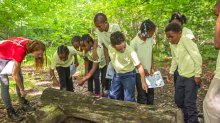

Yes, Field Trips Are Worth the Effort
Culturally enriching trips can boost grades and decrease absences and behavioral infractions, new research reveals.
As a teacher, Elena Aguilar often looked for opportunities to get her students out of the classroom and into different neighborhoods or natural environments. “We did the usual museum trips and science center stuff, but I loved the trips which pushed them into unfamiliar territory,” writes Aguilar , an instructional coach and author. Nudging kids out of their comfort zones, she says, “taught them about others as well as themselves. It helped them see the expansiveness of our world and perhaps inspired them to think about what might be available to them out there.”
Aguilar’s thinking made an impact: 15 years after traveling with her third-grade class to Yosemite National Park, a student contacted Aguilar on Facebook to thank her for the life-changing excursion. “You changed our lives with that trip,” the student wrote. “It's what made me want to be a teacher, to be able to give that same gift to other kids.”
As schools grapple with pandemic-related concerns about balancing in-seat instructional time with non-essentials like trips, new research published in The Journal of Human Resources argues that field trips, and the vital educational experiences that they provide—whether it’s a visit to a local museum or a big commitment like Aguilar’s national park trip—deliver a host of positive social and academic outcomes and are worth the effort.
“The pandemic should not keep schools from providing these essential cultural experiences forever,” asserts Jay P. Greene , one of the study’s co-authors and a senior research fellow at the Heritage Foundation, in an opinion piece for the Daily News . “If schools make culturally-enriching field trips an integral part of the education experience, all students—especially those whose parents have a harder time accessing these experiences on their own—would benefit.”
In the study, researchers assigned more than 1,000 fourth- and fifth-grade students in Atlanta to two groups. One group participated in three to six “culturally-enriching” field trips—visits to an art museum, a live theater performance, and a symphony concert—while students in the control group stayed put in class. The outcome? Kids in the field trip group “scored higher on end-of-grade exams, received higher course grades, were absent less often, and had fewer behavioral infractions,” compared to students in the control group, according to a ScienceDaily brief . Benefits lasted two to three years, Greene writes, and were “most visible when students were in middle school.”
“We are able to demonstrate that a relatively simple intervention—and we consider it pretty low-touch; three field trips in a year, maybe six field trips in two years—can actually have some substantial impacts,” says lead study author Heidi Holmes Erickson in an interview with The 74 . “They’re not just limited to social benefits. It shows that smaller interventions can actually have some significant effects on academics as well.”
Field trips aren’t a threat to in-class instruction, Erickson notes, they’re a tool to help bolster engagement and expand students’ horizons. “It's possible to expose students to a broader world and have a culturally enriching curriculum without sacrificing academic outcomes, and it may actually improve academic outcomes,” Erickson says. Far from harming test scores, the researchers found that culturally rich excursions reinforce academics and “students who participated in these field trips were doing better in class.”
Meanwhile, class trips don't need to be elaborate productions to make an impact: small excursions outside the classroom—"low-touch," as the researchers call them—can pack a punch. Here’s how three educators recommend dialing it back with low-stakes options that are both engaging and stimulating for students, but might not require days to prepare and plan:
Make Them Bite-Sized : Instead of allocating an entire day to a field trip, educational consultant Laurel Schwartz takes her classes on micro field trips , or “short outings that can be completed in a single class period.” These real-world encounters, she says, are especially beneficial for English learners and world language students. A micro field trip to a nearby park or around school grounds, for example, can be a great opportunity to “enhance a unit on nature and wildlife while reinforcing vocabulary for senses, colors, and the concepts of quantity and size,” Schwartz writes. “Afterwards, students might write descriptive stories set in the place you visited using vocabulary collected and defined together by the class.”
Try Teacher-Less Trips : To encourage exploration and learning outside of the classroom, former social studies teacher Arch Grieve removes himself from the equation with teacher-less field trips rooted in students’ local communities. Grieve only suggests options that are directly tied to a unit being discussed in class—like attending a talk at a local university or visiting a museum or cultural festival—and offers extra credit to incentivize students. “These trips allow for a greater appreciation of my subject matter than is possible in the school setting, and perhaps best of all, there's little to no planning involved.”
Explore Virtual Options : It may not be as fun as visiting in person, but the Internet makes it possible to visit museums like The National Gallery of London and The Vatican Museums without leaving the school building. Middle school English teacher Laura Bradley likes to search the Museums for Digital Learning website by topic, keyword, and grade level, to find lessons and activities that meet her unique curricular needs. The site grants access to digitized museum collections, 3D models, audio files, documents, images, and videos.

- The Journal
- Vol. 14, No. 1
The Educational Value of Field Trips
Jay P. Greene
Brian Kisida
Daniel H. Bowen
Jay P. Greene joined EdNext Editor-in-chief Marty West to discuss the benefits of field trips, including how seeing live theater is a more enriching experience to students, on the EdNext podcast .

Crystal Bridges; Crystal Bridges Museum of American Art; School Tour © 2013 Stephen Ironside/Ironside Photography Bo Bartlett – “The Box” – 2002 • Oil on Linen • 82 x 100 – Photographer is Karen Mauch
The school field trip has a long history in American public education. For decades, students have piled into yellow buses to visit a variety of cultural institutions, including art, natural history, and science museums, as well as theaters, zoos, and historical sites. Schools gladly endured the expense and disruption of providing field trips because they saw these experiences as central to their educational mission: schools exist not only to provide economically useful skills in numeracy and literacy, but also to produce civilized young men and women who would appreciate the arts and culture. More-advantaged families may take their children to these cultural institutions outside of school hours, but less-advantaged students are less likely to have these experiences if schools do not provide them. With field trips, public schools viewed themselves as the great equalizer in terms of access to our cultural heritage.
Today, culturally enriching field trips are in decline. Museums across the country report a steep drop in school tours. For example, the Field Museum in Chicago at one time welcomed more than 300,000 students every year. Recently the number is below 200,000. Between 2002 and 2007, Cincinnati arts organizations saw a 30 percent decrease in student attendance. A survey by the American Association of School Administrators found that more than half of schools eliminated planned field trips in 2010–11.
The decision to reduce culturally enriching field trips reflects a variety of factors. Financial pressures force schools to make difficult decisions about how to allocate scarce resources, and field trips are increasingly seen as an unnecessary frill. Greater focus on raising student performance on math and reading standardized tests may also lead schools to cut field trips. Some schools believe that student time would be better spent in the classroom preparing for the exams. When schools do organize field trips, they are increasingly choosing to take students on trips to reward them for working hard to improve their test scores rather than to provide cultural enrichment. Schools take students to amusement parks, sporting events, and movie theaters instead of to museums and historical sites. This shift from “enrichment” to “reward” field trips is reflected in a generational change among teachers about the purposes of these outings. In a 2012‒13 survey we conducted of nearly 500 Arkansas teachers, those who had been teaching for at least 15 years were significantly more likely to believe that the primary purpose of a field trip is to provide a learning opportunity, while more junior teachers were more likely to see the primary purpose as “enjoyment.”
If schools are de-emphasizing culturally enriching field trips, has anything been lost as a result? Surprisingly, we have relatively little rigorous evidence about how field trips affect students. The research presented here is the first large-scale randomized-control trial designed to measure what students learn from school tours of an art museum.
We find that students learn quite a lot. In particular, enriching field trips contribute to the development of students into civilized young men and women who possess more knowledge about art, have stronger critical-thinking skills, exhibit increased historical empathy, display higher levels of tolerance, and have a greater taste for consuming art and culture.
Design of the Study and School Tours
The 2011 opening of the Crystal Bridges Museum of American Art in Northwest Arkansas created the opportunity for this study. Crystal Bridges is the first major art museum to be built in the United States in the last four decades, with more than 50,000 square feet of gallery space and an endowment in excess of $800 million. Portions of the museum’s endowment are devoted to covering all of the expenses associated with school tours. Crystal Bridges reimburses schools for the cost of buses, provides free admission and lunch, and even pays for the cost of substitute teachers to cover for teachers who accompany students on the tour.
Because the tour is completely free to schools, and because Crystal Bridges was built in an area that never previously had an art museum, there was high demand for school tours. Not all school groups could be accommodated right away. So our research team worked with the staff at Crystal Bridges to assign spots for school tours by lottery. During the first two semesters of the school tour program, the museum received 525 applications from school groups representing 38,347 students in kindergarten through grade 12. We created matched pairs among the applicant groups based on similarity in grade level and other demographic factors. An ideal and common matched pair would be adjacent grades in the same school. We then randomly ordered the matched pairs to determine scheduling prioritization. Within each pair, we randomly assigned which applicant would be in the treatment group and receive a tour that semester and which would be in the control group and have its tour deferred.
We administered surveys to 10,912 students and 489 teachers at 123 different schools three weeks, on average, after the treatment group received its tour. The student surveys included multiple items assessing knowledge about art as well as measures of critical thinking, historical empathy, tolerance, and sustained interest in visiting art museums. Some groups were surveyed as late as eight weeks after the tour, but it was not possible to collect data after longer periods because each control group was guaranteed a tour during the following semester as a reward for its cooperation. There is no indication that the results reported below faded for groups surveyed after longer periods.
We also assessed students’ critical-thinking skills by asking them to write a short essay in response to a painting that they had not previously seen. Finally, we collected a behavioral measure of interest in art consumption by providing all students with a coded coupon good for free family admission to a special exhibit at the museum to see whether the field trip increased the likelihood of students making future visits.
All results reported below are derived from regression models that control for student grade level and gender and make comparisons within each matched pair, while taking into account the fact that students in the matched pair of applicant groups are likely to be similar in ways that we are unable to observe. Standard validity tests confirmed that the survey items employed to generate the various scales used as outcomes measured the same underlying constructs.
The intervention we studied is a modest one. Students received a one-hour tour of the museum in which they typically viewed and discussed five paintings. Some students were free to roam the museum following their formal tour, but the entire experience usually involved less than half a day. Instructional materials were sent to teachers who went on a tour, but our survey of teachers suggests that these materials received relatively little attention, on average no more than an hour of total class time. The discussion of each painting during the tour was largely student-directed, with the museum educators facilitating the discourse and providing commentary beyond the names of the work and the artist and a brief description only when students requested it. This format is now the norm in school tours of art museums. The aversion to having museum educators provide information about works of art is motivated in part by progressive education theories and by a conviction among many in museum education that students retain very little factual information from their tours.
Recalling Tour Details. Our research suggests that students actually retain a great deal of factual information from their tours. Students who received a tour of the museum were able to recall details about the paintings they had seen at very high rates. For example, 88 percent of the students who saw the Eastman Johnson painting At the Camp—Spinning Yarns and Whittling knew when surveyed weeks later that the painting depicts abolitionists making maple syrup to undermine the sugar industry, which relied on slave labor. Similarly, 82 percent of those who saw Norman Rockwell’s Rosie the Riveter could recall that the painting emphasizes the importance of women entering the workforce during World War II. Among students who saw Thomas Hart Benton’s Ploughing It Under , 79 percent recollected that it is a depiction of a farmer destroying his crops as part of a Depression-era price support program. And 70 percent of the students who saw Romare Bearden’s Sacrifice could remember that it is part of the Harlem Renaissance art movement. Since there was no guarantee that these facts would be raised in student-directed discussions, and because students had no particular reason for remembering these details (there was no test or grade associated with the tours), it is impressive that they could recall historical and sociological information at such high rates.
These results suggest that art could be an important tool for effectively conveying traditional academic content, but this analysis cannot prove it. The control-group performance was hardly better than chance in identifying factual information about these paintings, but they never had the opportunity to learn the material. The high rate of recall of factual information by students who toured the museum demonstrates that the tours made an impression. The students could remember important details about what they saw and discussed.
Critical Thinking. Beyond recalling the details of their tour, did a visit to an art museum have a significant effect on students? Our study demonstrates that it did. For example, students randomly assigned to receive a school tour of Crystal Bridges later displayed demonstrably stronger ability to think critically about art than the control group.
During the first semester of the study, we showed all 3rd- through 12th-grade students a painting they had not previously seen, Bo Bartlett’s The Box . We then asked students to write short essays in response to two questions: What do you think is going on in this painting? And, what do you see that makes you think that? These are standard prompts used by museum educators to spark discussion during school tours.
We stripped the essays of all identifying information and had two coders rate the compositions using a seven-item rubric for measuring critical thinking that was developed by researchers at the Isabella Stewart Gardner Museum in Boston. The measure is based on the number of instances that students engaged in the following in their essays: observing, interpreting, evaluating, associating, problem finding, comparing, and flexible thinking. Our measure of critical thinking is the sum of the counts of these seven items. In total, our research team blindly scored 3,811 essays. For 750 of those essays, two researchers scored them independently. The scores they assigned to the same essay were very similar, demonstrating that we were able to measure critical thinking about art with a high degree of inter-coder reliability.
We express the impact of a school tour of Crystal Bridges on critical-thinking skills in terms of standard-deviation effect sizes. Overall, we find that students assigned by lottery to a tour of the museum improve their ability to think critically about art by 9 percent of a standard deviation relative to the control group. The benefit for disadvantaged groups is considerably larger (see Figure 1). Rural students, who live in towns with fewer than 10,000 people, experience an increase in critical-thinking skills of nearly one-third of a standard deviation. Students from high-poverty schools (those where more than 50 percent of students receive free or reduced-price lunches) experience an 18 percent effect-size improvement in critical thinking about art, as do minority students.

A large amount of the gain in critical-thinking skills stems from an increase in the number of observations that students made in their essays. Students who went on a tour became more observant, noticing and describing more details in an image. Being observant and paying attention to detail is an important and highly useful skill that students learn when they study and discuss works of art. Additional research is required to determine if the gains in critical thinking when analyzing a work of art would transfer into improved critical thinking about other, non-art-related subjects.
Historical Empathy. Tours of art museums also affect students’ values. Visiting an art museum exposes students to a diversity of ideas, peoples, places, and time periods. That broadening experience imparts greater appreciation and understanding. We see the effects in significantly higher historical empathy and tolerance measures among students randomly assigned to a school tour of Crystal Bridges.
Historical empathy is the ability to understand and appreciate what life was like for people who lived in a different time and place. This is a central purpose of teaching history, as it provides students with a clearer perspective about their own time and place. To measure historical empathy, we included three statements on the survey with which students could express their level of agreement or disagreement: 1) I have a good understanding of how early Americans thought and felt; 2) I can imagine what life was like for people 100 years ago; and 3) When looking at a painting that shows people, I try to imagine what those people are thinking. We combined these items into a scale measuring historical empathy.
Students who went on a tour of Crystal Bridges experience a 6 percent of a standard deviation increase in historical empathy. Among rural students, the benefit is much larger, a 15 percent of a standard deviation gain. We can illustrate this benefit by focusing on one of the items in the historical empathy scale. When asked to agree or disagree with the statement, “I have a good understanding of how early Americans thought and felt,” 70 percent of the treatment-group students express agreement compared to 66 percent of the control group. Among rural participants, 69 percent of the treatment-group students agree with this statement compared to 62 percent of the control group. The fact that Crystal Bridges features art from different periods in American history may have helped produce these gains in historical empathy.
Tolerance. To measure tolerance we included four statements on the survey to which students could express their level of agreement or disagreement: 1) People who disagree with my point of view bother me; 2) Artists whose work is critical of America should not be allowed to have their work shown in art museums; 3) I appreciate hearing views different from my own; and 4) I think people can have different opinions about the same thing. We combined these items into a scale measuring the general effect of the tour on tolerance.
Overall, receiving a school tour of an art museum increases student tolerance by 7 percent of a standard deviation. As with critical thinking, the benefits are much larger for students in disadvantaged groups. Rural students who visited Crystal Bridges experience a 13 percent of a standard deviation improvement in tolerance. For students at high-poverty schools, the benefit is 9 percent of a standard deviation.
The improvement in tolerance for students who went on a tour of Crystal Bridges can be illustrated by the responses to one of the items within the tolerance scale. When asked about the statement, “Artists whose work is critical of America should not be allowed to have their work shown in art museums,” 35 percent of the control-group students express agreement. But for students randomly assigned to receive a school tour of the art museum, only 32 percent agree with censoring art critical of America. Among rural students, 34 percent of the control group would censor art compared to 30 percent for the treatment group. In high-poverty schools, 37 percent of the control-group students would censor compared to 32 percent of the treatment-group students. These differences are not huge, but neither is the intervention. These changes represent the realistic improvement in tolerance that results from a half-day experience at an art museum.
Interest in Art Museums. Perhaps the most important outcome of a school tour is whether it cultivates an interest among students in returning to cultural institutions in the future. If visiting a museum helps improve critical thinking, historical empathy, tolerance, and other outcomes not measured in this study, then those benefits would compound for students if they were more likely to frequent similar cultural institutions throughout their life. The direct effects of a single visit are necessarily modest and may not persist, but if school tours help students become regular museum visitors, they may enjoy a lifetime of enhanced critical thinking, tolerance, and historical empathy.
We measured how school tours of Crystal Bridges develop in students an interest in visiting art museums in two ways: with survey items and a behavioral measure. We included a series of items in the survey designed to gauge student interest:
• I plan to visit art museums when I am an adult.
• I would tell my friends they should visit an art museum.
• Trips to art museums are interesting.
• Trips to art museums are fun.
• Would your friend like to go to an art museum on a field trip?
• Would you like more museums in your community?
• How interested are you in visiting art museums?
• If your friends or family wanted to go to an art museum, how interested would you be in going?
Interest in visiting art museums among students who toured the museum is 8 percent of a standard deviation higher than that in the randomized control group. Among rural students, the increase is much larger: 22 percent of a standard deviation. Students at high-poverty schools score 11 percent of a standard deviation higher on the cultural consumer scale if they were randomly assigned to tour the museum. And minority students gain 10 percent of a standard deviation in their desire to be art consumers.
One of the eight items in the art consumer scale asked students to express the extent to which they agreed or disagreed with the statement, “I would tell my friends they should visit an art museum.” For all students who received a tour, 70 percent agree with this statement, compared to 66 percent in the control group. Among rural participants, 73 percent of the treatment-group students agree versus 63 percent of the control group. In high-poverty schools, 74 percent would recommend art museums to their friends compared to 68 percent of the control group. And among minority students, 72 percent of those who received a tour would tell their friends to visit an art museum, relative to 67 percent of the control group. Students, particularly those from disadvantaged backgrounds, are more likely to have positive feelings about visiting museums if they receive a school tour.
We also measured whether students are more likely to visit Crystal Bridges in the future if they received a school tour. All students who participated in the study during the first semester, including those who did not receive a tour, were provided with a coupon that gave them and their families free entry to a special exhibit at Crystal Bridges. The coupons were coded so that we could determine the applicant group to which students belonged. Students had as long as six months after receipt of the coupon to use it.
We collected all redeemed coupons and were able to calculate how many adults and youths were admitted. Though students in the treatment group received 49 percent of all coupons that were distributed, 58 percent of the people admitted to the special exhibit with those coupons came from the treatment group. In other words, the families of students who received a tour were 18 percent more likely to return to the museum than we would expect if their rate of coupon use was the same as their share of distributed coupons.
This is particularly impressive given that the treatment-group students had recently visited the museum. Their desire to visit a museum might have been satiated, while the control group might have been curious to visit Crystal Bridges for the first time. Despite having recently been to the museum, students who received a school tour came back at higher rates. Receiving a school tour cultivates a taste for visiting art museums, and perhaps for sharing the experience with others.
Disadvantaged Students
One consistent pattern in our results is that the benefits of a school tour are generally much larger for students from less-advantaged backgrounds. Students from rural areas and high-poverty schools, as well as minority students, typically show gains that are two to three times larger than those of the total sample. Disadvantaged students assigned by lottery to receive a school tour of an art museum make exceptionally large gains in critical thinking, historical empathy, tolerance, and becoming art consumers.
It appears that the less prior exposure to culturally enriching experiences students have, the larger the benefit of receiving a school tour of a museum. We have some direct measures to support this explanation. To isolate the effect of the first time visiting the museum, we truncated our sample to include only control-group students who had never visited Crystal Bridges and treatment-group students who had visited for the first time during their tour. The effect for this first visit is roughly twice as large as that for the overall sample, just as it is for disadvantaged students.
In addition, we administered a different version of our survey to students in kindergarten through 2nd grade. Very young students are less likely to have had previous exposure to culturally enriching experiences. Very young students make exceptionally large improvements in the observed outcomes, just like disadvantaged students and first-time visitors.
When we examine effects for subgroups of advantaged students, we typically find much smaller or null effects. Students from large towns and low-poverty schools experience few significant gains from their school tour of an art museum. If schools do not provide culturally enriching experiences for these students, their families are likely to have the inclination and ability to provide those experiences on their own. But the families of disadvantaged students are less likely to substitute their own efforts when schools do not offer culturally enriching experiences. Disadvantaged students need their schools to take them on enriching field trips if they are likely to have these experiences at all.
Policy Implications
School field trips to cultural institutions have notable benefits. Students randomly assigned to receive a school tour of an art museum experience improvements in their knowledge of and ability to think critically about art, display stronger historical empathy, develop higher tolerance, and are more likely to visit such cultural institutions as art museums in the future. If schools cut field trips or switch to “reward” trips that visit less-enriching destinations, then these important educational opportunities are lost. It is particularly important that schools serving disadvantaged students provide culturally enriching field trip experiences.
This first-ever, large-scale, random-assignment experiment of the effects of school tours of an art museum should help inform the thinking of school administrators, educators, policymakers, and philanthropists. Policymakers should consider these results when deciding whether schools have sufficient resources and appropriate policy guidance to take their students on tours of cultural institutions. School administrators should give thought to these results when deciding whether to use their resources and time for these tours. And philanthropists should weigh these results when deciding whether to build and maintain these cultural institutions with quality educational programs. We don’t just want our children to acquire work skills from their education; we also want them to develop into civilized people who appreciate the breadth of human accomplishments. The school field trip is an important tool for meeting this goal.
Jay P. Greene is professor of education reform at the University of Arkansas, where Brian Kisida is a senior research associate and Daniel H. Bowen is a doctoral student.
Additional materials, including a supplemental study and a methodological appendix , are available.
For more, please see “ The Top 20 Education Next Articles of 2023 .”
This article appeared in the Winter 2014 issue of Education Next . Suggested citation format:
Greene, J.P., Kisida, B., and Bowen, D.H. (2014). The Educational Value of Field Trips: Taking students to an art museum improves critical thinking skills, and more . Education Next , 14(1), 78-86.
Last Updated
License this Content
Latest Issue
Spring 2024.
Vol. 24, No. 2
We Recommend You Read
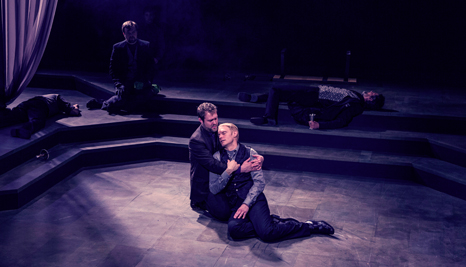
Learning from Live Theater
Students realize gains in knowledge, tolerance, and more
by Jay P. Greene
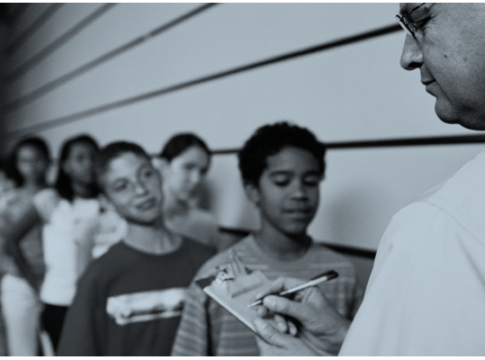
Getting Ahead by Staying Behind
An evaluation of Florida’s program to end social promotion

Straight Up Conversation: Scholar Jay Greene on the Importance of Field Trips
by Frederick Hess
- Cash Rewards Credit Card
- Personal Loan
- Home Mortgage
- Student Loan
- Self-Guided Planning
- Planning with a Financial Professional
- 403(b) Plans
- Traditional & Roth IRAs
- Group Term Life Insurance
- Accidental Death and Dismemberment Insurance
- Guaranteed Issue Life Insurance
- Accident and Injury Insurance
- Disability Income Protection
- Dental and Vision Insurance
- Pet Health Insurance
- Medicare Supplement Insurance
- Auto & Home Insurance
- Renters Insurance
- Discount Marketplace
- Discount Tickets
- Auto Buying
- Wireless Program
- Complimentary Life Insurance
- Student Debt Navigator Tool
- Mental Health App
- Travel Rewards
- Job Layoff Assistance
- Disaster Relief Assistance
- Family & Wellness
- Life Insurance Protection
- Living in Retirement
- Paying for College
- Personal Finance
- Retirement Learning Center
- Shopping Discounts
- Student Loan Debt
- Travel & Vacations
Get Started
Create an account to get started, or if you already have an account, sign in below
How Field Trips Boost Students’ Lifelong Success
Educational trips contribute to better student outcomes in school and beyond. maximize the impact of field trips on students with these 9 ideas..
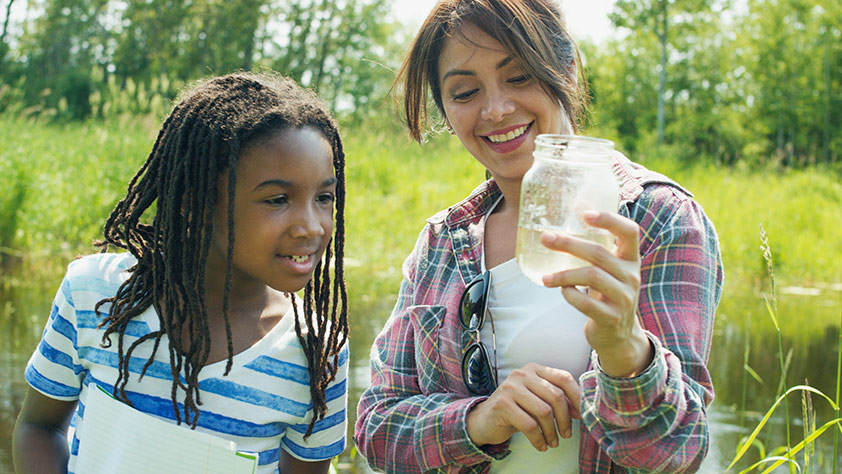
by NEA Member Benefits
Here’s why field trips are important
The study found that regardless of gender, ethnicity or socioeconomic status, children who take school trips have better grades (59%), higher graduation rates from high school (95%) and college (63%) and greater income (12% higher annually).
In fact, 89% said educational trips had a positive, lasting impact on their education and career because enriching field trips made them more engaged, intellectually curious, and interested in and out of school.
“When I was growing up, my parents said the 3 Rs (reading, writing and arithmetic) were important,” says Roger Dow, president and CEO of the U.S. Travel Association. “But for my kids, I made ‘roaming’ the fourth R. We live in a global society, and if you don’t see outside the neighborhood you grow up in, the world will pass you by. Traveling has opened my kids’ eyes. It’s made them more confident and inspired them to reach outside their normal environment to learn and obtain skills to bring them to the next level.”
More benefits of school trips
Margy Natalie, acting onsite learning manager at the Smithsonian Institution’s National Air and Space Museum , notes the powerful effect school trips can have on student learning: “Field trips give students the opportunity to learn in a natural environment and experience things first-hand and from primary resources, rather than texts; real objects rather than photos.”
Carylann Assante, executive director for Student & Youth Travel Association (SYTA) and SYTA Youth Foundation , seconds the notion that real world exploration outside the classroom can bolster students’ critical thinking skills. “Today’s students are visual learners, and a field trip lets them touch, feel and listen to what they’re learning about, which helps them build on classroom instruction, gain a better understanding of topics, build cultural understanding and tolerance, and expose them to worlds outside their own.”
Assante says field trips are particularly important for disadvantaged students, as they provide students with unique opportunities that level the playing field. “Field trips give diverse and financially-in-need students equal opportunity to experience things outside classroom that their families may not be able to afford,” she says.
A field trip can also be the first trip a student takes without their parents, so it builds independence, as well. “There’s a reason people say I need to get away and recharge my batteries. There’s truth to it,” Dow says. “If I was a school system looking at these stats, I couldn’t afford not to make this a part of our curriculum.”
Tips for planning a successful field trip
You’ve decided to plan an educational field trip for your class, whether it’s to an art museum, science museum, historic site, aquarium, planetarium or some other immersive, interactive learning environment. Now, you need to know what steps to take to ensure a successful field trip. Keep these expert tips in mind:
1. Look around your region for interesting day trips
Dow suggests a planned field trip so you and your class can easily explore an aspect of local history on a day trip. “You can take a quick drive and see the history of places around you—there’s tons of inexpensive things teachers can do that will have a phenomenal impact,” he says.
2. Do your homework
Ideally, you could scope out the destination in advance to ensure the field trip will produce your desired learning experience. “Plan carefully, do your research, visit the site before you plan, ask questions and take recommendations of staff,” Natalie suggests.
3. Follow protocol
“Teachers need to review their school’s policies on field trips in advance and prepare the forms with specific learning objectives and how the field trip will accomplish those objectives tied to their school's core curriculum,” Assante says. Most museums, attractions and locations have education materials to explain how their attraction supports teacher lesson plans and educational curriculums.
4. Involve your students in the preparation
Prepare your class for their upcoming school field trip by getting them interested and excited about what their experience may be like. “Discuss the goals of the field trip in advance, talk about what they will see and what they should learn,” Natalie says.
Consider letting the class pick the field trip destination so they have ownership and will feel invested in it, Assante suggests.
5. Make trips relevant to classroom instruction
“Base your field trips on your content area. If you’re studying ancient Egypt, don’t take them to Jamestown,” Natalie says. “Focus on how the trip fits into your content or another educational goal. A field trip should be a day out, not a day off.”
6. Incorporate technology
“Many students use their mobile devices to engage with the field trip in the classroom with apps and blogs,” says Assante. This can help create an interactive learning experience that engages students during the trip, and then reconnect with that experience later in the classroom and at home.
7. Engage the senses
Select a field trip destination where students won’t be sitting down, like they typically do in the classroom. They should be able to touch, explore and share their experiences, Assante says.
8. Fundraise to cover any extra costs
“Engage the parents, PTA or other teachers to support school-wide field trips and help raise the funds so everyone can afford to attend the trip,” says Assante, who also notes some large companies even offer field trip grants.
If you’re looking for deals on tickets to attractions and events, see if you can cut the costs of the admissions fees with the NEA Discount Ticket Program .
9. Follow up on the lessons learned
“Students are much more likely to write about an experience they recently had, like the field trip, than a random prompt,” says Natalie, who recommends following up with graded assignments. “Have each student write about their favorite artifact or activity on the field trip, or why this field trip is important to keep, or conversely, how a different field trip might be better.”
Search for travel deals for NEA members
Nea discount tickets program.
Enjoy unique access and deep discounts to must-see places, events and shows. Get up to 40% off tickets to Disney World, Universal Studios, Cirque du Soleil, AMC Movies, Broadway shows, concerts, sporting events and much more!
NEA Travel: Car Rental
Save up to 25% when you rent a car through the NEA Travel Car Rental program. Compare rates at companies such as Avis, Budget, Enterprise and Hertz and pick the best deal for your budget.
NEA Travel: Hotels
Save up to 60% when you book through NEA Travel. And with guaranteed price matching you can rest assured that you’re getting the best hotel price.
NEA Travel: Flights
Find low fares and book a flight to your favorite locales or far-off destinations. Compare rates from multiple carriers to find the best trip for you.
NEA Travel: Cruises
You’ll find the best cruise deals, exclusive offers and amenities from the top cruise lines such as Disney, Carnival and Royal Caribbean.
You might also like

Your Pass to Fun: Get Discounts on Tickets to Popular Attractions
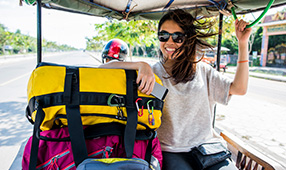
8 Little-Known Vacation Deals for Teachers
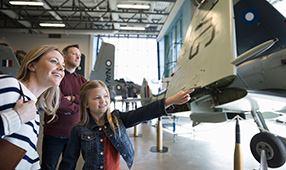
How to Enjoy Great Museums for Free
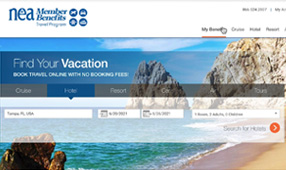
Finding Travel Deals Is Easy With the NEA Travel Program
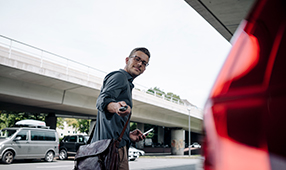
Car Rental Made Quick and Easy

How to Plan a Vacation Without Going Into Debt

Easy Ways to Save Money on a Road Trip
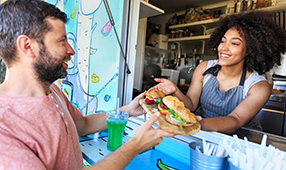
How to Dine on a Dime While Traveling

Travel the World With Grants Just for Educators

Don’t Miss These Top Discounts for Teachers and Education Professionals

Get Easy Access to Our Most Requested Deals and Discounts

A New Way for NEA Members to Find Exclusive Shopping Discounts
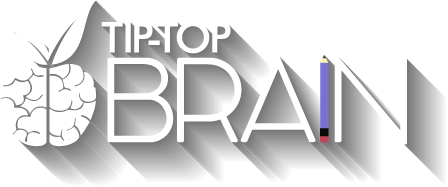
- About Tip-Top Brain
- Back To School
- Middle School
- Our Programs
- Special Education
- Testing & Test Prep
- Virtual Learning
- Personalized Tutoring
- Private Tutoring
- Homework Help
- Essay Writing Help
- March 9, 2022
- Childhood Education News
The 4 Big Benefits of Field Trips for Kids
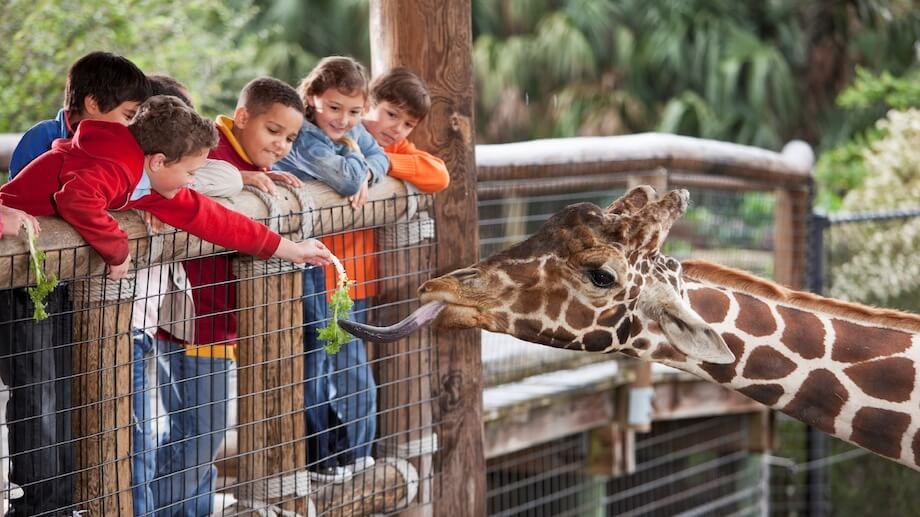
Share This Post
When thinking back to my childhood days, there is nothing more vivid than my memories of school field trips. Field trips ranging from museums, zoos, animal farms, and the pumpkin patch all come to mind. Many of us have had the privilege of experiencing the benefits of field trips firsthand. We must understand that field trips are amazing tools to extend the classroom to the real world. As educators and parents, we can take advantage of the benefits of field trips to more effectively promote real-world learning, social-emotional development, and academic success. The benefits of field trips in early and childhood education can be tremendous!
1. Field Trips and Real-World Learning
Children are active learners as they are constantly making connections with the world around them. With an innate drive to learn and explore, field trips are the perfect way for children to learn outside of a typical classroom setting.
Before a trip, prepare your students for the unique environment. Allow students to prepare themselves by informing them of where they will be going, what they will do, the things they will see, proper clothing, and appropriate behavior. If “there will be live animals, discuss the importance of soft touch if handling is allowed. If they will be taking a hike through a hilly or wet location, talk about fear of heights or getting their feet wet.” To promote real-world learning be sure to make connections to the curriculum. It is important to emphasize the purpose and intent of the field trip. This way students will be prepared, excited, and hungry to learn more!
2. Benefits of Field Trips Include Social-Emotional Development
While the push for academics in early and childhood education has created a decline in field trips, we must understand that field trips play a massive role in social-emotional development. Field trips allow students to collaborate with their peers, explore new environments, make connections, problem solve, develop trust, and empathy. Unfortunately, we have seen field trips being used as a positive reinforcement for good behavior instead of being used as a tool to enhance social-emotional development.
3. Field Trips Boost Academic Success
Field trips are both fun and memorable ways to promote academic success. One study indicates that “regardless of gender, ethnicity or socioeconomic status, youth who take educational trips have better grades because the trips made them more engaged, intellectually curious.” With culturally enriching field trips, students can make connections to other educational fields, gain first-hand experiences, and understand concepts on a deeper level.
Students benefit as they participate in unique experiences that build on their learning. Most importantly, field trips pique the interest of young-learners, a key factor in childrens’ motivation to learn, inspiring students to engage with concepts in ways that are relevant and meaningful. Field trips reinforce topics and ideas learned in the classroom. To further promote academic success, educators can provide both pre-trip and follow-up instruction!
4. Virtual Field Trips Boost Learning Too
Virtual field trips are terrific ways to implement interactive technology in your child’s life! Virtual field trips can range from an online experience to the zoo, aquarium, animal farm, pumpkin patch, rainforests, etc.! Virtual field trips are viable options for many as they can be more accessible for families and educators! For more accessible options, consider walking around your neighborhood, visiting local shops, or even going to your neighborhood park. Virtual field trips are amazing as they allow children to explore with technology in ways that are interactive!
Awesome Field Trips for Kids
- The Drawing Center
- Brooklyn Childrens Museum
- Environmental Study Center
- New York Aquarium
- American Museum of Natural History
- Childrens Museum of the Arts
- New York Hall of Science
- Queens County Farm Museum
- Queens Botanical Garden
- Virtual Field Trips
All in all, the benefits of field trips are undoubtedly tremendous as they promote real-world learning, social-emotional development, and academic success. We must continue to support our educators and advocate for meaningful experiences. Our children deserve opportunities to explore and make meaning outside of the classroom too. Do not forget to document your amazing field trips to look back on!
Join Our Community
Subscribe to Our Blog for the Latest Updates and Insights!
More To Explore

How to Find a High School Internship (That Are A Perfect Fit!)

The Bill Set to Shrink NYC Class Sizes

2 Best Practices to Create a Loving Environment for Kids
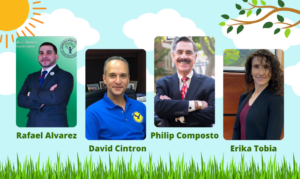
Meet the D30 Superintendent Candidates
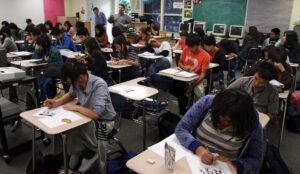
NYC Class Sizes 101: The Great Debate
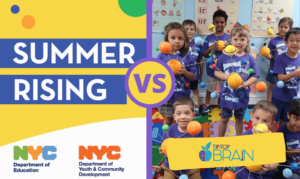
Our Summer STEAM Camp Vs. NYC Summer Rising
(718) 440-3541
2171 Steinway St. Astoria, NY
Tip-Top Brain empowers students to unlock their potential through quality education, positive learning environment, and dedicated instructors.
Useful Links
Blogs & articles.

Our Newsletter
Subscribe to our newsletter to stay informed and receive valuable parenting tips.
- Terms & Conditions
Please complete this form and our program coordinator will reach out to you shortly.
We're committed to your privacy. Tip-Top Brain uses the information you provide to us to contact you about our relevant content and services. You may unsubscribe from these communications at any time.
Field Trips are Valuable Learning Experiences
This Knowledge Base article was written collaboratively with contributions from Karen Knutson and CAISE Admin. This article was migrated from a previous version of the Knowledge Base. The date stamp does not reflect the original publication date.
Field trips are recognized as important moments in learning; a shared social experience that provides the opportunity for students to encounter and explore novel things in an authentic setting. Their importance is supported by professional organizations such as the National Science Teachers Association which asserts field trips can “deepen and enhance” classroom study (NSTA 1999) and the National Research Council who assert a quality science curriculum is one that extends beyond the walls of the classroom (1996).
Findings from Research and Evaluation
Outcomes of field trips.
It is important to recognize that learning outcomes from field trips can range from cognitive to affective outcomes (for a review see: Dewitt & Storksdieck, 2008; also Learning Science in Informal Environments (2009) . Too often, however, only cognitive gains are identified (by schools or museums) ( Kisiel, 2005 ).
Among the many potential outcomes, research has shown that field trips:
Expose students to new experiences and can increase interest and engagement in science regardless of prior interest in a topic (Kisiel, 2005; Bonderup Dohn, 2011),
Result in affective gains such as more positive feelings toward a topic (Csikszentmihalyi & Hermanson, 1995; Nadelson & Jordan, 2012).
Are experiences that can be recalled and useful long after a visit (Salmi, 2003; Falk & Dierking, 1997; Wolins, Jensen, & Ulzheimer, 1992).
Effective Models of Field Trip Experiences
Research has demonstrated that field trips can be designed to more effectively support student learning. Field trips work best when they provide support for students to explore in a personally meaningful way.
Learning in field trips is impacted by many factors (DeWitt & Storksdieck, 2008). The structure of the field trip impacts learning. Some structure is needed to best support student learning, ( Stronck, 1983 ) yet programming that is overly rigid or too aligned with classroom instruction can have a negative effect (Jensen 1994; Griffin & Symington, 1997). If students are not adequately prepared for the experience, the novelty of the setting can negatively impact learning. (Orion & Hofstein, 1994).
Prior knowledge and interests of the students impacts learning during the visit (Falk & Adelman, 2003), the social context of the visit, teacher agendas, student experiences during the field trip, and the presence or absence and quality of preparation and follow-up.
Through a meta-analysis of studies such as these, DeWitt and Osborne (2007) created a model to guide museum program development, Model of Museum Practice which, among other key elements, highlights the importance of encouraging students in the area of “joint productive activity” (p. 690). This includes the opportunity for students to be cognitively engaged and challenged, as they explore areas of personal interest and curiosity and engage in bidirectional communication with each other and adult facilitators.
A successful and quality field trip requires teacher preparation and interaction, yet often teachers are not equipped to, or do not provide this support. See: ( Schoolteacher Learning Agenda Influences Student Learning in Museums ; Griffin & Symington, 1997).
References
Behrendt, M., & Franklin, T. (2014). A Review of Research on School Field Trips and Their Value in Education. International Journal of Environmental & Science Education 9, 235-245. Doi: 10.12973/ijese.2014.213a
Bell, P., Lewenstein, B., Shouse, A. W., & Feder, M. A., (Eds.) (2009). Learning science in informal environments: People, places, and pursuits. Washington, DC: National Academies Press. Retrieved from http://informalscience.org/research/ic-000-000-002-024/LSIE
Bonderup Dohn, N. (2011). Situational interest of high school students who visit an aquarium. Science Education, 95(2), 337-357. http://informalscience.org/research/ic-000-000-008-700/Situational_Interest_of_High_School_Students_Who_Visit_an_Aquarium
Csikszentmihalyi, M., & Hermanson, K. (1995). Intrinsic motivation in museums: Why does one want to learn? In J. H. Falk & L. D. Dierking (Eds.), Public institutions for personal learning (pp.67–77). Washington, DC: American Association of Museums.
DeWitt, J. & Osborne, J. (2007). Supporting teachers on science-focused school trips: Towards an integrated framework of theory and practice. International Journal of Science Education, 29, 685-710. http://informalscience.org/research/ic-000-000-008-500/Supporting_Teachers_on_Science-Focused_Field_Trips
DeWitt, J., Storksdieck, (2008). A Short Review of School Field Trips: Key Findings from the Past and Implications for the Future. Visitor Studies Vol. 11, 2, 181-197. DOI:10.1080/10645570802355562
Falk, J. & Direking, L. (1997). School field Trips: Assessing their long-term impact. Curator, 40, 211-218. Retrieved from http://onlinelibrary.wiley.com/doi/10.1111/j.2151-6952.1997.tb01304.x/abstract
Jensen, N. (1994). Children’s perceptions of their museum experiences: A contextual perspective. Children’s Environments, 11(4), 300-324. Retrieved from http://informalscience.org/research/ic-000-000-009-681/Children ’s_Perceptions_of_Their_Museum_Experiences
Kisiel, J. F. (2005). Understanding elementary teacher motivations for science fieldtrips. Science Education, 89(6), 936 – 955. Retrieved from http://onlinelibrary.wiley.com/doi/10.1002/sce.20085/abstract
Nadelson, L., & Jordan, R. (2012). Student Attitudes Toward and Recall of Outside Day: An Environmental Science Field Trip. The Journal of Educational Research Vol. 105, Iss. 3, 2012. DOI:10.1080/00220671.2011.576715
National Research Council. (1996). National Science Education Standards. Washington, DC: National Academies Press. Retrieved from http://www.nap.edu/openbook.php?record_id=4962
National Science Teachers Association (1999). NSTA Position Statement: Informal Science Education. Retrieved from http://informalscience.org/research/ic-000-000-009-678/NSTA_Position_Statement
Salmi, H. (2003). Science centres as learning laboratories: experiences of Heureka, the Finnish Science Centre. International Journal of Technology Management, 25, 460–476. Retrieved from http://www.heureka.fi/portal/englanti/about_heureka/research/international_journal_of_technology_management/
Stronck, D. R. (1983). The comparative effects of different museum tours on children’s attitudes and learning. Journal of Research in Science Teaching, 20(4), 283 - 290. Retrieved from http://onlinelibrary.wiley.com/doi/10.1002/tea.3660200403/abstract
Wolins, I. S., Jensen, N., & Ulzheimer, R. (1992). Children’s memories of museum field trips: A qualitative study. Journal of Museum Education, 17(2), 17–27. Retrieved from http://www.jstor.org/pss/40478925
Whitesell, E. R. (2016). A Day at the Museum: The Impact of Field Trips on Middle School Science Achievement. Journal of Research in Science Teaching. D: 10.1002/tea.21322.
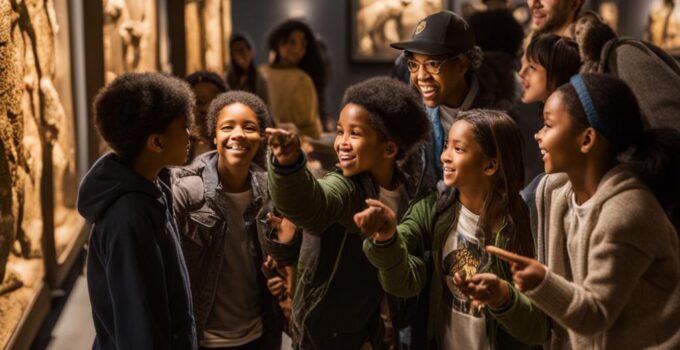
Field Trip Fundamentals: Understanding the Essence of Educational Visits
Table of Contents
Welcome to our comprehensive guide on educational visits, also known as field trips, and their importance in the learning journey of students. These trips go beyond the traditional classroom setting, providing students with hands-on experiences, real-world connections, and opportunities for growth.
Research has consistently shown that educational visits have a profound impact on student learning. Through experiential learning, students develop a deeper understanding of the concepts taught in the classroom and gain valuable knowledge. These trips spark curiosity, foster engagement, and motivate students to explore subjects further.
Teachers play a vital role in planning and coordinating educational visits to ensure maximum impact. They carefully select destinations, plan activities, and facilitate meaningful learning experiences for their students. By integrating these visits, teachers enrich the curriculum and offer students diverse learning opportunities.
Key Takeaways:
- Educational visits, or field trips, enhance student learning by providing hands-on experiences.
- Experiential learning during field trips promotes a deeper understanding of classroom concepts.
- Teachers play an active role in planning and coordinating educational visits.
- Educational visits enrich the curriculum and offer students diverse learning opportunities.
- Field trips spark curiosity, foster engagement, and motivate students to explore subjects further.
The Importance of Experiential Learning
Experiential learning is a key aspect of educational visits. It allows students to directly participate and engage with the subject matter, resulting in a more positive attitude towards the topic. Numerous studies have shown that students who participate in field trips gain valuable knowledge and develop a deeper understanding of the concepts they learn in the classroom. Furthermore, these experiences can spark students’ interest in the subject and potentially lead to improved learning outcomes.
The Benefits of Experiential Learning
During educational visits, students have the opportunity to apply theoretical knowledge in practical ways. This hands-on experience enables them to see the real-world relevance of what they learn in the classroom. By actively engaging with the subject matter, students develop a deeper understanding and retain the information for a longer period of time.
Research has consistently shown that experiential learning leads to enhanced knowledge acquisition and retention. For example, a study conducted by Smith et al. (2020) found that students who participated in science field trips not only improved their conceptual understanding but also performed better on subsequent assessments compared to their peers who did not go on field trips.
Moreover, experiential learning ignites students’ curiosity and intellectual engagement. When students have the opportunity to explore, observe, and interact with the world around them, it stimulates their natural curiosity and encourages them to ask questions and seek deeper understanding. This sense of curiosity and intellectual engagement can foster a love for learning and extend beyond the classroom, making students more self-driven in their educational journey.
Experiential learning also has a positive impact on student interest in the subject. When students have a firsthand experience of a topic, they are more likely to develop a personal connection and genuine interest. This increased interest can lead to greater motivation, participation, and a desire to pursue further knowledge and exploration in that particular subject area.
To further illustrate the importance of experiential learning, let’s take a look at a real-world example:
This immersive experience allows students to develop a deeper understanding of marine biology concepts, appreciate the complexity of marine ecosystems, and witness the real-world impact of science. By engaging in experiential learning, students not only acquire knowledge but also develop critical thinking, problem-solving, and collaboration skills that are essential for their future success.
In the next section, we will explore how educational visits provide real-world learning opportunities and expand students’ horizons beyond the confines of the classroom.
Real World Learning Through Field Trips
Field trips offer students a unique opportunity to gain real-world experience and engage in hands-on learning outside the classroom. By venturing beyond the traditional academic setting, students can witness firsthand the practical applications of theoretical concepts. These educational visits to captivating field trip destinations allow students to experience the rich cultural heritage and natural beauty of different locations, leaving a lasting impact on their understanding and appreciation of the subject matter.
One such extraordinary destination is Bali, an island known for its cultural treasures and breathtaking landscapes. Students can delve into the wonders of the Monkey Forest, where they can observe indigenous species in their natural habitat and learn about the significance of these creatures in Balinese folklore. Another remarkable field trip destination in Bali is the Ulun Danu Bratan Temple, a sacred Hindu temple located on the shores of Lake Bratan. Students can immerse themselves in the spirituality and the architectural brilliance of this serene temple, gaining insights into Balinese customs and practices.
These field trips offer students more than just a change of scenery; they provide them with real experiences and interactive learning opportunities that stimulate curiosity and foster a deeper understanding of the subject matter. Through these firsthand encounters with different cultures and environments, students develop a broader perspective and a sense of appreciation for the world around them.
Let’s take a closer look at how real-world experience and hands-on learning during educational visits can impact student learning:
Benefits of Real-World Experience
Table: Key Benefits of Real-World Experience
Real-world experience through field trips provides students with a multidimensional learning experience that cannot be replicated within the confines of a classroom. As they explore field trip destinations like Bali’s Monkey Forest and Ulun Danu Bratan Temple, students engage with real-life examples of the subjects they study, creating lasting memories and a deep connection to the material. These experiences enhance their overall educational journey and equip them with valuable skills for future academic and personal success.
Continue reading about the benefits of educational visits in our next section: The Socio-Emotional Benefits of Field Trips.
The Socio-Emotional Benefits of Field Trips
Field trips offer more than just academic learning; they also provide valuable socio-emotional benefits for students. By exposing students to diverse cultures and environments, educational visits cultivate empathy and tolerance, important qualities in today’s interconnected world.
Interacting with individuals from different backgrounds fosters empathy, allowing students to develop a deeper understanding and appreciation for others’ perspectives and experiences. Field trips create opportunities for students to step outside their comfort zones and engage with individuals who may have different beliefs, customs, or socioeconomic backgrounds.
Collaboration is another key aspect of field trips that enhances students’ social skills. Working together with their peers and adult guides during educational visits promotes effective communication, teamwork, and problem-solving. Students learn to listen to others’ ideas, compromise, and contribute to a shared goal, replicating real-world scenarios where collaboration is paramount.
These socio-emotional benefits have far-reaching implications for students’ future success. Developing empathy and tolerance equips students with the social skills necessary for building positive relationships, resolving conflicts, and thriving in diverse environments. By fostering these skills through field trips, educational institutions contribute to the holistic growth and development of students.
Examples of Socio-Emotional Benefits:
- Increased empathy and understanding of different cultures
- Enhanced tolerance towards others’ perspectives and experiences
- Improved communication and teamwork skills
- Development of problem-solving abilities
By embracing field trips as an integral part of education, we nurture the socio-emotional growth of students, promoting a more compassionate and inclusive society.
Academic Impact of Field Trips
Research has consistently shown the significant impact of field trips on students’ academic performance. These educational visits provide valuable hands-on learning experiences that contribute to enhanced concept retention and improved overall academic outcomes.
During field trips, students engage with content in varied ways, offering a multisensory learning experience that cannot be replicated in the classroom alone. This active participation allows students to apply theoretical knowledge to real-world contexts, deepening their understanding of the subject matter.
Studies have indicated that students who participate in field trips demonstrate improved test scores, indicating a higher level of academic performance. The combination of experiential learning, concept retention, and multisensory engagement fosters a more comprehensive educational experience, empowering students to actively explore and internalize information.
Benefits of Field Trips for Academic Performance:
- Enhanced concept retention through hands-on learning experiences
- Improved test scores and academic performance
- Deeper understanding of subject matter
- Application of theoretical knowledge in real-world contexts
- Engagement with content through multisensory learning
In summary, field trips have a profound impact on students’ academic performance by providing them with immersive learning experiences that promote concept retention and foster a deeper understanding of the subject matter. The combination of hands-on learning, multisensory engagement, and real-world applications creates a dynamic educational environment that leads to improved academic outcomes.
Enriching the Curriculum Through Field Trips
Field trips provide an opportunity to enrich the curriculum and offer students a more comprehensive learning experience. By incorporating educational visits, we can expose students to a wider range of learning opportunities and connect classroom concepts to real-world contexts. These diverse experiences allow students to gain a deeper understanding of the curriculum and make meaningful connections between different subjects.
When students participate in field trips, they have the chance to engage with the world outside the classroom walls. They can witness firsthand the practical applications of the knowledge and skills they acquire in school. Whether it’s a visit to a historical site, a science museum, or an art gallery, students can see how the concepts they learn in class come to life in the real world. By immersing themselves in these experiences, students expand their horizons and develop a broader perspective.
Field trips also provide an opportunity for curriculum expansion. Teachers have the flexibility to tailor the curriculum to the specific needs and interests of their students. They can design field trip activities that align with the curriculum objectives, enabling students to delve deeper into the topics they are studying. For example, a science field trip to a nature reserve can expand on biology lessons by allowing students to observe and study different ecosystems and the biodiversity within them.
Furthermore, field trips foster a multidisciplinary approach to learning. Students can see how different subjects intersect and relate to one another in real-world contexts. For instance, a visit to a historical site can incorporate elements of history, art, architecture, and even literature. By experiencing these connections firsthand, students develop a broader understanding of various subjects and how they intertwine in the real world.
Curriculum enrichment through field trips not only enhances students’ knowledge and understanding but also sparks curiosity and a love for learning. Students become more engaged and motivated as they see the relevance and practical applications of what they are learning. By broadening their educational experiences, we help students develop a thirst for knowledge that extends beyond the traditional confines of the classroom.
Benefits of Curriculum Enrichment through Field Trips:
- Enhanced understanding of curriculum concepts
- Meaningful connections between different subjects
- Flexibility to tailor the curriculum to student needs
- Promotion of multidisciplinary learning
- Increased student engagement and motivation
Curriculum enrichment through field trips is an invaluable tool in providing students with comprehensive learning experiences. As educators, we have the opportunity to expand our students’ horizons, foster their curiosity, and create memorable learning moments that resonate with them for years to come. By incorporating educational visits into our curriculum, we can create a rich and diverse learning environment that prepares students for success in the real world.
Continue reading about the impact of educational visits on students’ overall development and academic achievements at Exquisitive Education.
Building Lifelong Memories Through Field Trips
Field trips offer students the opportunity to create lasting memories that will stay with them for years to come. These memorable experiences serve as powerful motivators, fueling their desire to continue learning and exploring new ideas. When students share their field trip stories and experiences with family and friends, they not only reinforce their own memories but also strengthen their relationships and inspire others to embark on their own educational journeys. Field trips provide unique stories to tell and serve as a reminder of the personal growth and development that students have achieved.
Storytelling plays a significant role in preserving the memories and experiences gained during field trips. As students recount their adventures, they reinforce the knowledge and connections they formed during the trip, deepening their understanding of the subject matter. Furthermore, storytelling allows students to reflect on their own personal growth and highlight the transformative impact that field trips had on their lives.
Benefits of Building Lifelong Memories Through Field Trips
The essence of educational visits.
Educational visits, also known as field trips, offer students a hands-on experience that goes beyond the confines of the classroom. These visits provide students with the opportunity to explore and interact with different environments, cultures, and ideas. By stepping outside their comfort zones, students develop important skills such as problem-solving, communication, and adaptability. Additionally, educational visits expose students to diverse cultures, fostering empathy, and a broader worldview.
When students engage in educational visits, they have the chance to apply their knowledge in real-world contexts. Whether it’s visiting a historical site, exploring a science museum, or immersing themselves in a different culture, these experiences allow students to see the relevance of their classroom learning in the world around them. The hands-on nature of educational visits also enhances students’ understanding and retention of the subject matter.
Moreover, educational visits provide students with exposure to different cultures, fostering a sense of empathy and understanding. By interacting with people from diverse backgrounds, students develop a deeper appreciation for different perspectives and ways of life. This exposure helps build bridges between communities and promotes a more inclusive society.
Benefits of Educational Visits:
- Hands-on Experience: Educational visits provide students with practical, experiential learning opportunities that deepen their understanding.
- Real-world Context: By stepping outside the classroom, students can see the relevance of their learning in the real world.
- Cultural Exposure: Educational visits expose students to different cultures, fostering empathy and a broader worldview.
- Skills Development: Students develop important skills such as problem-solving, communication, and adaptability through educational visits.
- Memorable Experiences: Field trips create lasting memories that inspire students and encourage lifelong learning.
Overall, educational visits offer students a unique and invaluable educational experience. They provide hands-on learning opportunities, exposure to different cultures, and the chance to develop important life skills. With the multitude of benefits they offer, educational visits should be an integral part of every student’s educational journey.
Benefits for Teachers and Parents
Educational visits offer numerous benefits not only for students but also for teachers and parents. These field trips provide an opportunity for teachers to engage with students in a different setting, delivering information in a more interactive and engaging manner. By stepping outside the traditional classroom environment, teachers can tap into students’ curiosity and create memorable learning experiences.
Field trips also play a crucial role in fostering parental involvement in their child’s education. Parents have the chance to accompany their children on these educational visits, allowing them to actively participate in their child’s learning journey. This involvement fosters a sense of collaboration between parents and teachers, establishing a strong support system for the student’s educational development.
Moreover, educational visits demonstrate a commitment to providing students with a well-rounded education that extends beyond the classroom. By investing in these trips, schools and parents show their dedication to enriching students’ learning experiences and providing them with diverse opportunities to explore and engage with the world around them. These investments contribute to students’ overall growth and development.
Teacher Engagement
Educational visits rejuvenate teachers’ passion for teaching by allowing them to experiment with innovative teaching methods and interact with students outside of the usual academic environment. Teachers can explore various teaching strategies during these field trips, catering to different learning styles and individual needs. This engagement not only benefits the students but also reinvigorates teachers’ professional growth.
Parental Involvement
Field trips offer parents a unique chance to actively participate in their child’s education. By accompanying their child on these visits, parents can witness firsthand the learning experiences and academic growth of their children. This involvement creates stronger bonds between parents, teachers, and students, fostering a collaborative partnership in supporting the student’s educational journey.
Educational Investment
Investing in educational trips showcases a commitment to providing students with a comprehensive and holistic education. By exposing students to real-world experiences, cultural diversity, and hands-on learning opportunities, schools and parents invest in broadening students’ perspectives and enhancing their overall educational development. These investments contribute to students’ lifelong learning and equip them with the skills and knowledge necessary for future success.
The Value of Educational Visits
Educational visits have immense value in shaping students’ educational journey. They provide students with unique learning experiences that foster curiosity, empathy, and a deeper understanding of the world around them. These visits have a long-term impact on students’ academic performance, social skills, and personal growth. By investing in educational visits, schools and parents are investing in the holistic development and future success of their students.
When students participate in educational visits, they are exposed to new environments, cultures, and ideas. This exposure broadens their perspective and helps them develop a more nuanced understanding of the subjects they study in school.
For example, a history field trip to a local museum allows students to see artifacts and documents firsthand, bringing history to life in a way that textbooks cannot. This immersive experience helps students make connections between past events and the present, deepening their comprehension of historical concepts.
Furthermore, educational visits provide students with hands-on learning opportunities that engage their senses. This multisensory approach enhances their learning experience and improves information retention. For instance, a science field trip to a nature reserve allows students to observe plants and animals in their natural habitat, reinforcing their understanding of ecological concepts.
Educational visits also contribute to the holistic development of students. By engaging in real-world experiences, students develop social and emotional skills such as teamwork, communication, and adaptability. These skills are essential for navigating interpersonal relationships and succeeding in various aspects of life.
In summary, the value of educational visits cannot be underestimated. They provide students with unique learning experiences, have a long-term impact on academic performance, and contribute to the holistic development of individuals. Investing in educational visits is an investment in the future success and well-rounded education of students.
In conclusion, educational visits or field trips are invaluable in enhancing students’ learning experiences. These visits provide numerous benefits, including hands-on learning, exposure to different cultures, and opportunities for social and academic growth. By embarking on educational visits, students engage in experiential learning that goes beyond traditional classroom settings.
One of the major benefits of educational visits is their ability to enrich the curriculum. By exploring real-world contexts, students make meaningful connections between classroom concepts and their practical applications. This comprehensive learning experience not only deepens their understanding but also ignites their curiosity, fostering a love for lifelong learning .
Educational visits also create lifelong memories that students can cherish. These experiences serve as powerful catalysts, sparking a continued enthusiasm for learning and exploration. Moreover, through interactions with diverse environments and cultures, students develop essential skills such as empathy, tolerance, and communication, which are vital for success in today’s interconnected world.
Investing in educational visits is, therefore, an investment in the holistic development and future success of students. Through these transformative experiences, students gain valuable knowledge, skills, and a broader worldview that extends far beyond the confines of the classroom, enabling them to thrive in an ever-evolving, global society.
About The Author
Ethan Emerson
Ethan Emerson is a passionate author and dedicated advocate for the transformative power of education. With a background in teaching and a love for writing, Ethan brings a unique blend of expertise and creativity to his contributions on ExquisitiveEducation.com .His articles are a delightful mix of insightful knowledge and engaging storytelling, aiming to inspire and empower learners of all ages. Ethan's mission is to ignite the spark of curiosity and foster a love for learning in every reader.Ethan Emerson, is your companion in the realm of general education exploration. With a passion for knowledge, He delves into the intricate world of Education Expenses & Discounts , uncovering financial insights for your educational journey. From the vitality of Physical Education to the synergy of Education & Technology , Ethan's here to bridge the gap between traditional and innovative learning methods. Discover the art of crafting impressive Resume & Personal Documentation in Education , as well as insights into diverse Career Paths, Degrees & Educational Requirements . Join Ethan in navigating through a sea of Educational Courses & Classes , exploring the nuances of various Education Systems , and understanding the empowering realm of Special Education . With an eye on Teaching & Teachers , He offers a glimpse into the world of educators who shape minds. Let's unlock Studying Tips & Learning Methods that turn education into a delightful journey of growth with Exquisitive Education .
Related Posts

Unlocking Potential: What is Shared Learning in Education?

What is Distributive Education: What You Need to Know

Why Should Education Be a Priority: Unveiling the Importance
Leave a reply cancel reply.
Save my name, email, and website in this browser for the next time I comment.

- NEW! – Broadway
- Latest Guide
- Previous Editions
- NorthEast Field Trip Guide
- Southeast Field Trip Guide
- Band & Choir Trips
- Where to Go
- Site InSpections
- Field Trip Ideas
- Virtual Field Trips
Planning Advice
- Los Angeles
- New York City
- Philadelphia
- Rome, Italy
- San Francisco
- San José, Costa Rica
- Washington D.C.
Select Page
Maximizing the Educational Value of Field Trips
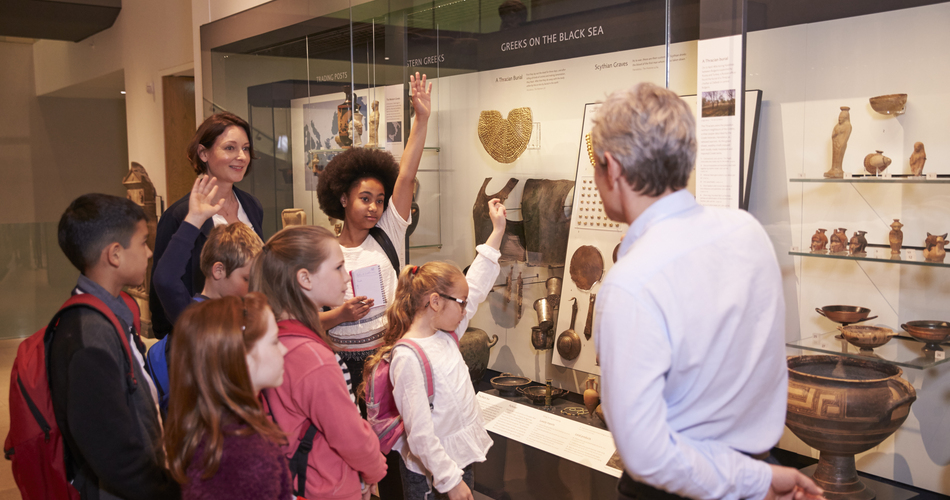
Here’s how to make the most of the field trip experience before, during and after the big day
By Courtney Lind
Educators, parents and students alike can agree: Field trips present invaluable opportunities for students to learn beyond the confines of the classroom. Putting the concepts of physics into practice at a science museum, viewing the events of history through reenactments at some of our country’s famous historical sites, or experiencing the works of the world’s most famous artists at incredible museums… the list goes on, and the possibilities are nearly endless when it comes to field trips.
The success of a field trip largely depends on how well it is planned and integrated into the curriculum. To ensure that field trips are not just fun outings (important as that may be) but also rich educational experiences, we’ve put together some field trip tips to help teachers prepare effectively and make the most out of the experience once students are back in the classroom.
TIPS FOR BEFORE A FIELD TRIP
A little planning can go a long way to making sure that the field trip isn’t a standalone day. We want the learning and experiences to stick with students for years to come.
Do Your Research: Before the trip, provide students with relevant background information about the destination, historical context or scientific concepts. This is your chance to get them excited about their field trip and the time they’ll spend outside the classroom. The more students know about their destination in advance, the more you can leverage that anticipation and turn it into active participation.
Set Clear Learning Objectives: Determine specific learning objectives aligned with the curriculum. What do you want students to take away from the field trip? What concepts have they covered in the classroom that they may encounter while out in the field? Are there any post-field trip activities where you may want to call back to their field trip experience? Clearly outline the knowledge and skills students will ideally gain from the experience and bring this with you on the trip to refer to as needed.
Pre-Trip Activities: Get students excited for their upcoming trip with pre-trip activities. These are designed to pique their interest and activate prior knowledge, while giving a sneak peek into what they can expect during their trip. This can include discussions, worksheets or short assignments related to the upcoming excursion. Be sure to check with your host or venue to see if they offer any pre-trip materials.
Safety and Logistics: Make time to go through important expectations and safety procedures with your students before the day of the trip and remind them again on the day of departure. Knowing critical logistics such as departure times, rules and emergency protocols will put everyone at ease. A well-informed group is more likely to remain focused and engaged throughout the trip.
FIELD TRIP TIPS WHILE TRAVELING
During the field trip itself, teachers play a crucial role in guiding students’ learning and fostering a positive experience. Whether you’re planning a self-guided trip or taking part in a more programmed experience, these tips will keep everyone on track.
Be an Engaging Facilitator: Actively participate in the trip, engaging students in discussions, asking thought-provoking questions and encouraging them to make connections with their prior knowledge. Call on your students’ strengths and guide them to understand links to what they’ve seen in the classroom.
Hands-On Learning: Encourage students to interact directly with exhibits, artifacts and the environment. You’re on a field trip, after all. This engaging style of learning promotes and reinforces key concepts that can then be taken back to the classroom. Students who fully engage their senses are more likely to retain what they’ve learned on the field trip — a win for everyone.
Take Notes and Pictures: Have students take notes or pictures during the trip. These activities can help students stay focused and will serve as useful references when discussing the experience back in the classroom. Have them bring along a favorite notebook or even incorporate a special ‘field trip journal making’ into your pre-trip activities.
Adapt to Unexpected Teachable Moments : Be flexible to seize unexpected teachable moments that may arise during the trip. It’s hard to control every variable when you’re out of the classroom in a new environment, and that’s okay. These spontaneous learning opportunities can be some of the most memorable and impactful for young minds.
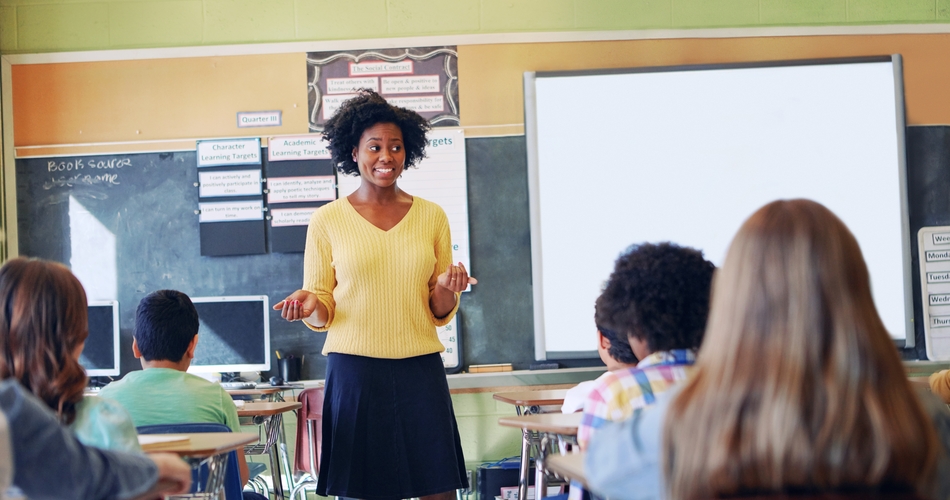
The best field trips start in the classroom with research, goal-setting and pre-trip activities. Photo courtesy Shutterstock images
MAKE THE MOST OF YOUR FIELD TRIP AFTERWARDS
The learning doesn’t end when the buses pull away. After all the hard work you’ve put into planning a field trip, you want to ensure the key concepts and takeaways from the day make their way back to the classroom (along with all the fun and memories).
Group Discussions: After the trip, hold group discussions to encourage students to share their experiences, insights and observations. As we’ve noted before, many field trip venues offer free materials to teachers to help guide discussions based on what students have experienced. Be sure to check if this is available or design your own discussion question to align with your desired learning outcomes.
Assign Reflection Tasks: Reflective writing tasks or projects encourage students to articulate what they learned, how the experience impacted them and how it connects to their studies. This is a great complement to group discussions as it allows everyone to reflect on the field trip in their own way. If you had students utilize notebooks during the field trip, this could be a perfect time to pull those out and continue writing.
Connect With Classroom Learning: Repetition can be a key to success, so try to integrate the field trip experience into subsequent lessons. Draw connections between the trip and the curriculum, reinforcing the new knowledge gained during the outing. Have students recall what they learned or did during the field trip, and how they have seen this at play in the classroom, or vice versa.
Evaluate Learning Outcomes: Assess students’ understanding of the trip’s objectives and the effectiveness of the experience. What reactions did you pick up from students before, during and after the field trip? Were students engaged and able to draw connections between classroom and field trip learning? This evaluation can inform future field trips and educational strategies. Depending on the age group, you can even incorporate feedback into the reflective exercises so that students can provide their thoughts and feelings on the experience.
Field trips can be powerful educational tools when properly planned and thoughtfully integrated into the curriculum. By setting clear objectives, preparing students beforehand, actively participating during the trip and following up with appropriate post-trip activities, teachers can ensure that these experiences leave a lasting impact on their students.
TOP PHOTO: Encourage and facilitate questions during your field trip, allowing enough time for thoughtful answers and thorough discussions. Photo courtesy Shutterstock images
There are still plenty of field trip ideas to read about in Student Travel Planning Guide, along with information for faculty to help plan student travel. Be sure to Subscribe to Student Travel Planning Guide magazine for FREE to learn more.

RECENT STUDENT TRAVEL PLANNING GUIDE ARTICLES
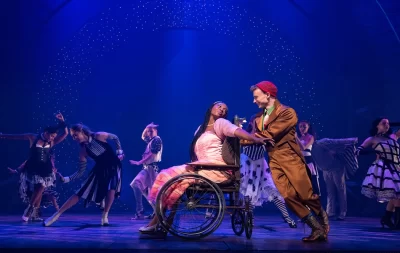
Field Trips: Pros and Cons
Off-campus excursions can enhance learning, but they pose challenges
- Tips & Strategies
- An Introduction to Teaching
- Policies & Discipline
- Community Involvement
- School Administration
- Technology in the Classroom
- Teaching Adult Learners
- Issues In Education
- Teaching Resources
- Becoming A Teacher
- Assessments & Tests
- Elementary Education
- Secondary Education
- Special Education
- Homeschooling
- M.Ed., Curriculum and Instruction, University of Florida
- B.A., History, University of Florida
Are field trips worth all the time and effort required to make them successful? Most teachers have asked themselves this question at one time or another, typically when feeling overwhelmed as they prepare for a field trip. The truth is that field trips at any grade level can cause quite a few headaches for teachers. At the same time, well-planned field trips can provide students with truly educational experiences they cannot get in the confines of the classroom. Following is a look at the pros and cons of field trips.
Benefits of Field Trips
Field trips provide students with new opportunities for learning through experience:
Different Learning Modalities
Information is presented to students in a way that meets different learning modalities. Field trips provide students with the ability to learn by doing instead of just passively listening to the information being taught in class.
Students are exposed to new experiences that, hopefully, broaden their horizons. This can be especially helpful for students from lower socioeconomic backgrounds who may not have been exposed to these opportunities before.
Reinforcing Concepts
Concepts that have already been learned in the classroom can be reinforced. Sometimes seeing information being taught in a new way can make a big difference in student comprehension. There is quite a difference between being taught about something like hurricanes and wind speed and experiencing them in an exhibit at a science museum.
Shared Reference
Students are provided with shared reference points that teachers can then refer to and use in future lessons. There may be an opportunity to have two or more disciplines use a field trip as an enrichment activity. For example, a trip to an art museum (art) may couple with a timeline for social studies (political systems in place when art was created) or math (measurements) can combine with science in a biosystem (river, beach, and meadow). In this manner, several teachers can then refer to things that students saw and experienced during the field trip for the remainder of the school year.
Increased Student-Teacher Communication
Students and teachers can see each other in a different light, helping to increase communication between them. Some students who might be overlooked in class because they are quiet might really come alive on field trips.
If parents are involved as chaperones, they can feel more connected to the teacher and the lessons being taught. They can get to know the teacher better and understand what teachers deal with daily.
Meeting Standards
Standards in social studies and science require students to have experiences related to concepts in the discipline. In social studies, students are required to take informed action. In science, students need to be exposed to a series of concepts to help them to better understand the world around them. Field trips help teachers meet these objectives.
Problems With Field Trips
Teachers face a number of concerns and challenges when designing field trips that they need to recognize and address before planning a field trip.
Preparation Needed
Field trips take preparation if teachers want to make them meaningful. They have to coordinate locations and transportation. They also need to create an effective lesson plan that they will follow when on the excursion.
Students will be out of the school building for a field trip, which means they will miss other classes—at least in middle and high school. If each core subject area (ELA, math science, or social studies) offers one field trip during a school year, students would be out of the building for four days. School attendance policies may count these as excused absences, but any field trip that removes students from class reduces the number of classroom hours.
Trips Can Be Costly
Field trips can be expensive, and some students may not have the funds to attend. Organizers of the field trip may consider asking for parents to add a few dollars to help students in need. School boosters may need to host a fundraiser for students to raise money for more expensive trips.
Teachers have to organize the collection of money and the assigning of chaperones. Teachers need to spend some time creating student groups that work for all students and ensuring that chaperones are assigned accordingly.
Teachers will likely have to deal with red tape as they plan field trips including permission slips, medical information, and emergency procedures. Schools typically require paperwork from teachers and their students.
Potential Discipline Problems
Students will be placed in a larger environment than the classroom. New surroundings could possibly lead to additional discipline problems. Because teachers typically only lead a small group (such as 30 to 40 students), they may not be able to maintain control over the behavior of every student on the field trip, especially if the group is large. Teachers should go over rules and expectations before the field trip, enforce the rules strictly while away from school grounds, and create effective consequences for misbehavior.
May Be Disappointing
The field trip destination might not live up to the teacher's expectations. The location might not be as interesting as the teacher thought it would be. The time to complete the field trip might be considerably less than was expected. Therefore, it is a good idea to have some contingency plan in mind just in case.
There may be students who, for one reason or another, will not attend the field trip. Teachers must leave lessons, usually enrichment offerings, that mirror some of the concepts being experienced on the field trip.
Requesting Feedback
One of the best ways to measure the success of a field trip (other than returning all students back to the school) is to ask for feedback. Teachers can post a survey for participants and for other chaperones asking them to express how they would evaluate the trip.
Opportunity to Reflect
Students should have the opportunity to reflect on the trip and write a response in a journal or essay. Requiring journal responses after the trip can solidify the information learned as students reflect on their new experiences. Asking students to write a thank you to the school principal for allowing the trip may even smooth the path to additional field trips.
Worth the Difficulties
Many teachers feel that well-chosen field trip destinations are worth the difficulties they may create. The key is taking the time to plan each aspect as much as possible. Teachers should be proactive when thinking about and planning field trips. Students, on the other hand, may remember the experience of the school field trip as a highlight of the school year, and the time they learned more than anything taught in class.
- How to Have a Safe, Fun, and Successful Field Trip
- Pros and Cons of Teaching
- The Pros and Cons of Block Schedules
- What Are Some Pros and Cons of the Common Core State Standards?
- Parents Guide to the Pros and Cons of Homeschooling
- Pros and Cons to Flexible Grouping in Middle and High School
- Whole Group Discussion Pros and Cons
- Job Sharing for Teachers
- 7 Back to School Tips for Teachers
- How to Avoid Common Mistakes When Writing Learning Objectives
- 11 Pros and Cons of Using Movies in Class
- How Scaffolding Instruction Can Improve Comprehension
- 10 Pros and Cons of Being a School Principal
- Methods for Presenting Subject Matter
- The Pros and Cons of Allowing Cell Phones in School
- 7 Ways to Take Control of Your Classroom to Reduce Student Misbehavior
Bring Back In-Person Field Trips. Here’s Why

- Share article
Just as peak field trip season was set to get underway in the spring of 2020, the pandemic hit. Schools, and the cultural institutions and countless other organizations that normally welcome K-12 students for experiential learning, closed their doors.
“The pandemic was absolutely devastating for field trips. They went off a cliff, even when schools went back to in-person,” said Susie Wilkening, principal of Wilkening Consulting, a Seattle-based audience research firm.
Statistics bear this out. In the spring of 2023, Wilkening Consulting and the American Alliance of Museums conducted a survey of 340 museum directors from around the country on post-pandemic visitation. Forty percent of respondents reported that they continued to experience lower on-site visitation from K-12 teachers and students.
Several factors may be keeping schools from venturing back to in-person field trips. Virtual field trips rose in popularity during the pandemic, allowing students to glimpse educational sites as far-flung as the Egyptian pyramids or the Louvre art museum in Paris from the comfort of their homes or classrooms—and those opportunities still exist.
Logistics and funding may also be preventing schools from returning to on-site field trips. Educational researchers have suggested that some schools prioritize putting resources toward activities that may improve student achievement on standardized tests over experiences like field trips, whose results aren’t as quantifiable. That may especially be the case for schools struggling to help students recover from pandemic-era learning declines.
The argument for doing field trips again
But a growing body of research, advocacy from some district-level officials, and anecdotes from students provide compelling reasons for bringing back in-person field trips.
Lin Tajeken Jeufack, a high school junior at Kenwood High School in Maryland’s Baltimore County schools, vividly recalls how a 6th grade field trip to the National Aquarium in Baltimore that offered a behind-the-scenes glimpse into husbandry of aquatic animals planted an idea in her head about one day becoming a marine biologist.
Lin described testing the water in the animal tanks, peering under a microscope in an onsite laboratory at the aquarium, and learning about a profession she knew little about. The 16-year-old, who is now enrolled in her school’s International Baccalaureate program, volunteers at a local hospital, and says she’s leaning toward majoring in math in college, though she hasn’t ruled out a career in marine biology. Lin still welcomes the opportunity to attend in-person field trips—like a recent outing to the Philadelphia’s Franklin Institute, an art museum that features a “Giant Heart” exhibit that allows visitors to walk through the organ’s enormous, lifelike chambers.
“I think students feel safer now [post-pandemic],” said Lin. “We have a really tough course load; we’re always working. It’s good for us to get away from school for a little while.”

Field trips are especially beneficial for disadvantaged students
The lasting benefits of field trips don’t necessarily register in students’ consciousness at the moment of the visit. But these experiential outings have been proven to increase student interest in, knowledge about, and motivation to study subject matter to which they’re exposed, according to a sweeping, decade-old report by Ohio University researchers on field trips. Students from disadvantaged backgrounds tend to reap the biggest benefits from these experiences, as they are less likely to have the opportunity to engage in these activities outside of school-sponsored trips.
That’s not lost on Kadee Anstadt, superintendent/CEO of Washington Local Schools in Toledo, Ohio, who’s committed to ensuring that the students in her high-poverty district take field trips routinely.
“We are quite intentional now about the breadth of experiences we are offering our students,” said Anstadt, who recently established what she refers to as “superinten-dates,” in which she personally takes groups of students on field trips they likely wouldn’t otherwise experience.
“As an urban district, our kids sometimes don’t get to see their larger community. We’ve been to the Detroit Auto Show, to hear a Holocaust survivor, experienced the Toledo Opera, and taken the entire junior class to the Henry Ford Museum,” she said.
Some of the field trips students in the Washington Local Schools take are culturally enriching; others, practical. The district has developed a partnership with two local YMCA branches in which every 2nd grader receives eight water safety lessons.
“This ensures our kids know the dangers of a pool, pond, or lake, and also know how to get help if they need it. Some learn to swim during this time. For so many, it’s the first time they’ve ever been in a pool,” said Anstadt.
Since last year, more than 1,000 of the district’s approximately 7,000 students have received the lessons.
Fish hatcheries, hiking, ice fishing, and Native American landmarks
Laurie Barron, superintendent of the Evergreen school district in Montana, shares a philosophy on experiential field trips similar to Anstadt’s—but with vastly different surroundings to explore.
“We are in northwestern Montana bordering Glacier National Park, a recreation mecca,” said Barron, reeling off a number of recreational and cultural resources available within a quick bus trip: fish hatcheries, hiking, ice fishing, skiing, forestry opportunities, and Native American landmarks.
Barron says administrators aim for younger students in the K-8 district to go on between two and four trips per year, a number that increases to six to eight trips by the time students reach 8th grade.
“We love for them to have several off-campus opportunities each year, experiencing the great west Montana outdoors. It’s very relevant and easy to connect that to our curriculum and content,” Barron said. “And students remember a lot more that way than just reading about places in a book.”
Sign Up for The Savvy Principal
Edweek top school jobs.

Sign Up & Sign In

- Go School Trip - Make Better Tomorrow

- Products search
- Vietnam School Trips
- Cambodia School Trips
- Laos School Trips
- Myanmar School Trips
- Thailand School Trips
- Indonesia School Trips
- Japan School Trips
- Singapore School Trips
- China School Trips
School Trip Blog
The reasons why educational field trips are important for students.
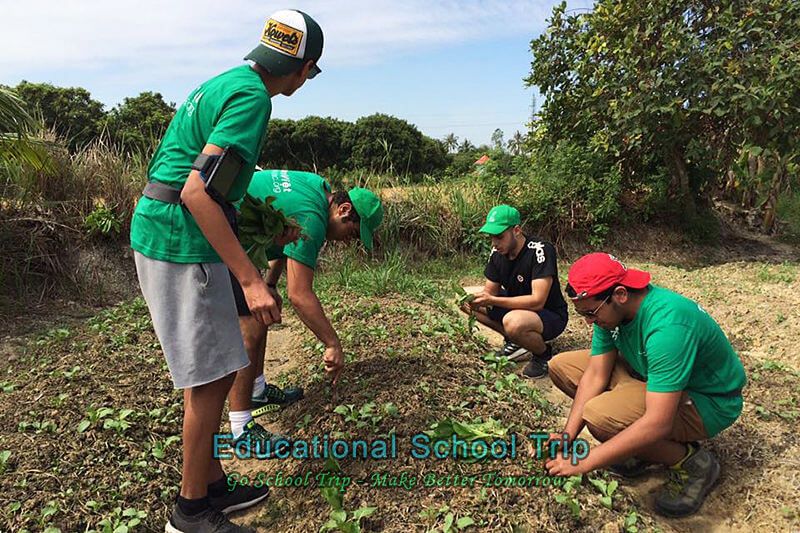
Educational Field Trip plays a vital role in the school curriculum, which serves a wide range of benefits in several ways including learning and teaching. One of them is that they help students to learn through authentic experience and can be an interesting way to explore new things for both the learners and teachers. This is the reason why students should encourage to engage in field trips which are significant for students. In terms of educational, students have ample opportunity to witness new things, learn about new environments at their own pace and immerse themselves in an authentic experience, without having to the anxiety of homework, exams or tests. Most importantly, field trips contribute greatly to build self-confidence and foster a sense of teamwork and community. It is highly recommended for you to add educational school trips part of traveling, you definitely get abundantly memorable experience and deep knowledge of various aspects in life.
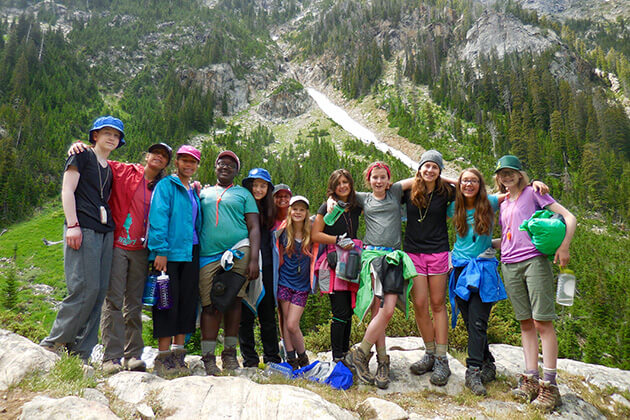
The Importance of Field Trip in Teaching
Educational Field Trips can associate with a variety of benefits for teachers and students. In terms of teaching, it would be better for the teacher to take part in field trips mostly because of its advantages. It is true that the trips provide teachers with ample opportunity to develop personality and professionalism. Obviously, it is necessary for teachers to get in touch with innovative practices and the latest teaching methods to apply these ways into the curriculum at school. Educational field trips help teachers widen their horizons of knowledge and broadening the scope of their syllabus. Most educational trips pay much attention to outdoor activities with a wide range of aspects in life. It means the trips allow the teacher to connect the classroom with real-life and authentic experience. Therefore, it is considered a fantastic way to improve their lessons and catch up with innovative teaching which is more practical and meaningful. Most importantly, the teacher is a guide to inspire and stimulate students to understand the world that exists beyond the school curriculums. To be more precise, students will be encouraged to learn not only knowledge but also soft skills, life skills, communication skills and more.
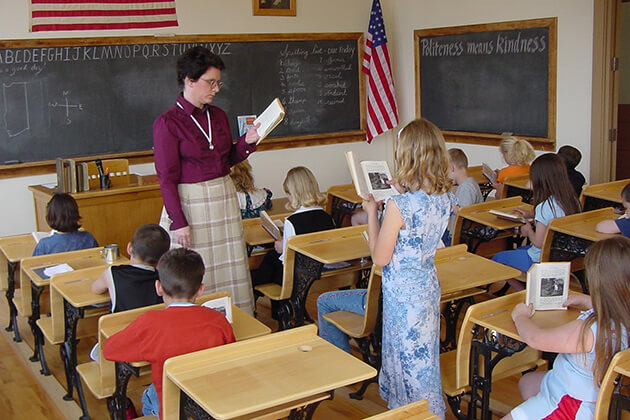
The Importance of Educational Field Trip in Learning
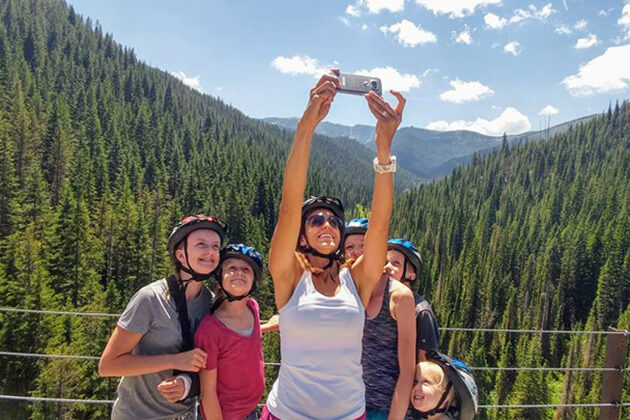
The Importance of Field Trip in Student Life
It would not be completed your trips if you forgot to set up an educational field trip in your student life. It is time for you to learn new things and get a deeper understanding of life. Having an educational trip in the early part of the term is so wise since it will allow students to bond with classmates they may not know very well. Getting away from school a day is always exciting for students and gives students an opportunity to spend time with each other in a new environment. Most of the educational tours organized with groups so it is beneficial for students to develop a sense of community. They can chat, observe and learn about each other.
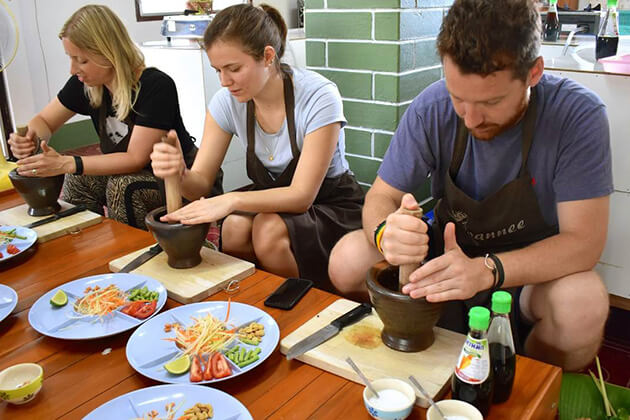
The Important of Educational Tour
It is true that there are various benefits to take from educational excursions. Though the primary purpose of educational tours is to educate students, they are also used as part of the curriculum to cover a wide range of life skills including teamwork, time management, communication, etc. This is because educational travel allows students to dip in fresh experiences, and use them to enhance their career prospects. If you are setting up an educational tour, you should spend the time to research useful information and prepare the necessary things for this. For example, you should pay much attention to the means of transportation, the budget, the number of students, etc. The importance of educational tours for students can be better in various ways. First of all, this tour provides ample opportunity to exchange and learn many skills with each other. On educational field trips, students feel the sense of enjoyment which offers them to acquire a fresh perspective, learn new things and witness different sides of the country. This opens up endless possibilities to understand the world. Going on educational tours means to have a major educational element including giving students the chance to build closer bonds with their classmates, experience a new environment and enjoy a day away from the classroom.
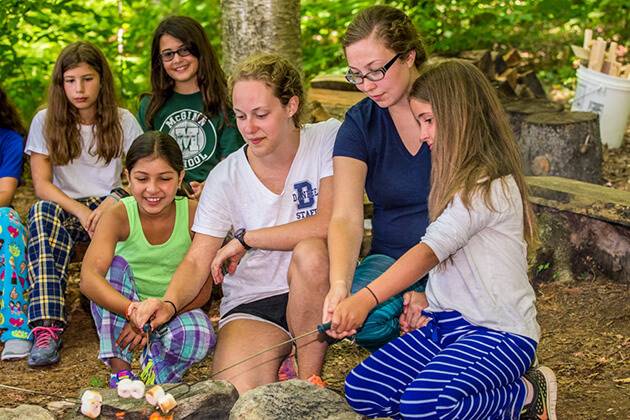
Username or email address *
Password *
Remember me Log in
Lost your password?
The Enlightened Mindset
Exploring the World of Knowledge and Understanding
Welcome to the world's first fully AI generated website!
What is a Field Trip: Exploring the Benefits, Challenges, and Creative Ideas
By Happy Sharer

Introduction: What is a Field Trip?
A field trip is an educational excursion outside of the classroom environment. It is an opportunity for students to gain first-hand experience with the material they are learning in class. Field trips can take place at local attractions, museums, historic sites, nature centers, and more. They can also be conducted virtually, allowing students to explore faraway places without ever leaving the classroom.
Overview of Field Trips: Exploring the Benefits and Challenges
Field trips are an important part of any school curriculum. They provide an opportunity for students to gain real-world experience with the material they are learning in class. However, there are both benefits and challenges associated with field trips that must be considered before planning one.
Benefits of Field Trips
The most obvious benefit of field trips is that they give students the chance to experience the material they are learning in class in a real-world setting. According to a study conducted by the National Education Association, “Field trips provide students with experiences that cannot be replicated in the classroom. They offer opportunities to explore concepts from a different perspective, to observe firsthand what has been read about in textbooks, and to make connections between course content and real life.”
In addition to providing an opportunity for experiential learning, field trips can also help to engage student interest in the subject matter. A study conducted by the University of Texas found that students who went on field trips were more likely to remember the material they had learned than those who did not go on the trip. Furthermore, field trips can spark curiosity and inspire students to ask questions and seek out further knowledge.
Challenges of Field Trips
Despite their many benefits, field trips can present some challenges. One of the biggest challenges associated with field trips is the cost. Depending on where you are traveling and the size of your group, the expenses can quickly add up. Additionally, finding the time to plan and execute a successful field trip can be difficult for teachers who already have a full schedule.
Safety is another issue that must be taken into consideration when planning a field trip. It is important to ensure that all students are supervised at all times and that the destination is appropriate for the age and maturity level of the students.
Tips for Planning a Successful Field Trip
Planning a successful field trip requires careful consideration of multiple factors. Here are some tips to keep in mind when planning a field trip.

Establish Goals
Before planning a field trip, it is important to establish clear goals. Ask yourself why you are taking the students on the trip and what you hope to accomplish. This will help to ensure that the field trip is meaningful and relevant to the material being taught in class.
Choose an Appropriate Destination
Once you have established your goals, it is important to choose a destination that is appropriate for the age and maturity level of the students. When selecting a location, consider the interests and abilities of the students and make sure that the destination offers something that will be interesting and engaging for them.
Develop an Itinerary
Once you have selected a destination, it is important to develop an itinerary that outlines the activities for the day. Make sure there is enough time for each activity and that the activities are relevant to the goals you have established for the trip.
Manage Safety Issues
Safety should always be a top priority when planning a field trip. Make sure that all students are supervised at all times and that the destination is appropriate for the age and maturity level of the students. Additionally, be sure to review any safety policies or procedures with the students prior to the trip.
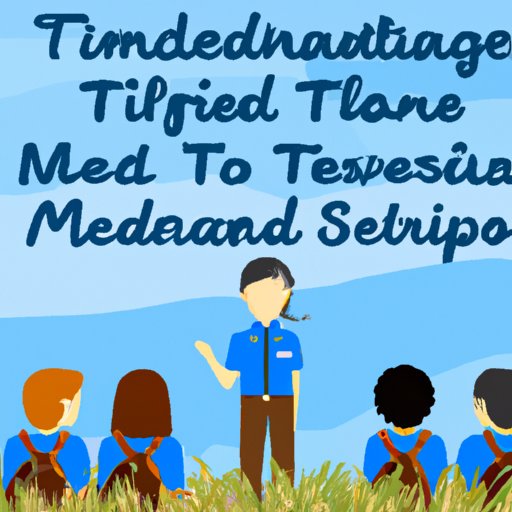
A Guide to Creating a Meaningful Field Trip Experience
Creating a meaningful field trip experience requires careful planning and preparation. Here are some tips to ensure that your students get the most out of their field trip.
Set Clear Expectations
Prior to the field trip, it is important to set clear expectations for the students. Explain to them the purpose of the trip and what you hope they will gain from the experience. Additionally, discuss any rules or guidelines that need to be followed during the trip.
Make Connections with Course Material
When planning the activities for the field trip, look for ways to connect the material to the course content. This will help to ensure that the students gain a deeper understanding of the material and that the trip is meaningful and relevant.
Utilize Time Wisely
Time management is key to ensuring a successful field trip. Make sure that all activities are planned in advance and that the students understand what is expected of them. Additionally, leave room for flexibility in case something unexpected arises.
How Field Trips Enhance Learning in the Classroom
Field trips can be an invaluable tool for enhancing learning in the classroom. Here are some of the ways that field trips can benefit students.
Engaging Student Interest
Field trips can help to engage student interest in the subject matter. Experiencing the material firsthand can make it easier for students to understand and relate to the material being taught in class.
Building Critical Thinking Skills
Field trips can also help to build critical thinking skills. Students are exposed to new information and must process it in order to gain a better understanding of the material. This helps to develop problem-solving abilities and encourages students to think more deeply about the material.
Developing Problem-Solving Abilities
Field trips can also help to develop problem-solving abilities. Students are exposed to new environments and must find ways to navigate them. This helps to build confidence and teaches students how to think on their feet.
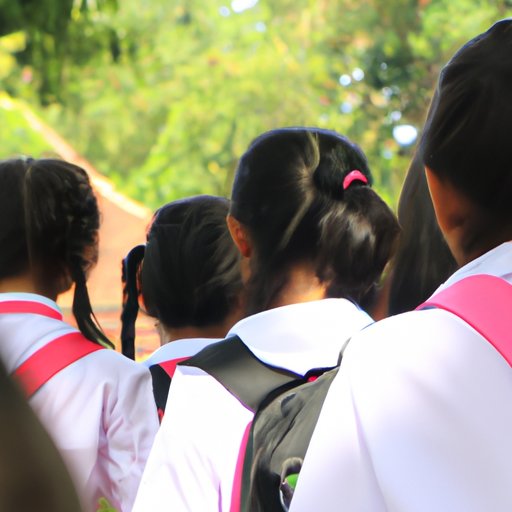
The Value of Field Trips for Students
Field trips can be a valuable learning experience for students. Here are some of the ways that field trips can benefit students.
Developing Self-Confidence
Field trips can help to boost self-confidence. Being in unfamiliar surroundings can be intimidating, but it can also be a great opportunity for students to practice problem-solving skills and develop self-confidence.
Strengthening Interpersonal Relationships
Field trips can also help to strengthen interpersonal relationships among students. Working together to navigate new environments and solve problems can help to foster teamwork and collaboration.
Acquiring New Knowledge and Experiences
Finally, field trips can open students up to new knowledge and experiences. Seeing things firsthand can help to bring the material to life and make it easier for students to understand and remember.
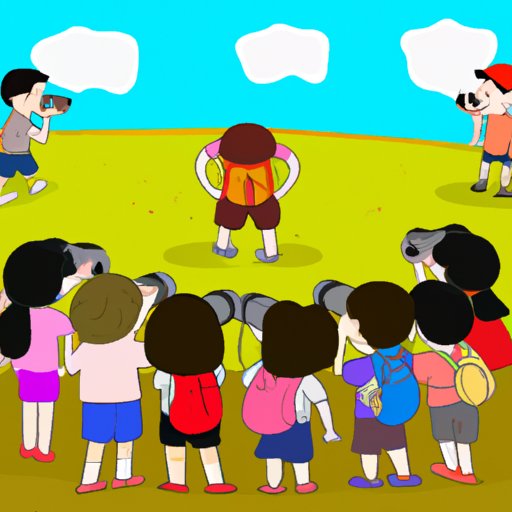
Creative Ideas for Field Trips
There are many creative ways to incorporate field trips into the classroom. Here are some ideas for fun and engaging field trips.
Museum Visits
Museums are a great way to introduce students to a variety of topics. From art and history to science and technology, there are a variety of museums that offer educational experiences for students of all ages.
Local Attractions
Local attractions can be a great way to introduce students to the community and its culture. Consider visiting historical sites, parks, zoos, or aquariums for an interactive and fun learning experience.
Nature Walks
Nature walks are a great way to get students outdoors and exploring their natural surroundings. Not only can this be a fun activity, but it can also be a great way to introduce students to concepts such as ecology and conservation.
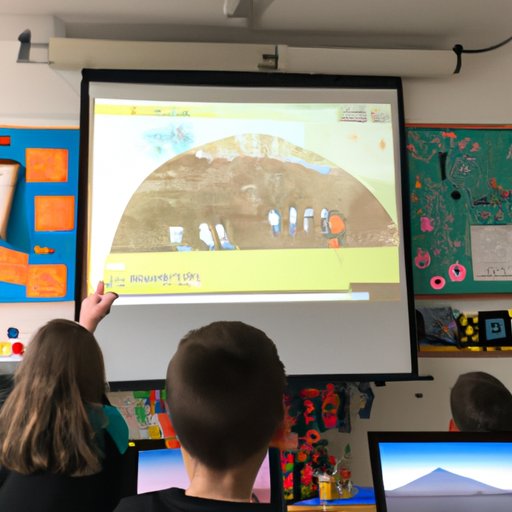
Virtual Field Trips: Taking Education Beyond the Classroom
Technology has opened up a world of possibilities for educators looking to take their students on field trips. Virtual field trips allow students to explore faraway places without ever leaving the classroom.
Advantages of Virtual Field Trips
Virtual field trips come with a number of advantages. They are often less expensive than traditional field trips, and they can be used to explore destinations that would otherwise be inaccessible. Additionally, virtual field trips can be tailored to fit the curriculum and the specific needs of the students.
Types of Virtual Field Trips
There are a variety of types of virtual field trips available. These include virtual tours of museums and historical sites, live video streams of events, and interactive simulations of different environments. Each type of virtual field trip offers a unique experience and can be used to enhance learning in the classroom.
Tips for Planning a Virtual Field Trip
When planning a virtual field trip, it is important to do your research. Check to see if the destination offers a virtual tour and make sure that the technology needed is available and easy to use. Additionally, make sure to set clear expectations and goals for the virtual field trip and to create an itinerary that outlines the activities for the day.
Field trips can be a valuable learning experience for students. They provide an opportunity for students to gain first-hand experience with the material they are learning in class and can help to engage student interest in the subject matter. Additionally, field trips can help to build critical thinking skills and develop problem-solving abilities. Finally, virtual field trips offer an exciting way to explore faraway places without ever leaving the classroom. With careful planning and preparation, field trips can be a fun and educational experience for everyone involved.
(Note: Is this article not meeting your expectations? Do you have knowledge or insights to share? Unlock new opportunities and expand your reach by joining our authors team. Click Registration to join us and share your expertise with our readers.)
Hi, I'm Happy Sharer and I love sharing interesting and useful knowledge with others. I have a passion for learning and enjoy explaining complex concepts in a simple way.
Related Post
Exploring japan: a comprehensive guide for your memorable journey, your ultimate guide to packing for a perfect trip to hawaii, the ultimate packing checklist: essentials for a week-long work trip, leave a reply cancel reply.
Your email address will not be published. Required fields are marked *
Expert Guide: Removing Gel Nail Polish at Home Safely
Trading crypto in bull and bear markets: a comprehensive examination of the differences, making croatia travel arrangements, make their day extra special: celebrate with a customized cake.
Jump to navigation
- Americans for the Arts
- Arts Action Fund
- pARTnership Movement
- Animating Democracy
- Load Picture

Search form
- ArtsBlog Home
For Arts Professionals in the Know
- ARTS & BUSINESS
- ARTS & HEALING
- ARTS EDUCATION
- ARTS MARKETING
- COMMUNITY ENGAGEMENT
- SOCIAL CHANGE

Leave No Child Inside - The Importance of Field Trips
Posted by alyx kellington, mar 17, 2011 1 comment.

Alyx Kellington
Across the nation, field trips are being eliminated from school district’s budgets. Teachers are restricted by the pressures from districts to show curricular results and to cover content in classrooms leaving little time for out-of-school excursions.
The logistics of test schedules, finding a substitute teacher, bus and fuel costs, and balancing curriculum needs with hands-on activities often leaves teachers overwhelmed. Field trips are often viewed as “fluff” or extra-curricular activities and, therefore, are easy line items to cut.
However, teachers and students advocate – and studies indicate - that field trips are a key component of school instruction; they broaden the educational experience and make a subject more relevant.
Students might be good at reciting and remembering things but they often don’t make the connection unless they experience it first hand. Field trips connect the dots for students by providing real experiences related to all content areas.
Field trips enrich and expand the curriculum, strengthen observation skills by immersing children into sensory activities, increase children's knowledge in a particular subject area and expand children's awareness of their own community. And everyone you speak with has a field trip memory.
What makes a field trip good?
Think of the excursion as a field study, not a field trip. It is a learning experience or experiential learning.
A focus on arts integration and project-based learning teaches students to explore real-world problems and challenges. Active and engaged learning inspires students to obtain a deeper knowledge of the subjects they are studying and allows them to see how ideas are connected. Teaching in such a contextual manner promotes collaboration, critical thinking and knowledge retention.
Often teachers look to the arts and cultural organizations of their community for field trip ideas: museums, zoos, science centers, and natural areas. Performing arts bring the page to the stage and can also offer a lesson in theater etiquette.
In addition to the traditional venues, teachers may choose sites for real world experiences to encourage students to apply what they’ve learned to something relevant in their life. For example, children visiting a construction site can return to the classroom and design their own homes, businesses, and other architectural structures.
Visiting a college or university campus introduces the dream of higher education; college students can act as the tour guides, show dorm rooms, cafeterias, and study halls, while providing mentorship to the younger student.
The best field trips can bring two seemingly unrelated worlds together.
Children from large cities may not understand a math equation about livestock, crops, and the other staples of the rural experience because the students focus on the vocabulary, get confused, and skip the question.
Students in a rural community are often ignorant of urban and suburban terminology. Subway stops, fares, escalators, HOV lanes…these oft-used terms placed in a math test question can block the main idea and prevent a student from answering.
Sometimes state exams include questions that do not bridge the gap between rural and urban students.
A well-designed field trip can bring it all together: combine two or more subjects while offering a variety of learning styles and intelligences, integrate the arts, encourage low-income and English language learner students to make connections between community resources and opportunities and their family and culture.
These experiences allow all participating students to achieve a higher academic performance in all subject areas - not just the arts.
Kids need this vital component of school instruction, if not only to improve test scores, but to feel, see, touch, and even taste the real world around them. And that's something you can only get from a field trip.
Thanks for this, Alyx! I am particularly enamored with your word switch from "field trip" to "field study." I require my pre-service theatre teachers to design an instructional unit inclusive of an excursion, and I will forevermore refer to it as a "field study." Let's hope the up-and-coming teachers are willing to fight for the educational value of classrooms without walls!
- Please login to post comments.
- ArtsJournal
- Barry's Blog
- Butts in Seats
- Createquity
- Monster Culture
- Group of Minds
- HuffPost Arts & Culture
- Arts Jumper
- Life's a Pitch
- Public Art Network Blog
- Technology in the Arts
- The Artful Manager
Most Commented
Connect with us.
- Sign Up for E-News
- Become a Member
Connect with Others
- ArtsMeet Calendar
- News & Media
Americans for the Arts serves, advances, and leads the network of organizations and individuals who cultivate, promote, sustain, and support the arts in America. Founded in 1960, Americans for the Arts is the nation's leading nonprofit organization for advancing the arts and arts education.
A forum for today's leading arts professionals sharing their knowledge, thoughts and comments on the topics shaping the arts in our communities, schools and nation.
- Privacy Policy
- Reuse Policy
- 1275 K St NW, Suite 1200
- Washington, DC 20005
- T 202.371.2830
- F 202.371.0424
- © 2015
- Website Designer Navigation Arts
- Website Developer New Target
- Company Intranet (staff only)
The 10 Benefits of School Field Trips: Why it’s Crucial to Learn Outside the Classroom

Everyone (read: students) knows the best part about school is the field trips. Students get to get out of the classroom and into the real world, even if just for a few hours. These trips, no matter where they are, are formative for children . Whether it’s learning how to shuck corn on the grounds of a historical park, studying the tribal gear in an African art exhibit, or understanding how gravity works at the science museum , these hands-on learning experiences give children the ability to do things that can’t always fit inside the four walls of a classroom .
In this article, we’re going to share with you the 10 benefits of school field trips and why it’s crucial for children to learn outside the classroom.
The 10 Benefits of School Field Trips
Students do better in school.
Leaving school actually makes students do better when they get back to school. We’re not talking about suspensions or weekends or holidays or vacations. We’re talking about field trips .
Regardless of gender, ethnicity or socioeconomic status, students who go on field trips have better grades, higher graduation rates from high school and college, and greater income [1]. In fact, in a study conducted by the NEA, 89% of adults said educational trips had a positive, lasting impact on their education and career because the trips made them more engaged, intellectually curious and interested in and out of school.
Students learn more social skills
By getting out of the classroom and into a new place that encourages learning in a different aspect, students have the opportunity to do more than learn. They have the chance to talk to new people. These social skills they acquire help them learn things that they can’t in textbooks or in workbooks.
Students can visit new places
Not everyone has the financial means to visit museums and art galleries and historical landmarks. So these field trips give children the opportunities to see places they may not regularly visit.
Field trips exist not just to provide economically useful skills in numeracy and literacy, but also to introduce people to arts and culture. More-advantaged families may take their children to these cultural institutions outside of school hours, but less-advantaged students are less likely to have these experiences if these trips do not provide them.
With field trips, public schools viewed themselves as the great equalizer in terms of access to our cultural heritage [2].
Students can become critical thinkers
Field trips are more than going to a new place and getting out of school for the day. Everywhere you go can turn into a learning experience.
Students who go on field trips are known to have become more observant, noticing and describing more details in image or exhibit [3]. Being observant and paying attention to detail is an important and highly useful skill that students learn when they study and discuss what they see on field trips.
Students learn by experiencing, not just by studying “theory”
When students leave the classroom, they see the connections between what is happening at school and in the “real world.” They begin to see that what they learn within the walls of the classroom can help them solve the problems they see in the world around them, and can have a direct impact on who they become as adults [3].
Students learn more time management skills
A lot goes into a field trip, and while teachers, chaperones, and workers are the ones in charge, it’s also up to students to figure out what exhibits they want to learn about, how much time they need to eat, and when they can manage to visit the gift shop at the end of the trip.
Field trips give students perhaps their first feel of independence, even if dozens of adults are watching over them.
Students get to learn by doing
Think of the science museums and historical parks around your area. The classes they offer and the exhibits they show. The things students can learn that they wouldn’t otherwise get to inside a classroom. That’s because not all students can get the full education they need when they learn from textbooks and reading and application.
Each person has a different way of accumulating knowledge. While some prefer listening to learn better, others need to write or they only need to read the text or see a picture to later remember. The learning styles can be classified in visual, auditory and kinesthetic [3]. The distribution of the three learning styles is 65% visual, 30% auditory and 5% kinesthetic.
Field trips give these more unique learners a chance to, well, learn.
Students learn more teamwork skills
While on field trips, students typically get the chance to work together to solve simulated problems associated with the place of the field trip. Differing from group projects in school, these “real world” simulations allow children to put their teamwork skills and critical thinking skills to good use.
Students develop a stronger connection to the community
Communities are often rooted in a rich sense of history. By getting out of the classroom and into the streets, students can learn that there’s more out there than their little insular bubbles. School can bog students down, so it’s important to remind them how much is out there, even in our own community.
Students learn more leadership skills
Learning about people and places on field trips give students a chance to step out of their comfort zone. It gives children the chance to step up when they’re out in public. A leadership opportunity as simple as making a child the student leader in a group gives students the chance to test themselves and build relationships with those around them.
Buying Guide
Remember the trip you went on by bringing a Polaroid camera from Unique Photo .
This camera will need immediately printable film from Retrospekt .
If you have a cell phone and it’s allowed on the field trip, don’t let it die while you’re out. Purchase the ZAGG portable charger case. And don’t forget to charge the case before the trip.
No matter where you go on a field trip, chances are you’ll be taking a drive to get there. Stay hydrated with a vibey crystal water bottle from Vorda .
Pack all of your belongings in a Fjallraven backpack.
External references

The Importance of Field Trips + Virtual Field Trip Ideas
By: Author MomsLA
Posted on Last updated: August 21, 2023
Field Trips are important to help bridge the gap between education in the classroom and hands-on experience. You probably already know that school field trips are a vital part of any educational curriculum, whether online, virtual, on a bus from a traditional school or for a homeschooling family.
In addition, Field Trips can make learning fun and special, adding an element of novelty to a school routine.
In the current pandemic, without school in session, parents and teachers are looking for Virtual and Interactive Field Trips. Plus we can always take a cue from the many Homeschool Field Trips around SoCal.
Interactive Virtual Field Trips from Los Angeles Museums >>> click to read
Virtual field trips for kids from around california >> click to read, 50 terrific virtual field trips – one in each of the united states >>> click to read.
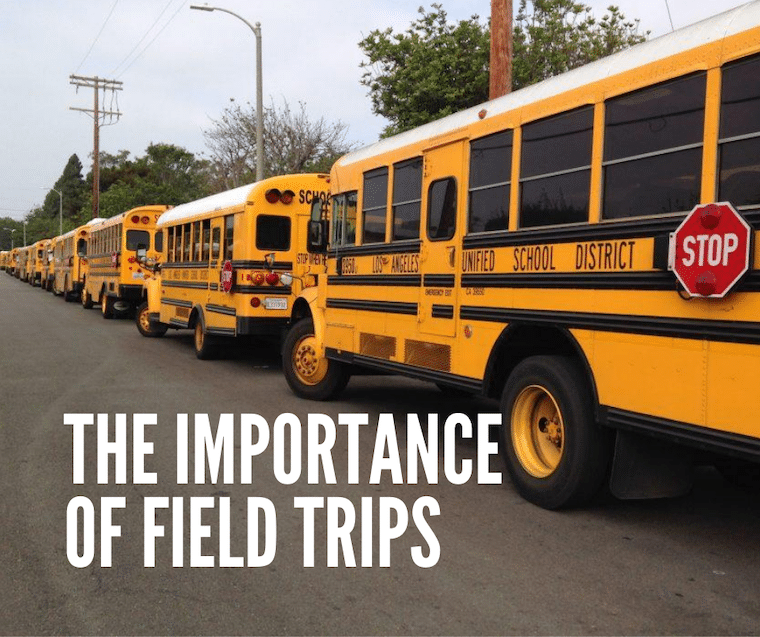
The Importance of Field Trips
Studies published by Resource Area for Teaching show “Teachers who conduct hands-on learning activities on a weekly basis out-perform their peers by more than 70% of a grade level in math and 40% of a grade level in science.” Field trips are crucial for every student to acquire a wealth of knowledge, cultural context, and hands-on experience.
Interactive Field Trips can help shape a child’s future, along with learning that continues outside the classroom.
How Field Trips are Interpreted by a Child
Here are a few things kids may think and feel as they get to experience more field trips:
1. Show me how to do it, so I can be successful.
2. I can see what it looks like at first glance.
3. The experience is in my memory. When I need to use it as a reference it will be available.
4. I participated in an activity, therefore I know feel more confident about my abilities.
5. Learning is fun when I get to explore and ask questions. I want to do more.
6. What if I want to study and work in this field?
7. I now know that my community supports me and I have access to the information.
Please consider helping your child’s teacher plan more field trips. Both now with Virtual Field Trips, and in the future for in-person experiences. It will change how you look at education and how you see your community.
Related: Why I don’t volunteer for my child’s field trips
This site uses Akismet to reduce spam. Learn how your comment data is processed .
TerriAnn @ Cookies & Clogs
Friday 31st of August 2012
Letting children learn hands-on is the best method for teaching new concepts as well as solidify others. I homeschool my daughter and know she gets WAY more out of field trips than reading a textbook!
My kids have been on some invaluable field trips, no doubt. There have also been a couple of time-wasters. I think it's important to consider the purpose of the field trip, the destination and the educational component. Class trips also build solidarity, which is nice.
Desiree Eaglin
I totally agree that field trips are an extension of education. I love taking my kids everywhere!
Valerie2350
Great info, Alma! Hands-on learning sticks with children long after the worksheets and classroom lectures are over.
Carla - Notas de Mamá
Great info! Field trips are very important. I might not remember what the teacher said when I was in class, but I do remember all the things I learnt in my field trips to the museum, zoo, botanical garden an other amazing places.
- Skip to global NPS navigation
- Skip to the main content
- Skip to the footer section

Exiting nps.gov
Ten tips for a successful field trip.
Planning a field trip to a national park near you? Here a 10 quick tips to help you and your students get the most out of your trip:
- Plan everything well in advance. Call to schedule the field trip or request an educational fee waiver, get a confirmation, and make necessary arrangements for school and parental permission and transportation. Plan the educational experiences and activities for the field trip. Know how to get to the field trip site, how long it will take, and where you will have lunch. Bring along any supplies and materials needed for activities that you have planned. Share this with all the teachers and chaperones involved.
- Use pre-visit activities to help prepare the students for the field trip. Make field trip planning a part of in-class learning.
- Develop clear learning objectives and share them! Make sure that the students and other teachers know these objectives.
- Chaperoning is not a spectator sport. Chaperones can be a big help if they understand their role.
- Give everyone nametags. Make sure that even the teachers and chaperones are wearing readable nametags. It also helps to divide large groups into smaller sub-groups before the trip and color code their name tags.
- Keep the students engaged. Encourage the students to participate in the activities but remember you are responsible for their behavior.
- Keep students accountable for learning. A field trip is not a day off from school! Did you accomplish the planned learning objectives?
- Encourage independent observation time. Constructive free time can help make the trip more memorable.
- Bring the experience back home. Use post-visit activities back in the classroom to make the field trip relevant and reinforce concepts.
- Use evaluations and sharing. Improvements can only be made through honest feedback and evaluation.
You Might Also Like
- shenandoah national park
- field trip preparation
- field trips
Shenandoah National Park
Last updated: August 30, 2023

Why Taking Your Kids on Field Trips is Important
It should come as no surprise that I’m a fan of taking field trips. After all, it’s a pretty big part of what I do here. But did you know that there’s more to taking field trips than simply having a good time with your family?
It could be strengthening your kid’s understanding of concepts that have already been taught in class. Or it might be helping them to discover something entirely new. Whatever the case, there are plenty of great reasons for making field trips a regular part of your family’s routine!
Field trips can help kids learn in a different way than is possible in a classroom

One of the biggest advantages of field trips is that it provides a completely different way of learning concepts from classroom-based learning.
Classroom learning typically has a strong focus on a teacher passing knowledge down to their students. Whether it’s a lengthy lecture on the revolutionary war or a video on the kinds of creatures you can find in a coral reef, the general methodology is the same.
Teachers introduce the subject, they explain the subject; they review the subject; they test on the subject. Individual teachers may use any number of different techniques to do this, but the overall effect is the same. Classroom learning is all about taking the teacher’s knowledge and giving it to the students 2nd-hand. (This isn’t always the case, but it often is.)
I’m not saying that classroom learning is bad or ineffective. However, I do believe that if kids are only learning in a classroom setting, then they’re missing out on something extremely important.
Experiential learning.

Experiential learning is the process of learning information by experiencing it first-hand. Learning by doing. Field trips are an amazing source of experiential learning because it allows kids to experience the things they’re learning about where it actually happens. It’s the difference between kids memorizing a list of animals that live in a coral reef and remembering the animals that they saw there themselves, while snorkeling in a coral reef .
The information they get from their own firsthand experiences is going to stick around much longer than what they get from the list.
In fact, one study showed that job training that used experiential learning had an 80-90% retention rate. That’s compared to only a 5% retention rate using traditional educational methods!
Field trips help kids learn different kinds of things than classroom teaching
Classroom learning actually does an amazing job at teaching kids the things that schools want their students to learn. In today’s world, those things are facts and figures, like 2+2=4 or ‘the mitochondria is the powerhouse of the cell.’ That’s great if you’re teaching kids what they need for taking tests, but it doesn’t teach kids everything they need for life in “the real world.”
Field trips are a great way of filling in that gap.
That’s because field trips often do a much better job of helping kids to explore how different concepts relate to what’s happening around them. It could be as simple as looking at the costs of different items and deciding whether to buy something based on how much money they have. Or it might be as complicated as discussing the ecological impacts of plastic packaging while looking at trash on the beach.
One study took a look at how students performed on tests after a field trip vs a typical day of classroom learning. They found some pretty big differences in what gets learned through each method.
Students who went on a field trip tested far worse on a multiple-choice test than their peers who stayed in a classroom. But those same students performed far better on open-ended essay-type questions. On those questions, they were able to express how things worked, how people were affected, and how ideas were related with much more clarity than the students in the classroom.
In essence, these students had an easier time looking at the big picture, even if they missed out on some of the smaller details like names and dates.
Personally, that’s a trade-off that I am more than willing to make with my kids.

But most importantly, field trips make memories
Clearly, there are some major educational benefits to taking field trips with your kids, but those aren’t even the only benefits. Field Trips are also a great way to make memories with your kids.
While it’s true that a great education is important in giving kids a leg up in life, it isn’t the most important thing.
Studies overwhelmingly show that parental involvement in their children’s education is a critical factor when determining their ability to succeed academically. Likewise, parental involvement has been shown to greatly impact their children’s mental and emotional health.
Using family time to take a field trip is a unique opportunity to show your kids that you not only care about their education but also about them as a person. That’s true no matter what kind of field trip you decide to take. If you are right there spending time with your kids and sharing these experiences, they are going to remember that. Probably, a lot better than the things you went to see!
Honestly, while the educational aspect of taking a field trip is worth it, it’s these memories of exploring together that we’re after.
Studies that have looked into the connection between positive childhood memories and lifelong health have shown children who look back fondly on their childhood are less likely to have depressive episodes, less likely to have chronic diseases, and are typically in better overall physical health throughout their lifetime!
There are few things in life as rewarding as taking field trips with your kids. Whether it’s exploring ancient cultures by walking through their ruins or learning about local animal life by walking through the woods, field trips teach our kids things that they just can’t get from the classroom in a way that can’t be done behind a desk!

Similar Posts

Abu Simbel With Kids: Visiting The Temple That Moved

Best Messaging Apps to help kids stay connected while traveling

Majestic Macaws (and other beautiful birds) at Macaw Mountain

Finding Egypt’s hidden desert whales in beautiful Wadi al-Hitan

Casco Viejo with Kids: Exploring Panama City’s Historic District

Stand Where Moses Stood – Visiting Mount Nebo In Jordan
Privacy notice
Why field trips matter, share this article.
- Facebook Icon: Facebook
- Twitter Logo: Twitter
- LinkedIn Logo: LinkedIn
- Email Icon: Email
A new study shows visiting an art museum improves critical thinking skills and more. An excerpt from “The Educational Value of Field Trips,” originally published in Education Next , Winter 2014.
This article originally appeared in the January/February 2014 issue of Museum magazine .
The school field trip has a long history in American public education. For decades, students have piled into yellow buses to visit a variety of cultural institutions, including art, natural history and science museums, as well as theaters, zoos, and historical sites. Schools gladly endured the expense and disruption of providing field trips because they saw these experiences as central to their educational mission: schools exist not only to provide economically useful skills in numeracy and literacy but also to produce civilized young men and women who would appreciate the arts and culture. More advantaged families may take their children to these cultural institutions outside of school hours, but less-advantaged students are less likely to have these experiences if schools do not provide them. With field trips, public schools viewed themselves as the great equalizer in terms of access to our cultural heritage.
Today, culturally enriching field trips are in decline. Museums across the country report a steep drop in school tours. For example, the Field Museum in Chicago at one time welcomed more than 300,000 students every year. Recently the number is below 200,000. Between 2002 and 2007, Cincinnati arts organizations saw a 30 percent decrease in student attendance. A survey by the American Association of School Administrators found that more than half of schools eliminated planned field trips in 2010-11.
The decision to reduce culturally enriching field trips reflects a variety of factors. Financial pressures force schools to make difficult decisions about how to allocate scarce resources, and field trips are increasingly seen as an unnecessary frill. Greater focus on raising student performance on math and reading standardized tests may also lead schools to cut field trips. Some schools believe that student time would be better spent in the classroom preparing for the exams. When schools do organize field trips, they are increasingly choosing to take students on trips to reward them for working hard to improve their test scores rather than to provide cultural enrichment. Schools take students to amusement parks, sporting events and movie theaters instead of to museums and historical sites.
If schools are de-emphasizing culturally enriching field trips, has anything been lost as a result? Surprisingly, we have relatively little rigorous evidence about how field trips affect students. The research presented here is the first large-scale randomized control trial designed to measure what students learn from school tours of an art museum.
We find that students learn quite a lot. In particular, enriching field trips contribute to the development of students into civilized young men and women who possess more knowledge about art, have stronger critical-thinking skills, exhibit increased historical empathy, display higher levels of tolerance, and have a greater taste for consuming art and culture.
Design of the Study and School Tours
The 2011 opening of the Crystal Bridges Museum of American Art in Northwest Arkansas created the opportunity for this study. Crystal Bridges is the first major art museum to be built in the United States in the last four decades, with more than 50,000 square feet of gallery space and an endowment in excess of $800 million. Portions of the museum’s endowment are devoted to covering all of the expenses associated with school tours. Crystal Bridges reimburses schools for the cost of buses, provides free admission and lunch, and even pays for the cost of substitute teachers to cover for teachers who accompany students on the tour.
Because the tour is completely free to schools, and because Crystal Bridges was built in an area that never previously had an art museum, there was high demand for school tours. Not all school groups could be accommodated right away. So our research team worked with the staff at Crystal Bridges to assign spots for school tours by lottery. During the first two semesters of the school tour program, the museum received 525 applications from school groups representing 38,347 students in kindergarten through grade 12. We created matched pairs among the applicant groups based on similarity in grade level and other demographic factors. An ideal and common matched pair would be adjacent grades in the same school. We then randomly ordered the matched pairs to determine scheduling prioritization. Within each pair, we randomly assigned which applicant would be in the treatment group and receive a tour that semester and which would be in the control group and have its tour deferred.
We administered surveys to 10,912 students and 489 teachers at 123 different schools for three weeks, on average, after the treatment group received its tour. The student surveys included multiple items assessing knowledge about art as well as measures of historical empathy, tolerance and sustained interest in visiting art museums.
We also assessed students’ critical thinking skills by asking them to write a short essay in response to a painting that they had not previously seen. Finally, we collected a behavioral measure of interest in art consumption by providing all students with a coded coupon good for free family admission to a special exhibit at the museum to see whether the field trip increased the likelihood of students making future visits.
The intervention we studied is a modest one. Students received a one-hour tour of the museum in which they typically viewed and discussed five paintings. Some students were free to roam the museum following their formal tour, but the entire experience usually involved less than half a day. The discussion of each painting during the tour was largely student-directed, with the museum educators facilitating the discourse and providing commentary beyond the names of the work and the artist and a brief description only when students requested it.
Recalling Tour Details. Our research suggests that students retain a great deal of factual information from their tours. Students who received a tour of the museum were able to recall details about the paintings they had seen at very high rates. For example, 88 percent of the students who saw the Eastman Johnson painting “At the Camp-Spinning Yams and Whittling” knew when surveyed weeks later that the painting depicts abolitionists making maple syrup to undermine the sugar industry, which relied on slave labor. Similarly, 82 percent of those who saw Norman Rockwell’s “Rosie the Riveter” could recall that the painting emphasizes the importance of women entering the workforce during World War II. Among students who saw Thomas Hart Benton’s “Ploughing It Under,” 79 percent recollected that it is a depiction of a farmer destroying his crops as part of a Depression-era price support program. And 70 percent of the students who saw Romare Bearden’s “Sacrifice” could remember that it is part of the Harlem Renaissance art movement. Since there was no guarantee that these facts would be raised in student-directed discussions, and because students had no particular reason for remembering these details (there was no test or grade associated with the tours), it is impressive that they could recall historical and sociological information at such high rates.
These results suggest that art could be an important tool for effectively conveying traditional academic content, but this analysis cannot prove it. The control-group performance was hardly better than chance in identifying factual information about these paintings, but they never had the opportunity to learn the material. The high rate of recall of factual information by students who toured the museum demonstrates that the tours made an impression. The students could remember important details about what they saw and discussed.
Critical Thinking. Beyond recalling the details of their tour, did a visit to an art museum have a significant effect on students? Our study demonstrates that it did. For example, students randomly assigned to receive a school tour of Crystal Bridges later displayed demonstrably stronger ability to think critically about art than the control group.
During the first semester of the study, we showed all 3rd- through 12th-grade students a painting they had not previously seen, Bo Bartlett’s “The Box.” We then asked students to write short essays in response to two questions: What do you think is going on in this painting? And, what do you see that makes you think that? These are standard prompts used by museum educators to spark discussion during school tours. We stripped the essays of all identifying information and had two coders rate the compositions using a seven-item rubric for measuring critical thinking that was developed by researchers at the Isabella Stewart Gardner Museum in Boston.
We express the impact of a school tour of Crystal Bridges on critical thinking skills in terms of standard deviation effect sizes. Overall, we find that students assigned by lottery to a tour of the museum improve their ability to think critically about art by 9 percent of a standard deviation relative to the control group. The benefit for disadvantaged groups is considerably larger.
A large amount of the gain in critical thinking skills stems from an increase in the number of observations that students made in their essays. Students who went on a tour became more observant, noticing and describing more details in an image. Being observant and paying attention to detail is an important and highly useful skill that students learn when they study and discuss works of art.
Historical Empathy. Tours of art museums also affect students’ values. Visiting an art museum exposes students to a diversity of ideas, peoples, places and time periods. That broadening experience imparts greater appreciation and understanding. We see the effects in significantly higher historical empathy and tolerance measures among students randomly assigned to a school tour of Crystal Bridges.
Historical empathy is the ability to understand and appreciate what life was like for people who lived in a different time and place. This is a central purpose of teaching history, as it provides students with a clearer perspective about their own time and place. To measure historical empathy, we included three statements on the survey with which students could express their level of agreement or disagreement: 1) I have a good understanding of how early Americans thought and felt; 2) I can imagine what life was like for people 100 years ago; and 3) When looking at a painting that shows people, I try to imagine what those people a thinking. We combined these items into a scale measuring historical empathy.
Students who went on a tour of Crystal Bridges experience a 6 percent of a standard deviation increase in historical empathy. Among rural students, the benefit is much larger, a 15 percent of a standard deviation gain. The fact that Crystal Bridges features art from different periods in American history may have helped produce these gains in historical empathy.
Tolerance. To measure tolerance, we included four statements on the survey with which students could express their level of agreement or disagreement: 1) People who disagree with my point of view bother me; 2) Artists whose work is critical of America should not be allowed to have their work shown in art museums; 3) I appreciate hearing views different from my own; and 4) I think people can have different opinions about the same thing. We combined these items into a scale measuring the general effect of the tour on tolerance.
Overall, receiving a school tour of an art museum increases student tolerance by 7 percent of a standard deviation. As with critical thinking, the benefits are much larger for students in disadvantaged groups. Rural students who visited Crystal Bridges experience a 13 percent of a standard deviation improvement in tolerance. For students at high-poverty schools, the benefit is 9 percent of a standard deviation.
Interest in Art Museums. Perhaps the most important outcome of a school tour is whether it cultivates an interest among students in returning to cultural institutions in the future. If visiting a museum helps improve critical thinking, historical empathy, tolerance and other outcomes not measured in this study, then those benefits would compound for students if they were more likely to frequent similar cultural institutions throughout their life. The direct effects of a single visit are necessarily modest and may not persist, but if school tours help students become regular museum visitors, they may enjoy a lifetime of enhanced critical thinking, tolerance and historical empathy.
We measured how school tours of Crystal Bridges develop in students an interest in visiting art museums in two ways: with survey items and a behavioral measure. Interest in visiting art museums among students who toured the museum is 8 percent of a standard deviation higher than that in the randomized control group. Among rural students, the increase is much larger: 22 percent of a standard deviation. Students at high-poverty schools score 11 percent of a standard deviation higher on the cultural consumer scale if they were randomly assigned to tour the museum. And minority students gain 10 percent of a standard deviation in their desire to be art consumers.
We also measured whether students are more likely to visit Crystal Bridges in the future if they received a school tour. All students who participated in the study during the first semester, including those who did not receive a tour, were provided with a coupon that gave them and their families free entry to a special exhibit at Crystal Bridges. The coupons were coded so that we could determine the applicant group to which students belonged. Students had as long as six months after receipt of the coupon to use it.
We collected all redeemed coupons and were able to calculate how many adults and youths were admitted. Though students in the treatment group received 49 percent of all coupons that were distributed, 58 percent of the people admitted to the special exhibit with those coupons came from the treatment group. In other words, the families of students who received a tour were 18 percent more likely to return to the museum than we would expect if their rate of coupon use was the same as their share of distributed coupons.
This is particularly impressive given that the treatment-group students had recently visited the museum. Their desire to visit a museum might have been satiated, while the control group might have been curious to visit Crystal Bridges for the first time. Despite having recently been to the museum, students who received a school tour came back at higher rates. Receiving a school tour cultivates a taste for visiting art museums, and perhaps for sharing the experience with others.
Disadvantaged Students
One consistent pattern in our results is that the benefits of a school tour are generally much larger for students from less-advantaged backgrounds. Students from rural areas and high-poverty schools, as well as minority students, typically show gains that are two to three times larger than those of the total sample. Disadvantaged students assigned by lottery to receive a school tour of an art museum make exceptionally large gains in critical thinking, historical empathy, tolerance and becoming art consumers.
It appears that the less prior exposure to culturally enriching experiences students have, the larger the benefit of receiving a school tour of a museum. We have some direct measures to support this explanation. To isolate the effect of the first time visiting the museum, we truncated our sample to include only control-group students who had never visited Crystal Bridges and treatment-group students who had visited for the first time during their tour. The effect for this first visit is roughly twice as large as that for the overall sample, just as it is for disadvantaged students.
When we examine effects for subgroups of advantaged students, we typically find much smaller or null effects. Students from large towns and low-poverty schools experience few significant gains from their school tour of an art museum. If schools do not provide culturally enriching experiences for these students, their families are likely to have the inclination and ability to provide those experiences on their own. But the families of disadvantaged students are less likely to substitute their own efforts when schools do not offer culturally enriching experiences. Disadvantaged students need their schools to take them on enriching field trips if they are likely to have these experiences at all.
Policy Implications
School field trips to cultural institutions have notable benefits. Students randomly assigned to receive a school tour of an art museum experience improvements in their knowledge of and ability to think critically about art, display stronger historical empathy, develop higher tolerance, and are more likely to visit such cultural institutions as art museums in the future. If schools cut field trips or switch to “reward” trips that visit less-enriching destinations, then these important educational opportunities are lost. It is particularly important that schools serving disadvantaged students provide culturally enriching held trip experiences.
This first-ever, large-scale, random-assignment experiment of the effects of school tours of an art museum should help inform the thinking of school administrators, educators, policymakers and philanthropists. Policymakers should consider these results when deciding whether schools have sufficient resources and appropriate policy guidance to take their students on tours of cultural institutions. School administrators should give thought to these results when deciding whether to use their resources and time for these tours. And philanthropists should weigh these results when deciding whether to build and maintain these cultural institutions with quality educational programs. We don’t just want our children to acquire work skills from their education; we also want them to develop into civilized people Students tour the galleries at the Crystal Bridges Museum of American Art. who appreciate the breadth of human accomplishments. The school field trip is an important tool for meeting this goal.
Jay P. Greene is professor of education reform at the University of Arkansas, Fayetteville, where Brian Kisida is a senior research associate. Daniel H. Bowen is a postdoctoral fellow at Rice University’s Ki nder Institute, Houston, Texas. Anne Kraybill, school and community programs manager at Crystal Bridges Museum of American Art, oversaw the development and implementation of the school tours. To read the full report, go to http // educationnext.org/the-educational-value·of- field-trips/
AAM Member-Only Content
AAM Members get exclusive access to premium digital content including:
- Featured articles from Museum magazine
- Access to more than 1,500 resource listings from the Resource Center
- Tools, reports, and templates for equipping your work in museums
- Not a member? Join Now
- Learn more about AAM Membership
We're Sorry
Your current membership level does not allow you to access this content.
- Learn More about AAM Membership
Upcoming Events

Safe Zone for the Museum Field

2024 AAM Annual Meeting & MuseumExpo
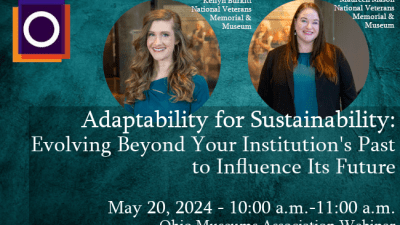
Adaptability for Sustainability: Evolving Beyond Your Institution’s Past to Influence Its Future – OMA Webinar
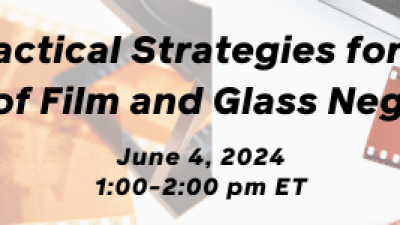
Practical Strategies for the Care of Film and Glass Negatives
Leave a reply cancel reply.
Your email address will not be published. Required fields are marked *
Latest Stories from AAM
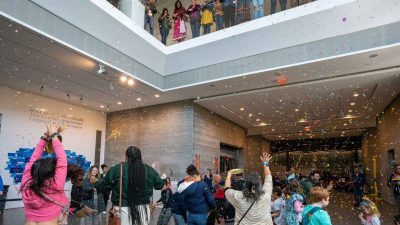
Extending the Invitation: Strategies for Welcoming Visitors and Reducing Barriers to Access
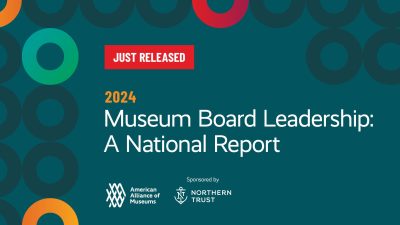
AAM Announces New Report on Museum Governance
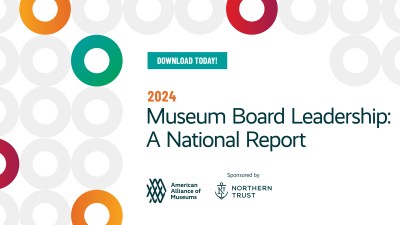
2024 Museum Board Leadership: A National Report

Social Impact Toolkit
Subscribe to field notes.
Packed with stories and insights for museum people, Field Notes is delivered to your inbox every Monday. Once you've completed the form below, confirm your subscription in the email sent to you.
If you are a current AAM member, please sign-up using the email address associated with your account.
Primary Role Archivist/Librarian Board Chair (unpaid) Community Outreach/External Relations Conservation Consultant/Independent Professional Curatorial Development Educator: College/University Educator: Museum Exhibitions Facility/Operations Finance & Accounting Former Director/CEO General Administrative Staff Government Agency Staff Government Relations HR IT/Web Legal Living Collections Care Membership Museum Events/Food Service Museum Store Museum Trustee Museum Volunteer Other Museum Function Other Non-Museum Function President/CEO/Executive Director Public Relations & Marketing Publications Registration/Collections Management Research: Audience Evaluation Research: Discipline Based Retired Museum Staff Security Senior Management/VP/COO/CFO/Division Director Student: Museum-Related Student: Other Visitor Services Volunteer Management
Are you a museum professional? Yes No
Are you a current AAM member? Yes No
Success! Now check your email to confirm your subscription, and please add [email protected] to your safe sender list.

Why are field trips essential for kids’ development?
Regular outings vs. educational field trips, the vital role of field trips in child development, incorporating field trips into curriculum, the role of field trips in summer camp programs.
- Children’s museum
Adventureland
Botanical garden, planning and organizing field trips, unlocking potential through field trips.
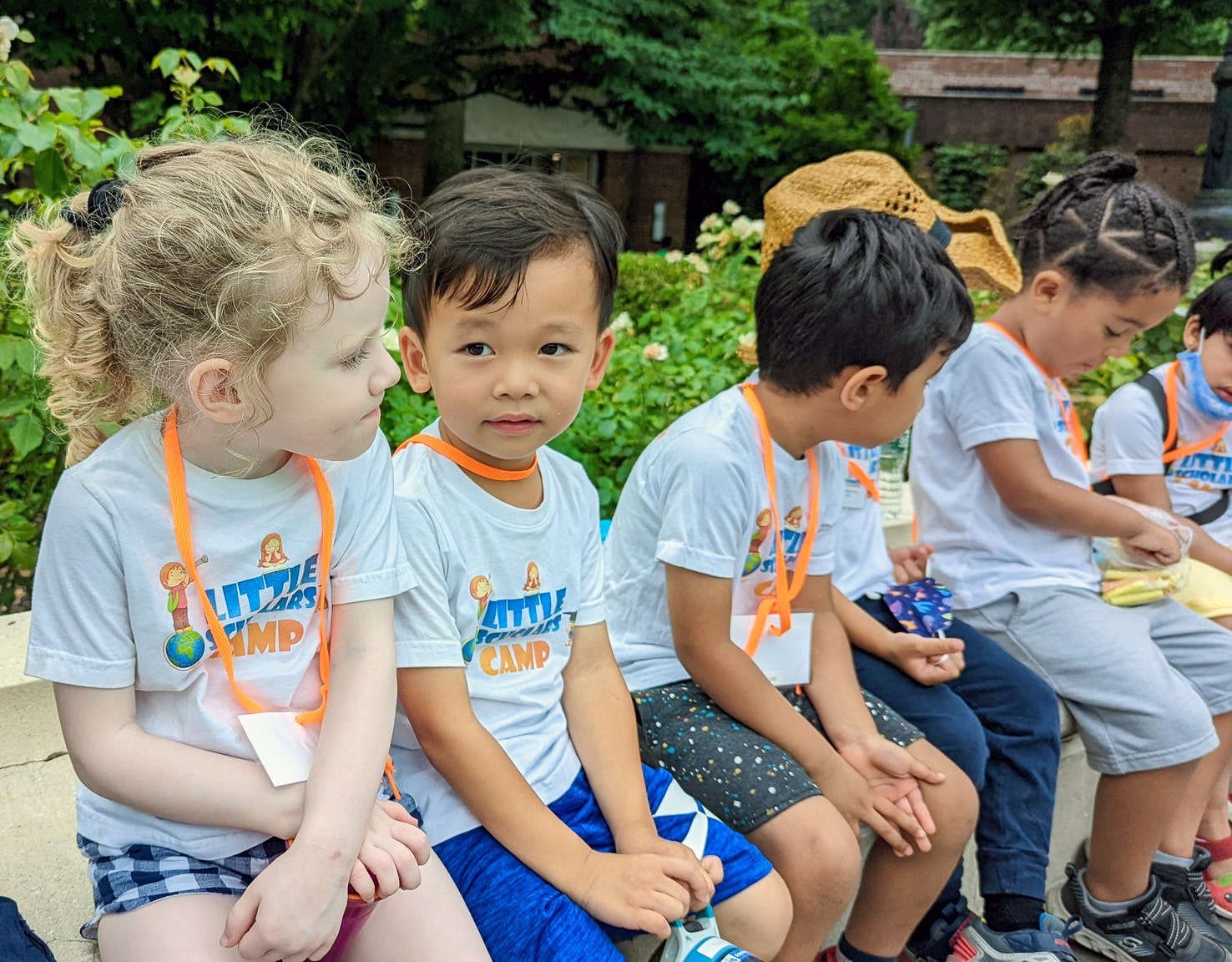
Field trips are an important element of the educational experience for kids. They let children learn in a more hands-on and interactive way, and to gain exposure to new settings and adventures. In this article, we will dive into the reasons why field trips are vital for kids’ development and explore the most amusing trip ideas.
What Are Educational Field Trips?
Educational field trips are structured outings with a specific learning objective in mind, organized by educational institutions like schools or daycare centers. These trips are designed to complement and enhance the curriculum by providing students with real-world experiences related to their studies. Unlike casual outings, educational field trips are purposeful and carefully planned to achieve educational goals, such as observing natural habitats in a science unit, visiting a museum for historical studies, or exploring a factory to understand manufacturing processes.
Regular outings, such as a visit to a park or a movie day, are primarily recreational and lack a structured learning component. These activities provide general exposure to the outside world and are often more relaxed, with the primary aim being enjoyment or leisure. On the other hand, educational field trips are intentionally designed to provide experiential learning opportunities that align with educational objectives. While enjoyment can be a part of these trips, the focus is on extending classroom learning, encouraging observation, inquiry, and critical thinking skills that directly tie back to the educational curriculum.
Field trips are crucial for children’s development for several reasons:
1. Learning outside of the classroom
Field trips provide kids with a chance to learn in a new environment, beyond the walls of the classroom. This can give a fresh perspective on the subject matter at hand and make learning more engaging and memorable. For example, a field trip to a museum can breathe life into history and help children understand and appreciate the past in a more meaningful way.
2. Exposure to new experiences
Checking out new things is another benefit of field trips. Kids get to experience things they might not have come across otherwise. This can broaden their horizons and help them develop an appreciation for different cultures, lifestyles, and ways of thinking. For example, a field trip to an art gallery can expose children to different forms of art and promote creativity.
3. Social development
Socializing with peers during field trips can develop and strengthen kids’ social skills. They can learn how to communicate effectively, work in teams, and respect other people’s viewpoints. This builds confidence and develops social skills that are essential for success later in life.
4. Real-world application of knowledge
By going on field trips, children can grasp how the knowledge they’re gaining in school connects to real-world situations. This can help make learning more relevant and allow kids to see the practical applications of what they are learning.
5. Exposure to nature
Visiting natural environments like parks, gardens, or forests on field trips can help kids develop a sense of appreciation for nature. This can foster a love of the outdoors and inspire children to become more environmentally conscious. On top of that, studies have proven that exposure to nature has a positive impact on children’s mental health and wellbeing.
Integrating field trips into educational programs requires thoughtful planning and a clear understanding of the curriculum objectives. Here’s how this can be achieved:
- Curriculum Alignment : Identify areas of the curriculum that can be enhanced through real-world experiences. For example, a biology class studying ecosystems could benefit from a trip to a nature reserve, while a history lesson on the civil rights movement could be enriched by visiting a relevant museum or historical site.
- Learning Objectives : Define specific learning objectives for each field trip. What should students learn or be able to do after the trip? Objectives should be measurable and achievable through the activities planned during the outing.
- Pre-Trip Preparation : Prepare students for what they will experience and learn. This could involve classroom lessons that introduce key concepts, discussions about what they will see, or research assignments to complete beforehand. Pre-trip activities help students connect the experience with their existing knowledge and understand its relevance.
- During the Trip : Engage students with guided tours, worksheets, scavenger hunts, or projects that encourage active participation and observation. Staff or guides can facilitate learning by pointing out specific items of interest, asking questions, and encouraging students to think critically about what they are experiencing.
- Post-Trip Activities : Reinforce the learning through follow-up activities in the classroom. This can include discussions, presentations, projects, or reflective essays where students synthesize what they learned during the trip and how it applies to their studies.
- Assessment and Feedback : Evaluate the effectiveness of the field trip in achieving its educational objectives. This can be done through quizzes, student feedback, discussions, or observing the application of new knowledge in subsequent lessons.
- Community and Parental Involvement : Involve parents and the community by informing them about the educational value of the trip, and, when appropriate, including them as volunteers or participants. This can enhance the learning experience and provide additional support for the educational objectives.
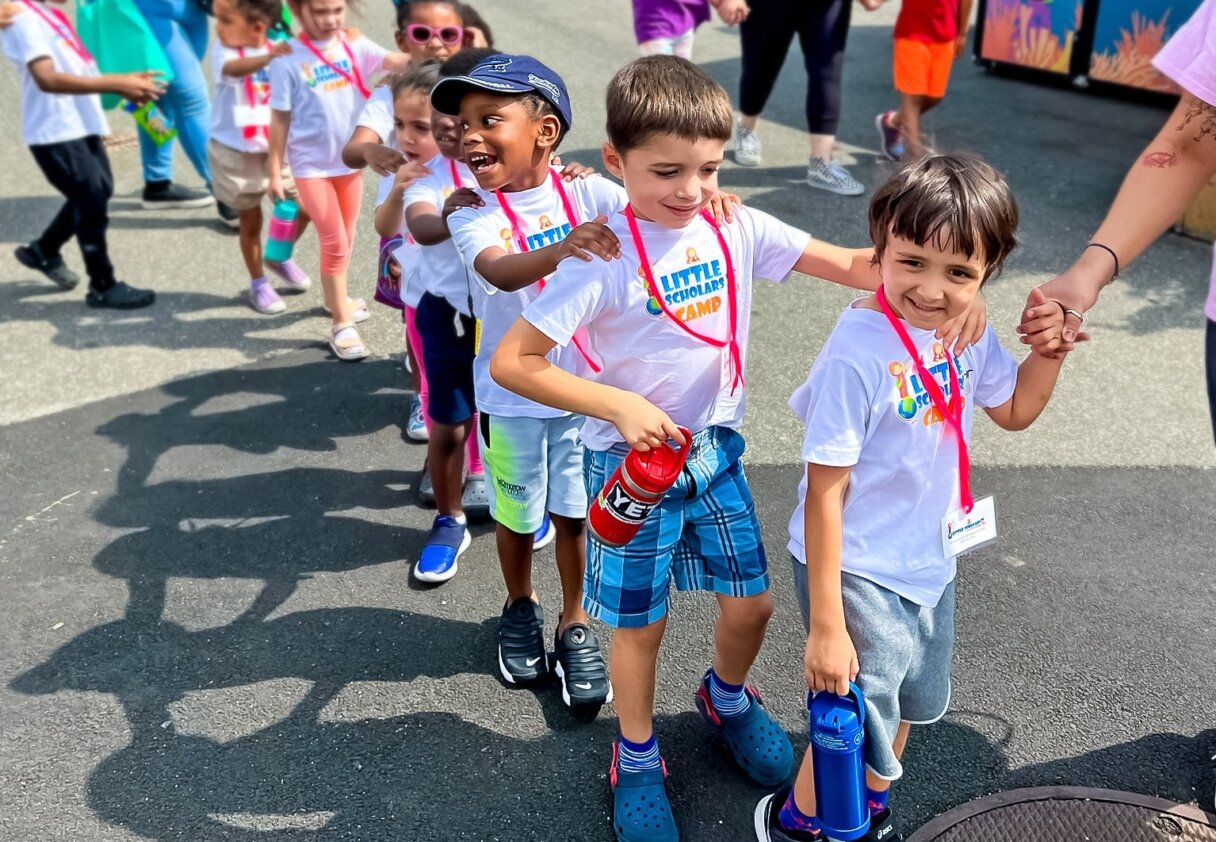
Field trips are a pivotal aspect of summer camp activities , offering children enriched learning experiences outside the conventional classroom environment. These outings serve as a platform for exploration and adventure, igniting curiosity and fostering a love for learning through real-world interactions. They play a crucial role in social development, enabling children to build and strengthen relationships through cooperative and communicative activities. Furthermore, field trips often connect children with nature, promoting environmental awareness and physical health through engaging outdoor activities.
These experiences also provide cultural exposure , broadening children’s perspectives and fostering appreciation for diverse histories and traditions. Additionally, field trips teach practical life skills, enhancing children’s independence and adaptability by navigating various social and public settings, making them an essential element of summer camp programs that contribute significantly to the holistic development of children.
Learning Outside the Classroom
Let’s take a closer look at some of the most entertaining field trip ideas for kids!
Field trips to farms are an excellent way to introduce kids to the natural world and teach them valuable lessons on agriculture, the environment, and animals. Visiting a farm can provide a bunch of benefits for children, from educational and personal prospective.
1. Learning about agriculture One of the key perks of a farm trip is that it can help children learn about agriculture. By getting a glimpse of how farmers grow crops and raise animals, kids can develop a better understanding of where their food comes from. They can also learn about the different types of crops cultivated in the area.
2. Understanding animal behavior A farm trip is an awesome chance for kids to learn about animal behavior. They can observe how cows are milked, how pigs are fed, and how chickens lay eggs, gaining knowledge of the different roles animals play on the farm and the importance of taking care of them.
3. Connecting with nature Connecting with nature is also one of the exceptional chances the farm trip presents for kids. They can experience the beauty of the countryside and the natural world, breathing in fresh air and enjoying the scenery. This can enable kids to develop a deeper appreciation for nature and understand the importance of protecting it.
4. Boosting physical activity A farm trip can be an excellent way for children to engage in physical activity. They can walk around the farm, carry buckets of feed, and interact with animals. This can help children develop gross motor skills, improve their coordination and balance, and provide an opportunity for exercise.
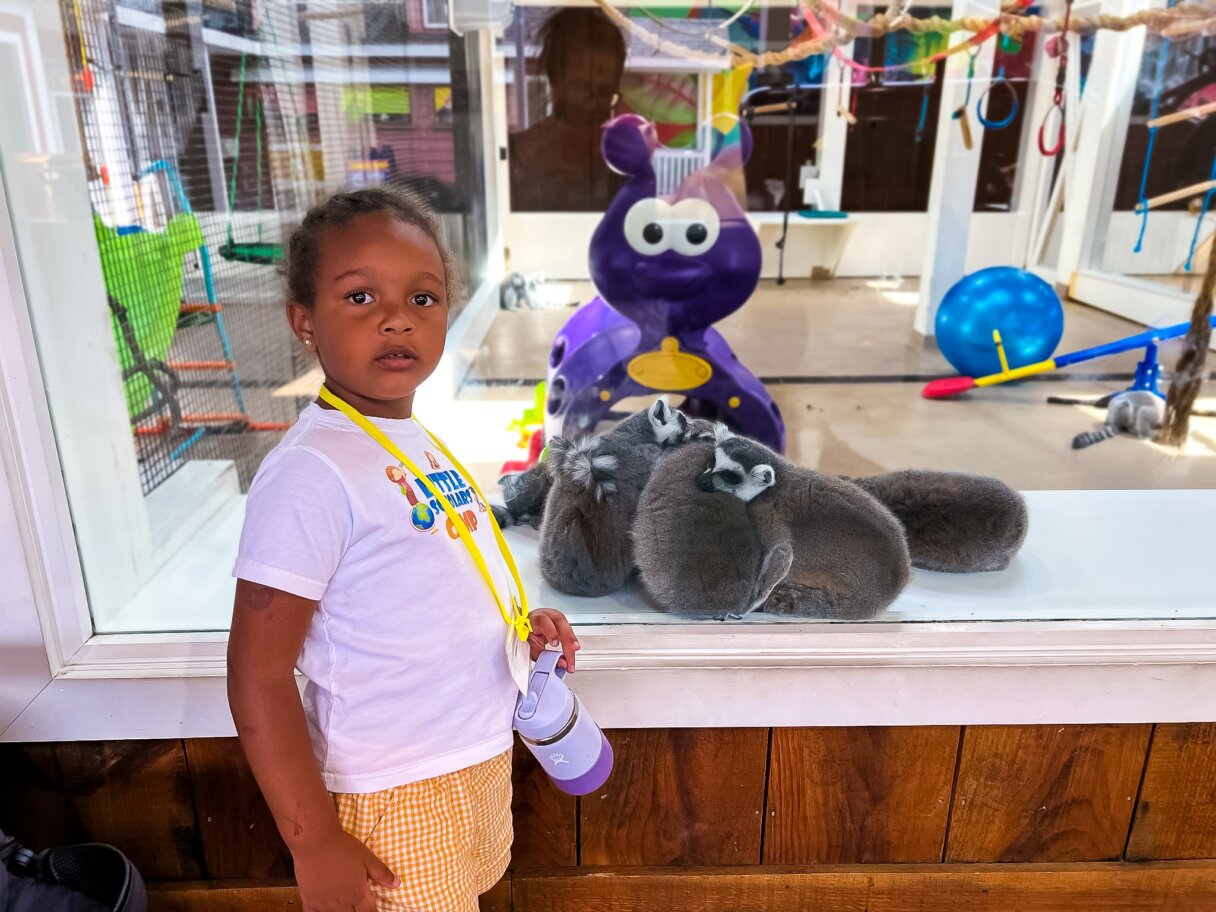
One of the most popular and beneficial field trips for children is a visit to the zoo. It lets them get an up-close view of animals, learn about diverse ecosystems, and get a better grasp of the world around them. This visit gives youngsters a rare chance to study animals up close, cultivate empathy and compassion, exercise their critical thinking skills, and enhance their socialization skills.
1. Encourages hands-on learning Field trips to the zoo provide a hands-on learning experience that cannot be replicated in the classroom. Kids get to see, touch, and observe animals in their natural habitats. This experiential learning technique helps children absorb information better and sparks their interest in the natural world.
2. Teaches environmental awareness With the help of field trips to the zoo kids may learn about the environment and the importance of conservation. Many zoos have exhibits that highlight endangered species, and they often provide information about what people can do to help protect them. Through this type of learning, children can grow to appreciate the world of nature and become more environmentally conscious.
3. Develops empathy and compassion By visiting the zoo, kids can develop empathy and compassion for animals. Seeing animals up close and learning about their behaviors, can help them comprehend their needs and feelings. This understanding can foster a sense of compassion and respect towards animals and their habitats.
4. Encourages critical thinking Engaging in critical thinking is another perk children get from visiting the zoo. As they observe and learn about different animals, they may be prompted to ask questions and seek answers. This type of inquiry-based learning can help children develop critical thinking skills and instill a love of learning.
Children’s museum
Children’s museum field trips offer a wide range of benefits for kids that go beyond a day of fun and entertainment. These institutions are specifically designed to provide educational experiences that spark curiosity, creativity, and imagination in young minds. A visit to a children’s museum can be a great way for kids to learn about the world around them, explore new concepts, and gain new skills.
1. Hands-on, interactive learning experience Many exhibits and displays are interactive, allowing children to touch, manipulate, and experiment with different objects and materials. This type of learning is often more effective than passive forms of education because it encourages children to actively engage with the information they are learning.
2. Fosters creativity and imagination Several displays are meant to pique children’s imaginations and inspire them to think differently. Children can explore their own interests and ideas, as well as learn about different fields of study and career paths. This type of exposure can be particularly beneficial for kids who may not have access to these types of experiences in their daily lives.
3. Develops social skills These trips often involve interacting with other children and museum staff, which can help children learn how to communicate effectively, make friends, and work together. These skills are essential for future success in school and in life.
Adventureland is a theme amusement park that offers an array of activities and attractions, such as roller coasters, water rides, and interactive exhibits. Beyond the excitement of the rides, there are lots of educational and social benefits that come with taking kids on a field trip to Adventureland.
1. Educates about science Many of the attractions in the park are designed to teach students about science, physics, and engineering. For example, students can learn about centrifugal force and gravity on the roller coasters and water rides.
2. Broadens horizons The park’s interactive exhibits offer a fun and engaging way for children to learn about various topics such as history, geography, and art. This can help to broaden their horizons and spark their curiosity.
3. Promotes physical activity Lots of the rides and attractions require physical exertion, which can be a fun way for students to stay active and burn off excess energy.
4. Fosters a love of learning and exploration For many students, a trip to Adventureland may be their first time visiting a theme park, and the excitement and sense of adventure can stay with them for years to come. These memories can also help to foster a love of learning and exploration that extends beyond the classroom.
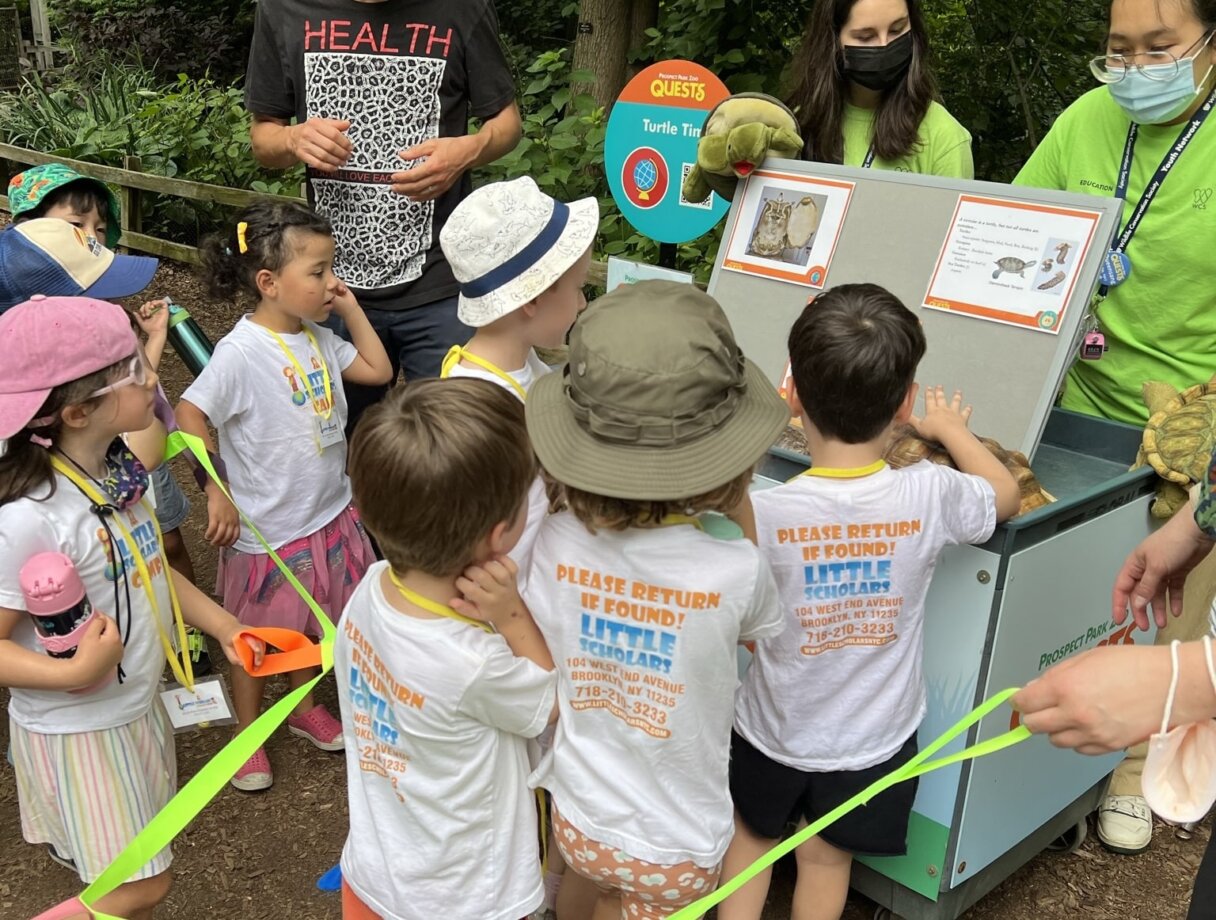
Field trips to the botanical garden allow children to learn about the world around them, develop their scientific and observational skills, and foster a love of nature. Botanical gardens are outdoor spaces that are designed to showcase a diversity of plant life from around the world. These gardens often have specialized areas dedicated to specific types of plants such as herbs, trees, succulents, or aquatic plants. With a help of such field trips your kid will be able to attain the following:
1. Learn about plant diversity A botanical garden is a great spot to introduce children to the huge variety of plant species out there. They can discover the differences between flowering plants, non-flowering plants, and how plants are classified based on their characteristics.
2. Understand plant life cycles Taking a field trip to the botanical garden can also help children understand the life cycles of plants. They can witness how plants grow from seeds, and learn about the different stages of plant development from sprouting to flowering and fruit production. Moreover, they can delve into the importance of pollination, how different pollinators help plants, and how plants have adapted to attract them.
3. Develop observation skills Botanical gardens offer a unique chance for children to sharpen their observation skills. They can observe the different shapes, sizes, and colors of plant leaves, flowers, and fruits. Additionally, they can develop an awereness of how plants interact with each other and with the environment, such as how they compete for resources or adapt to different weather conditions.
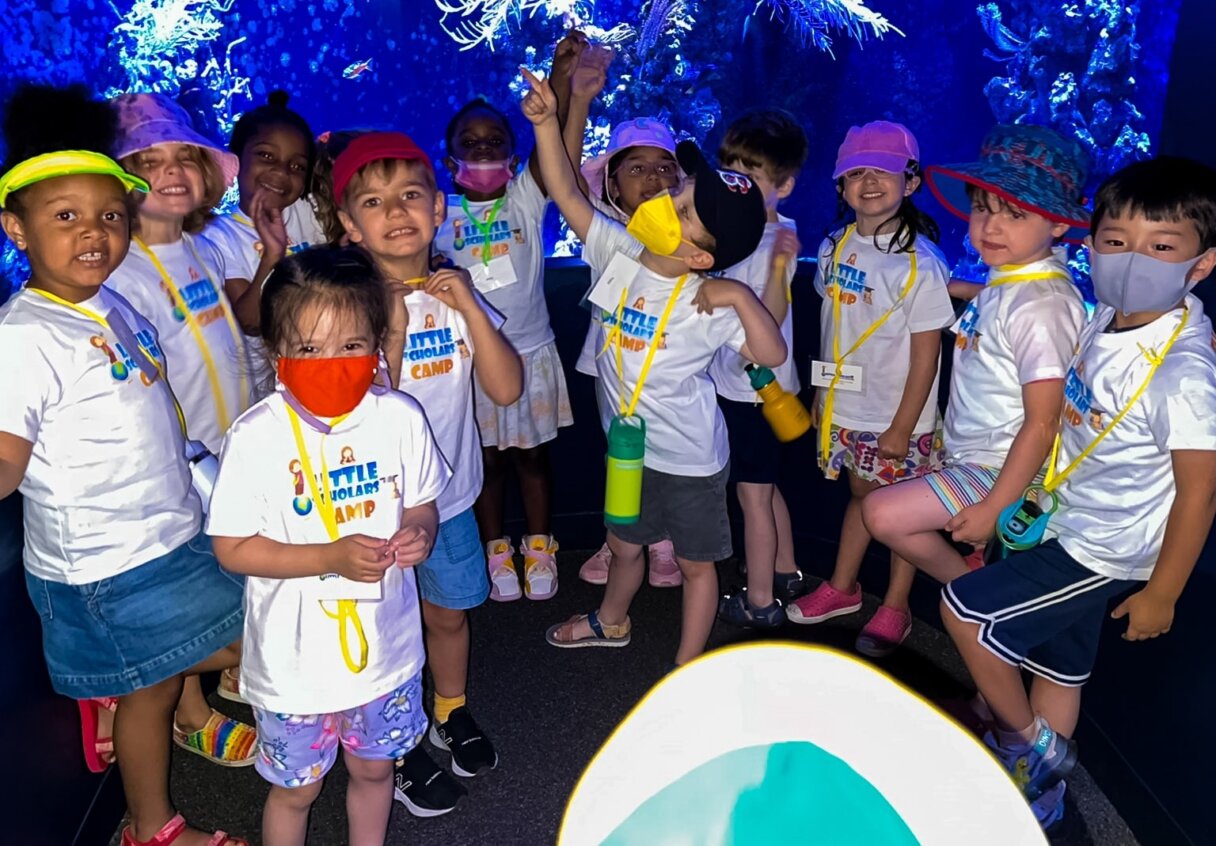
Another unforgettable experience for kids will be taking a field trip to an aquarium. Not only is it a great chance for kids to learn about the fascinating creatures that live under the water, but it can also help promote an appreciation for the environment.
1. Educational Experience Aquariums are a fantastic source of knowledge and information about marine life. Kids can learn about the different types of fish, their habitats, and behaviors. Besides, they can discover the diverse ecosystems that exist in the ocean and understand how everything is interconnected.
2. Promotes Environmental Awareness By visiting an aquarium, kids can learn about the importance of taking care of the environment and protecting marine life. It is essential to teach children about the impacts of pollution and climate change on the ocean’s ecosystem, and an aquarium can help them understand these concepts better.
3. Inspires Creativity Aquariums can be a source of inspiration for children’s creativity. Kids can observe the different colors and patterns of fish and other creatures, which can spark their imagination and inspire them to create their own artwork or writing.
4. Encourages Curiosity Field trips to aquariums can stimulate children’s curiosity and encourage them to ask questions. They may want to know how fish breathe underwater or how they swim. Answering these questions can help them understand the processes that exist in the world of nature and inspire them to learn more.
5. Provides a Change of Environment For sure, moving from the classroom to aquarium is a change of setting, where kids experience something new and exciting. This can be a refreshing break from their regular routine. The aquarium’s calming atmosphere can also help reduce stress and improve mental health.
Legoland is a unique place where children can learn and explore the world of science, technology, engineering, art, and mathematics (STEAM) through interactive exhibits and hands-on activities.
1. Learning through Play Legoland offers a variety of exhibits and activities that encourage learning through play. Kids can explore the park’s many themed areas, build their creations with Lego bricks, and participate in educational workshops and demonstrations. These experiences help kids develop important skills, such as problem-solving, critical thinking, and creativity, in a fun and engaging way.
2. STEAM Education Field trips to Legoland can offer a valuable chance for kids to learn about STEAM subjects in a hands-on and interactive way. The park’s exhibits and activities feature principles of science, technology, engineering, art, and mathematics in an approachable and captivating way for kids.
3. Creativity and Imagination Legoland encourages kids to tap into their creativity and imagination through building with Lego bricks and participating in creative workshops and activities. Moreover, kids can use their imaginations to create their structures, buildings, and machines, allowing them to express themselves creatively while also learning important skills such as design and problem-solving.
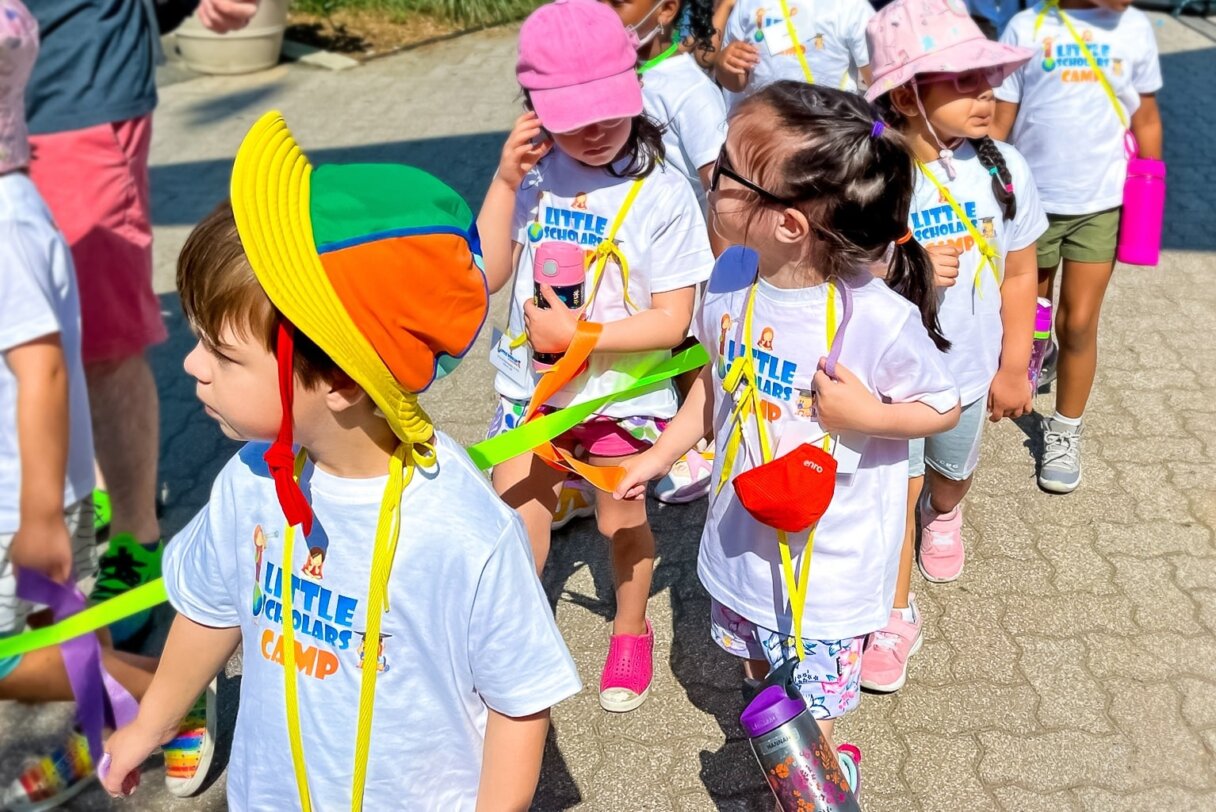
When planning successful and educational field trips, you should focus on the following tips, with particular emphasis on safety, educational objectives, and engagement:
- Clearly Define Educational Objectives : Start by identifying what you want the children to learn or experience. Align the trip with your curriculum goals to ensure that the activities are educational and meaningful.
- Choose Appropriate Locations : Select destinations that are age-appropriate, safe, and relevant to the educational objectives. Consider places that offer interactive and hands-on learning opportunities to maximize engagement.
- Conduct Pre-Visit Planning : Visit the site beforehand, if possible, to plan logistics and identify potential learning opportunities and safety hazards. This will help you tailor the experience to your group’s needs and interests.
- Prepare the Children : Educate the students about the trip beforehand. Discuss what they will see and do, and set behavioral and learning expectations. This preparation can enhance their engagement and ensure they get the most out of the experience.
- Focus on Safety : Ensure all safety measures are in place, including transportation, first aid, and supervision. Have a clear plan for emergencies and ensure all children are accounted for at all times.
- Maintain a Favorable Student-to-Staff Ratio : Adequate supervision is crucial for both safety and educational support. Ensure you have enough adults to effectively manage and engage with the children.
- Engage Students During the Trip : Use interactive and participatory methods to keep students engaged. Consider activities like scavenger hunts, guided tours, and worksheets that connect with the educational objectives.
- Follow Up After the Trip : Reinforce the learning by integrating post-trip activities into your curriculum. Discussions, projects, or presentations related to the trip can help solidify the experience and integrate it into ongoing learning.
- Gather Feedback : After the trip, collect feedback from students and staff to assess the effectiveness of the experience and make improvements for future trips.
All of the above-mentioned field trips are available to children through Little Scholars’ Summer Camp program ! Our exciting program offers a variety of fun-filled field trips, including visits to the Farm, Zoo, Children’s Museum, Adventureland, Botanical Garden, Aquarium, and even Legoland!
At Little Scholars, we believe that summer should be a time of exploration, adventure, and learning. Our expertly crafted field trips are designed to spark your child’s curiosity, encourage hands-on exploration, and promote a love of learning. Children who are curious about the world around them are more likely to be motivated to seek out new experiences and continue to learn throughout their lives!
With our experienced and passionate teachers, your child will enjoy a safe and engaging summer filled with new experiences, friendships, and memories that will last a lifetime. So why wait? Sign up for Little Scholars’ Summer Camp program today and give your child a summer they’ll never forget!
Related articles

Why is it a good idea to send kids to Summer Camp?
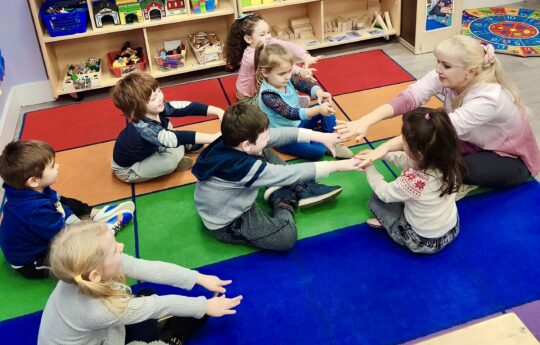
How should the right to vote be explained to kids?
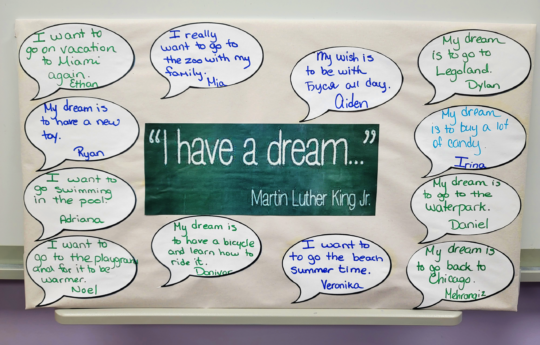
How to set goals for the next year with your child?
- Grades 6-12
- School Leaders
Win Big in Our Teacher Appreciation Giveaway 🎁!
Field Trip Reflection Sheet (Free Printable)
Make your time outside the classroom meaningful.
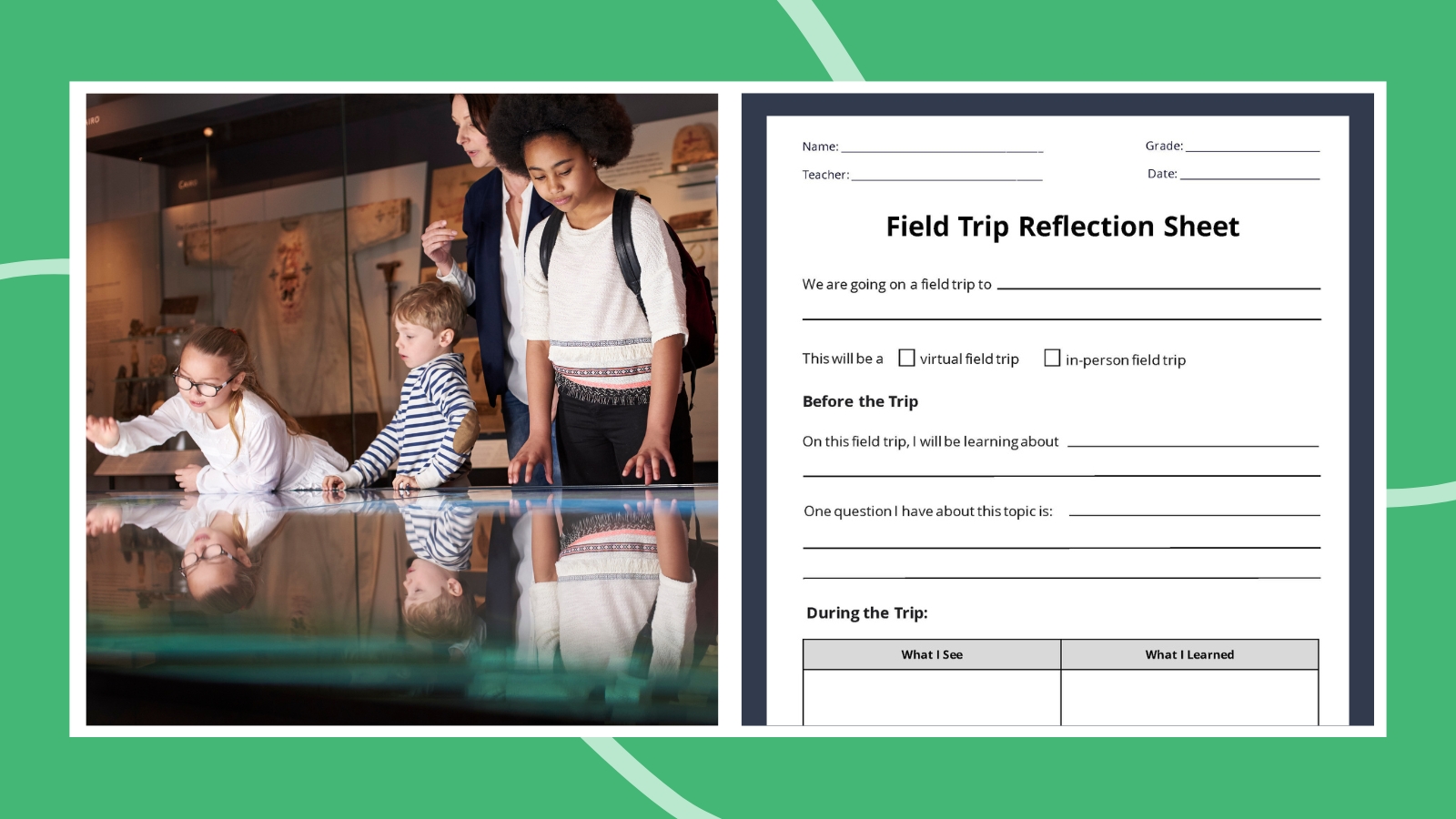
Field trips are amazing! They give kids the chance to explore a new place, learn more about specific topics, talk to experts, and see demonstrations and examples you just can’t do at school. Whether you’re taking a field trip to a local library or zoo or you’re participating in a virtual field trip to a space center or aquarium, you’ll want the field trip to be a pivotal learning experience. That’s where our Field Trip Reflection Sheet comes in.
The impact field trips have on students often has to do with how they engage with the information they learn. Incorporating a field trip reflection worksheet helps students focus on what’s important to them and what it means for their learning and life. Get the free Field Trip Reflection Worksheet by simply filling out the form on this page .
What kind of reflection sheets are in the bundle?
You’ll find two field trip reflection sheets, one for elementary schoolers and one for middle and high schoolers. Each reflection sheet works for either in-person or virtual field trips.
Elementary School Field Trip Reflection Sheet
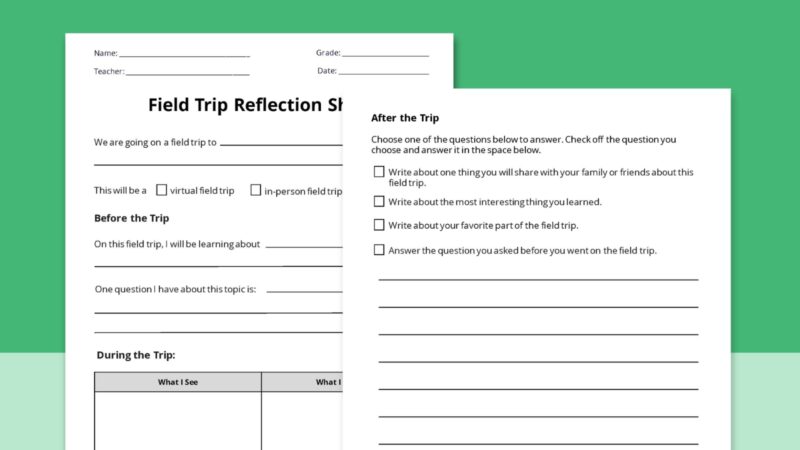
Elementary schoolers can identify where they are going and what they are going to learn about before they head out of the building or log in to the field trip. Then, during the field trip, students record observations and information they learn. After the trip, students choose one response as a reflection to help consolidate their learning.
Middle and High School Field Trip Reflection Sheet
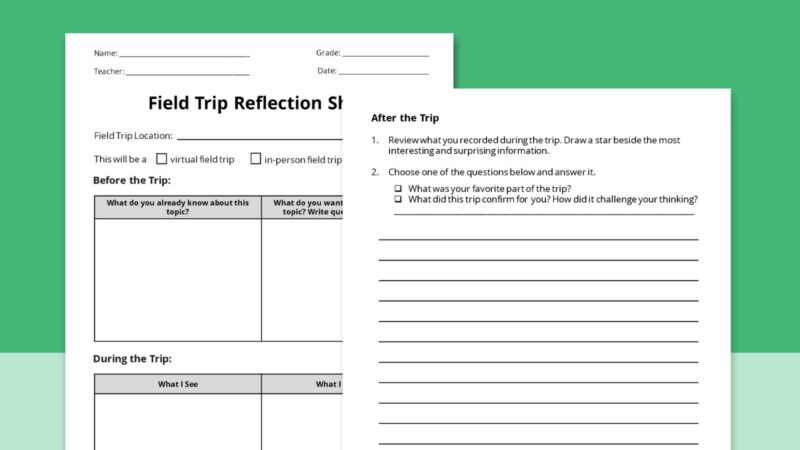
Before the trip, older students activate background knowledge so they’re primed to connect new information with what they already know. Once on the trip, they record observations and information. After the trip, students can choose a question or answer a teacher-directed question to consolidate what they learned.
What are some field trip reflection questions?
Here are ideas for field trip reflection questions that you can incorporate into the Field Trip Reflection Sheet:
- What was the most important thing you learned on today’s field trip?
- What should someone else know about this topic?
- What was your favorite part of this field trip?
- Who else would enjoy this field trip and why?
- How does the information you learned on today’s field trip connect with what you already knew?
- What is one way that the information you learned today confirms what you already knew? What is one way that it challenged what you already knew?
- In five years, what will you remember from this field trip?
Use the Field Trip Reflection Worksheet as a way to keep students focused. You can also use it as an exit ticket or assessment after the trip. This is especially helpful for field trips that require parent chaperones as you can see what students were doing during the trip and provide some accountability for students’ learning.
Get your free Field Trip Reflection Sheet printable!
To get your free printable bundle, just fill out the simple form on this page for instant access.
Need field trip ideas? Check out these 260+ field trip ideas (in-person and virtual).
You might also like.
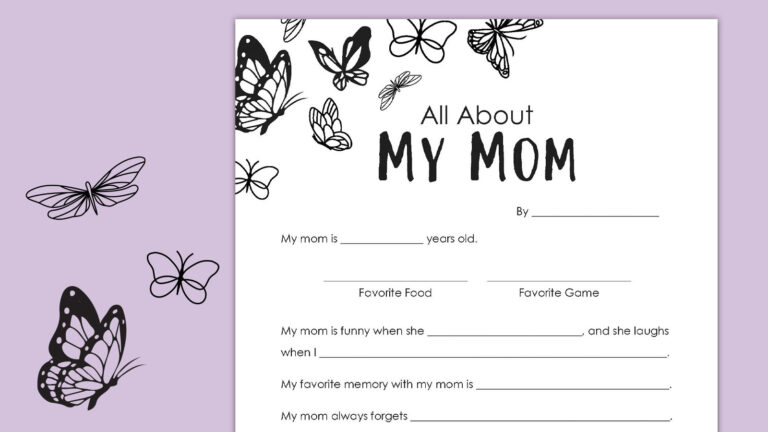
Free Printable Mother’s Day Questionnaire To Share Love and Laughs
Mother's Day gift solved! Continue Reading
Copyright © 2024. All rights reserved. 5335 Gate Parkway, Jacksonville, FL 32256
Just in time for Mother's Day, shop our 25 Best Mother's Day Gifts.
FIELD & STREAM+
- Join 1871 Club
How to Find Your Natural Point of Aim—and Why It Matters
If you don't know what your natural point of aim is, then you can improve your shooting significantly just by reading this article
By Matthew Every | Published May 2, 2024 11:00 AM EDT
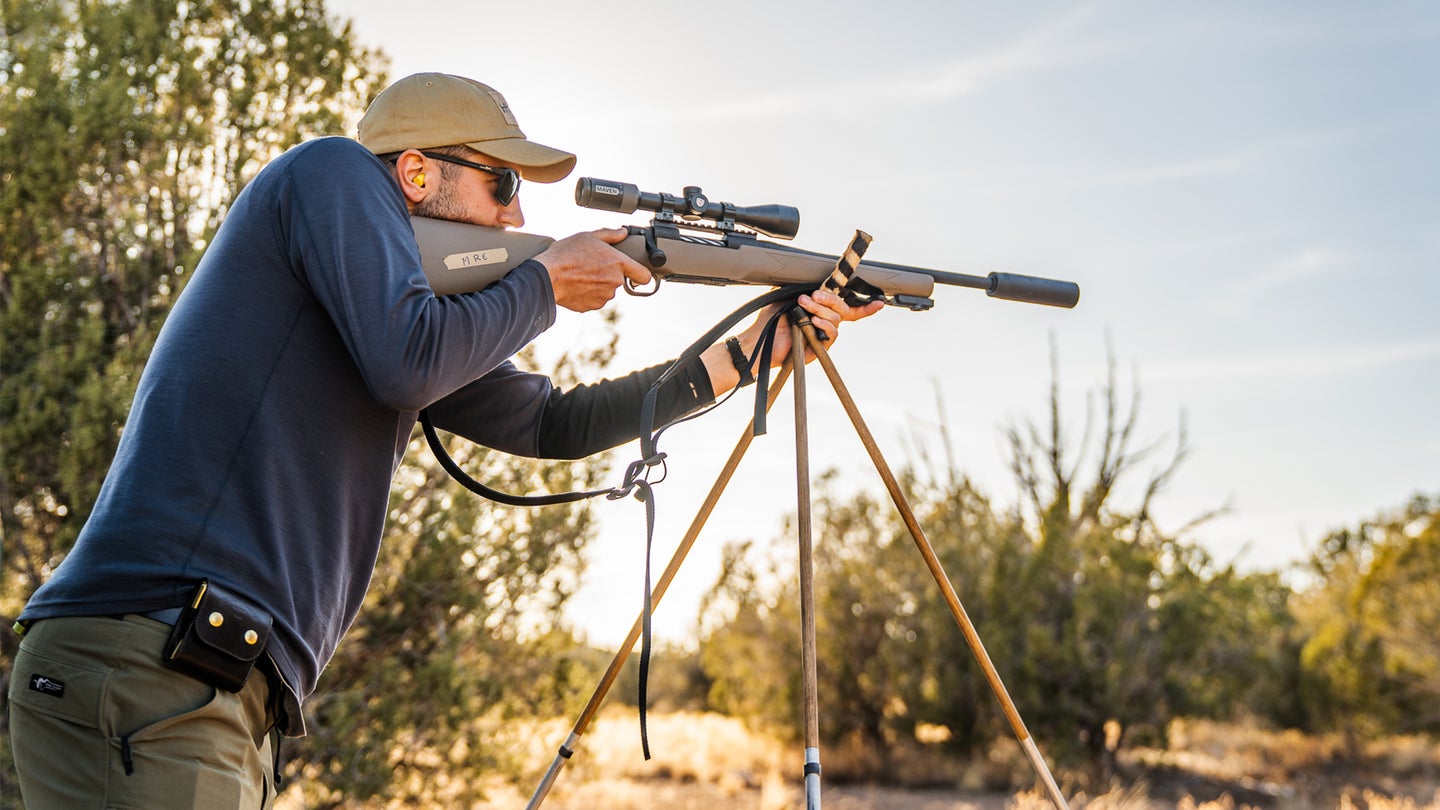
We may earn revenue from the products available on this page and participate in affiliate programs. Learn more ›
Picture this. You’re at the range, at a shooting bench or lying prone, with a rifle in hand. No matter what you do, you can’t get the crosshair to stay still on target. You pull the stock tighter to your shoulder and bear your cheek down on the comb, but the rifle still wants wobble. Does this sound familiar? Then you probably don’t understand “natural point of aim.”
Basically, natural point of aim is where your body wants to point a rifle when you’re relaxed. It applies when you’re prone, on a tripod, off-hand, or at a shooting bench. Work against natural point of aim and you’re apt to either miss or make bad shots. Work with it, and your groups will tighten up. The funny thing is, most shooters are unaware of natural point of aim.
Shooters who ignore natural point of aim try to muscle their rifles on target. When you do understand where your body wants to point a rifle when relaxed and you align that point of aim with your target, you’ll be surprised how much your shooting improves. The best part is that it isn’t hard to find your natural point of aim. Once you do, you’ll wonder how you ever got by without it.

What is Natural Point of Aim?

Natural point of aim is exactly what it sounds like. It’s where your body and rifle are aligned naturally in a relaxed state. Ideally, your natural point of aim will be aligned perfectly with the target. But sometimes it isn’t—especially if you’re unaware of your natural point of aim. The trick is to move your body and make subtle adjustments in your setup to get everything lined up. Otherwise, you’ll always be contorting your body somewhat—and applying unwanted torque to the rifle—in oder to stay on target, which results in more wobble and poor shooting.
Related: 7 Long Range Shooting Tips from an Army Sniper Instructor
How Do You Find Your Natural Point of Aim?

Finding your natural point of aim is easy, you don’t even need to shoot to figure it out. Start with an unloaded rifle in a shooting position you’d likely use in the field or at the range. For example, go with prone off of a bipod or backpack and aim at a target.
Close your eyes and relax into the most comfortable position you can take while still holding your rifle steady enough for a shot. Hold that position for 1 to 3 seconds. Open your eyes and check where your reticle is pointing. This is your natural point of aim. If you’re off the target, then you need to adjust your body to line up with your target.
Offhand and unsupported shooters can take another approach. With an unloaded rifle, close your eyes and mount your rifle. Then open them. This will tell you where your body wants to aim the rifle without the influence of where your target is. The trick is to get your body into position to align with the target every time, and recognize when you’re off target before pulling the trigger.
How to Adjust Natural Point of Aim

Adjusting natural point of aim is also simple. If you’re off the target, you need to move your whole body to get back on target. At first, try adjusting your body—your shoulders especially—to square up more directly with the target, then close your eyes, relax, and check your natrual point of aim again. Repeat this process until you’re relaxed on target with your eyes open. With time, you’ll understand when you’re aligned properly with your target without needing to close your eyes, relax, and check. What you don’t want to do is move your rifle on target without moving your whole body.
If you’re taking mutiple shots, you’ll might need to slightly adjust your natural point of aim throughout a course of fire. The idea is to have your reticle on target with either very little wobble or consistent wobble within the size of the target you want to hit. For a steel plate, this would mean your crosshair never leaves the edges of the target. For a deer, it should never leave the kill zone.
How to Double Check Natural Point of Aim
The best shooters I know do a lot of dryfire practice. It saves money on ammo, but it also lets you manipulate a rifle without the sensory overload of a round detonating. Dryfire can help with natural point of aim, too. After you get into a position where your natural point of aim and target are aligned (and you’re positive your rifle is unloaded, with the muzzle pointed in a safe direction), pull the trigger. The more your reticle moves when the trigger breaks, the further off your natural point of aim is. Close your eyes, relax again, and repeat the process. With pratice, you’ll find exactly when you’re body and target are aligned.
Why Natural Point of Aim is Important

If you don’t shoot to your natural point of aim, you’ll fight your rifle to stay on target. Any stability you get will rely on your muscles to hold the rifle away from your natural point of aim and onto the target. If you notice an inconsistent wobble in your reticle or feel yourself straining to hold a position while shooting, you’re probably outside of your natural point of aim. If this is happening to you, take a few breaths, and adjust your body to align with your target until the wobble stops or stays within the target. Then all you have to do is focus on the reticle and pull the trigger.
Maintain Natural Point of Aim in Different Positions
I rarely use the basic shooting positions (standing, seated, kneeling, prone) while hunting. Instead, I usually look for something to support my rifle, like a tree, a rock, a treestand rail, or the ground; or I use a shooting aid like a tripod, bipod, or shooting sticks. Some are steadier than others, and natural point of aim still matters for all of them. If I’m standing with my rifle braced against a tree, aiming at a squirrel, I’ll move my feet and adjust my body to be as natural as possible. Of course, some positions might be trickier than others, but you should try to get as relaxed as possible while still supporting your rifle and absorbing recoil. For a time, you’ll need to consciously adjust for your natural point of aim, but it will become more and more automatic the longer you do it—and your shooting will get better as a result.
Read Next: The Best Long Range Rifles for 2024, Tested and Reviewed

Matthew Every has been with Field & Stream since 2019, when he joined the team as the Associate Online Editor for both F&S and Outdoor Life. Before that, he worked as a hunting guide and wrote about his adventures in his free time. Every has lived all over the country, but calls New York’s Catskill Mountains home.
- Skip to main content
- Keyboard shortcuts for audio player
The states to watch on the 2024 electoral map

Domenico Montanaro
To better understand the landscape for the presidential election with a little more than six months to go, here is our initial Electoral Vote map of the cycle.
It focuses on the states that are expected to be most competitive in the effort by the campaigns to get to 270 electoral votes, a majority of the 538 total available.
There are a number of paths each candidate can take to victory. Follow them here.
This analysis, which will appear and be adjusted semi-regularly until Election Day, goes beyond just polling and is based on conversations with campaigns and strategists, NPR reporting from the field, campaign activity, and historical and demographic trends.
It lays out which direction the states are leaning at this point and are organized into seven categories — Toss Up, Lean Republican, Lean Democratic, Likely Republican, Likely Democratic, Safe Republican and Safe Democratic.

Voting booths are seen at Glass Elementary School's polling station in Eagle Pass, Texas, on November 8, 2022. Mark Felix/AFP via Getty Images hide caption
Voting booths are seen at Glass Elementary School's polling station in Eagle Pass, Texas, on November 8, 2022.
State analysis and ad spending
Trump holds slight advantages in most of the swing states right now, according to averages of the polls. Strictly going by the polls, Trump would have a 283-255 lead (if you give Biden Pennsylvania and Wisconsin, which are currently statistical ties).
But the toss up states are expected to be close, within just a few points, in either candidate's direction. Biden currently has a massive war chest and ad-spending advantage. In addition to personnel, ads are the largest expenditure of a presidential campaign.
Third-party scramble
It's also unclear how third-party candidates could affect the map. Robert F. Kennedy Jr. has been pulling double digits in polling, and it's not totally clear which side he pulls most from. Polls have shown him pulling evenly, some have shown him pulling more from Trump, others more from Biden. The Biden campaign would prefer a one-on-one matchup with Trump and super PACs are cropping up on the left to attack Kennedy's record.
He's qualified so far for the ballot in three states — Michigan, Hawaii and Utah. A Quinnipiac poll last month showed Trump's lead expanding from 3 to 5 points when RFK Jr. was included. Kennedy's campaign and a super PAC supporting him say he has enough signatures to potentially also get on ballots in Arizona, Georgia, Idaho, Iowa, Nebraska, New Hampshire, Nevada, North Carolina and South Carolina.
The state of play in the states
In Pennsylvania and Wisconsin, Biden has caught up, pulled even or taken a lead in some recent surveys. And Pennsylvania happens to be where Biden and allies are spending the second-most on ads right now — almost $4 million in the past month and a half since Super Tuesday, the unofficial start to the general election.
That's only slightly behind what they're spending in Michigan. Biden is trying to make up ground there with younger voters and Black voters, groups he's lagging with. Trump and groups supporting him have spent only about $700,000 in Pennsylvania in that same time frame.
Team Biden has also spent $2 million in Wisconsin. Trump and groups supporting him have spent nothing there so far.
Most of the money in this election is going to be poured into seven states, and they fall into two familiar buckets — the so-called "Blue Wall" states of Michigan , Pennsylvania and Wisconsin and the Sun Belt states of Arizona , Georgia, North Carolina and Nevada .
The Blue Wall states are home to significant shares of white, working-class voters, but Biden has retained strong support with unions. Democrats are also putting in significant efforts, especially in Wisconsin , to reach Black voters and be on college campuses. All three states have significant Black populations and multiple colleges and universities.
While North Carolina was also close in 2020 — within 2 points — given its history of voting Republican, it begins the cycle in the Lean Republican category. Democrats feel the gubernatorial race in the state could help them, as Republicans nominated a highly controversial candidate, who could turn off swing voters.
The increasing population of white, college-educated voters in the state's Research Triangle continues to make the state competitive. But Republicans have won it in all but one presidential election since 1976.
Demographics are important but it isn't everything
The industrial Midwest has moved more toward Republicans because of the shift toward the GOP among white voters without college degrees. That's why states like Ohio and Iowa, which were competitive for decades until the Trump era, are no longer Democratic targets.
It's the key group Trump is targeting. But they are declining as a share of the population and of the electorate. That's a big reason Trump lost despite whites without degrees voting at a higher rate in 2020 (64%) compared to 2016 (55%), according to data from Michael McDonald, the preeminent turnout expert in the country and professor at the University of Florida.
It's also because of the continued shift with college-educated white voters toward Democrats. In 2020, Trump won college-educated white men by 3 points in 2020, according to exit polls, but the latest NPR/PBS NewsHour/Marist poll showed Biden winning the group by more than 20 points.
Combined with the increasing Latino and Asian American population and a remigration to the South of young Black voters, particularly in Georgia, that has meant a reshaping of the electoral map.
"In 2024, we'll see an even more diverse electorate than we saw in 2020, which was even more diverse than 2016 and more diverse than 2012," McDonald predicted.
Consider that 20 years ago, Republican George W. Bush won Arizona, Colorado, Georgia, Nevada, New Mexico and North Carolina. That's all changed, as each is either competitive or clearly in the Democratic column.
In addition to the Latino population increase in the Southwest, McDonald pointed to the uptick in Asian Americans, and a remigration of Black voters to Georgia as to why those states continue to trend toward Democrats.
But it's not all demographics. Latinos, Black voters and young voters all view the economy negatively. Majorities overall disapprove of Biden's handling of the economy and more voters say they think the economy was better under Trump.
"Issues matter as well," McDonald noted. "But the sort of issues that can move a sizable chunk of the electorate change with the demographics. And so that's where the two things intersect."
Post-pandemic election realities
This year's election is also going to be different from 2020 in a very big way. Because of the pandemic, mail-in voting was used widely and that contributed heavily to increased turnout. In 2020, 66% of registered voters cast ballots, the highest since 1900 . That's unlikely to be the case again, McDonald noted.
"I would be very surprised if we have a turnout rate like we saw in 2020," McDonald said. "And the people who would most likely then not participate ... are going to be these lower-education voters. And so it's going to pose a real challenge to the Trump campaign, to energize these folks yet again to vote in 2020."
NOTES: President Biden is headed to Tampa, Fla., this week for a campaign event. Campaigns will say that nothing is more precious than a candidate's time, and that stops in a particular state can move numbers. Because of an abortion-related ballot measure in the state, Democrats think they can make Florida competitive. That may be, but it's incredibly expensive because it's such a large state with so many TV markets. In 2020, the Biden team spent more than $150 million in Florida, more than any state, to no avail. To this point, the Biden campaign has spent almost nothing in ads on the state and the polling has, to this point, shown Trump well ahead. For now, it ranks decidedly below the most competitive states. Texas is a majority-minority state, but remains something of a white whale in Democratic politics. In 2020, it was the closest it has been since 1996, decided by 7 points. But with other paths to 270 and how expensive Texas is to advertise and organize in, expect the core seven states to be the focus.

In this combination of file photos, President Joe Biden, left, speaks on Aug. 10, 2023, in Salt Lake City, and former President Donald Trump speaks on June 13, 2023, in Bedminster, N.J. Biden and Trump have set up a political movie the country has seen before — even if the last version was in black and white. Andrew Harnik/AP hide caption
In this combination of file photos, President Joe Biden, left, speaks on Aug. 10, 2023, in Salt Lake City, and former President Donald Trump speaks on June 13, 2023, in Bedminster, N.J. Biden and Trump have set up a political movie the country has seen before — even if the last version was in black and white.
Paths to 270
As the map stands, if Trump and Biden win the states leaning in their direction, Trump would need to win 35 electoral votes from the toss ups to get to 270, and Biden would need 44.
Here are three paths to get over the top for each candidate.
- The Blue Wall Crumble: Trump toppled the Blue Wall in 2016, winning Wisconsin, Michigan and Pennsylvania. If he did so again, the 44 electoral votes there would be more than enough. Any other states would be icing. But importantly: Trump likely needs to win at least one of these states to win election again, because the Sun Belt states of Nevada, Arizona and Georgia only provide 33 Electoral Votes.
- Sun Belt Plus: Trump could sweep the Sun Belt, but would come up short if he were to lose all the Blue Wall states. That would mean a whisker-close, 270-268 loss for Trump. So he would need at least one other state — likely one of the toss-up Blue Wall states, or he could aim to pick off New Hampshire or Minnesota... or win the one electoral vote in Nebraska's 2nd Congressional District, which would lead to a tie race (see below).
- The Eastern Front: Pennsylvania and Georgia provide exactly the 35 Electoral Votes Trump would need to get over the finish line and would put him at 270, even if Biden wins Michigan, Wisconsin, Arizona and Nevada.
- The Repeat: Remember, Biden already won once and with 51% of the vote, so he just has to convince the people who voted for him once to do so again. Biden won in 2020 with 306 electoral votes, meaning he can lose up to 36 and still win. Four years ago, Biden swept all of the states in the toss up column.
- Hold the Wall: If Biden hangs onto Pennsylvania, Wisconsin and Michigan, he'd have a 270-268 win. Of those, the state he most needs to make up some ground is in Michigan, though most polls are currently within the margin of error. That's why Biden is campaigning so hard talking about steel and increasing tariffs on Chinese imports to appeal to the kinds of union and working-class voters – that were so key in 2020 – in those states.
- The Southwest Chip Shot: Latino voters are critical to Biden's efforts to win in Nevada and Arizona. He's lagging with them currently, but is running lots of Spanish-language ads in both places to try and boost his appeal. Plus, the Arizona abortion ruling threatens to make abortion a focus and be a turnout motivator in the state. If Biden were to win both, and Trump were to chip off Michigan (or Wisconsin), but Biden holds Pennsylvania, Biden would win 272-268. (By the way, if Biden were to win Nevada, Arizona, Wisconsin and Michigan, he'd still lose if he lost Pennsylvania, 270-268.)
But, there could also be a tie:
There has only been one Electoral Vote tie in U.S. history — it happened in the election of 1800 .
The country came thisclose in 1876, and 2000 was within 5 electoral votes... and some hanging chads.
If a tie happened, Trump would likely become president, because a tie would go to the House. Each House delegation would cast one collective vote for their states. The voting delegations would be those voted into the House after this year's congressional elections.
Republicans currently hold an advantage and are still likely to do so in 2025 as well.
Here are two potential, not outside the realm of possibility, tie scenarios:
- Sun Belt + Omaha: Trump sweeps the Sun Belt, wins the one electoral vote in the Omaha area congressional district in Nebraska, as he did in 2016, but Biden wins the Blue Wall states.
- Industrial tie: Biden sweeps the Sun Belt toss ups, but loses Michigan and Pennsylvania in the Blue Wall. (NOTE: In this scenario, Georgia and North Carolina could be swapped out because they both have the same number of Electoral Votes.)
- Search Please fill out this field.
- Manage Your Subscription
- Give a Gift Subscription
- Newsletters
- Sweepstakes
Allison Holker Says It's 'Important' for Her Kids to See Her Cry: 'We're All in This Together' (Exclusive)
The dancer and judge on FOX’s 'So You Think You Can Dance' is partnering with CorePower Yoga in honor of Mental Health Awareness Month in May
:max_bytes(150000):strip_icc():format(webp)/Headshot-for-CMS-5c85fc185afa4639ba98019617525b05.jpeg)
Gregg DeGuire/Getty
Allison Holker is embracing her vulnerability.
The dancer, 36, is mom to children Weslie, 15, Maddox, 8, and Zaia, 4 (with her late husband Stephen tWitch Boss ), and in the wake of his death in 2022 Holker says that the “biggest conversation we have as a family is to talk.”
“I want my kids to feel so safe and comfortable with me that no matter what they're feeling, no matter how scary it is, how big of a topic it is, how little of a topic it is, nothing is off the table, and I just want them feeling like they can get it off of their chest. And if I'm not that safe person, let's find you that safe person to talk about it with,” says Holker, who, as a yoga lover herself, is partnering with CorePower Yoga for Mental Health Awareness Month in May.
“We just try to make sure that we have open dialogue. And I think that really stems from me starting those kinds of conversations and honestly me just being vulnerable around them and exposing a little bit more of what I'm feeling as an adult and not being scared to show that sometimes I am low, or sometimes I don't have an answer for something, or sometimes I need help,” she adds.
Holker, who says the “non-negotiables” in her own mental health tool kit include activities like “a cold plunge, a sauna, yoga sculpt, pilates and weight training,” is equally as focused on establishing healthy habits with her children — and others.
From May 6-15, $10 from every new "Intro Month Membership" at CorePower Yoga will be donated to National Alliance on Mental Illness , a charity of Holker's choice.
Holker says that learning to truly let her guard down around her children has been a “huge life lesson."
“I'm still on this journey with them. Because I think as a parent, we always want to know or look like we have the answers. And at this point in my life now, I'm sometimes like, ‘I don't know, but I'll certainly try to figure it out with you,’” she says. “We're all in this together, and it doesn't matter how old you are, how young you are, we're all in these journeys of life, we're all students of life, and we just got to work together, communicate and support one another through it.”
Robin L Marshall/WireImage; Allison Holker Boss Instagram
Holker's oldest child, daughter Weslie , is a "gem," she says, and the two are able to lean on each other because their relationship is something they "work on together."
"I'm always mommy first, but we are quite literally best friends," Holker explains. "We have experienced so much life together and we understand together that the relationship we have is sacred."
The So You Think You Can Dance judge also praised her younger kids, Maddox and Zaia, for being so "special," and for ensuring that their home is "never short on entertainment."
Amy Sussman/Getty
Holker says she's teaching her kids about balancing both joyful and challenging moments — and a key to that has been allowing herself to share her own emotions with them.
Never miss a story — sign up for PEOPLE's free daily newsletter to stay up-to-date on the best of what PEOPLE has to offer, from celebrity news to compelling human interest stories.
“Besides [watching] a Disney movie, my kids hadn't really seen me cry that often in life. And so I just realized it was really important to allow them to see those moments,” she says. “Crying for joy, crying for pain, crying for sadness, all the different types of emotions that come with those things, allowing them to be a part of it with me.”
Related Articles
Cookie banner
We use cookies and other tracking technologies to improve your browsing experience on our site, show personalized content and targeted ads, analyze site traffic, and understand where our audiences come from. To learn more or opt-out, read our Cookie Policy . Please also read our Privacy Notice and Terms of Use , which became effective December 20, 2019.
By choosing I Accept , you consent to our use of cookies and other tracking technologies.

Follow Field Gulls online:
- Follow Field Gulls on Twitter
- Follow Field Gulls on Facebook
Site search
- DraftKings Sportsbook
- DraftKings Daily Fantasy Sports
- Daily Links
- Enemy Reaction
- Cigar Thoughts
- Full Archive
- Community Guidelines
- Fantasy Football
- Seahawks NFL picks center
Filed under:
- Seattle Seahawks News
- Seattle Seahawks Offseason News
- NFL Free Agency
- Why the Monday after the NFL Draft is an important day for free agency
Free agency has one tweak once the draft ends.
Share this story
- Share this on Facebook
- Share this on Twitter
- Share this on Reddit
- Share All sharing options
Share All sharing options for: Why the Monday after the NFL Draft is an important day for free agency
/cdn.vox-cdn.com/uploads/chorus_image/image/73315025/2149870734.0.jpg)
With the NFL Draft all wrapped up, the next major date on the NFL calendar is the release of the regular season schedule, which we should get in mid-May. What’s more important to note regarding roster building is the significance of the Monday after the draft.
Any unrestricted free agents signed after 4 pm ET/1 pm PT on April 29 will no longer count in the compensatory pick formula. These do not include previously released players like Quandre Diggs and Jamal Adams, both of whom would be classified as street free agents since they were not scheduled to be UFAs entering this offseason.
The only Seattle Seahawks UFA who remains unsigned (well, not counting Jason Peters) is guard Phil Haynes. The Miami Dolphins reportedly brought in Haynes for a visit but didn’t sign him. It’s unlikely that Haynes would sign for an amount that would net the Seahawks an extra comp pick, but it’s still worth noting.
Here’s the Seahawks’ current comp pick situation, which should finally get them extra draft choices next year:
Projected Comp Picks
Damien Lewis (4 years, $53 million, $13.25 million APY): Projected 4th round pick
Jordyn Brooks (3 years, $26.5 million, $8.75 million APY): Projected 5th round pick
Canceled Out Comp Picks
Bobby Wagner (1-year, $6 million): Projected 6th round pick (offset by George Fant)
Colby Parkinson (3 years, $22.5 million, $7.5 million APY): Projected 6th round pick (offset by Pharaoh Brown)
Drew Lock (1-year, $5 million): Projected 6th round pick (offset by Tyrel Dodson)
That fifth-rounder for Brooks is important to note because Seattle lost a 2025 fifth-rounder in the Leonard Williams trade.
Here are some notable UFAs across the NFL who are unsigned:
- QB Ryan Tannehill
- CB Adoree’ Jackson
- WR Tyler Boyd
- CB Stephon Gilmore
- S Micah Hyde
- EDGE Carl Lawson
- LG Connor Williams
- RT Riley Reiff
- S Jayron Kearse
In This Stream
2024 seahawks offseason roster tracker: latest free agent signings, trades, cap casualties.
- Seahawks continue looking for speed on o-line
- How much the Seahawks are paying Laken Tomlinson
More From Field Gulls
- Ted’s Talk: Themes of the Seahawks 2024 NFL Draft
- Pre-Snap Reads 5/2: An early projected Seahawks depth chart
- Seahawks waive Levi Bell
- Seahawks could see up to 5 first-round rookie quarterbacks in 2024
- The key stats on new Seahawks defensive tackle Byron Murphy II
Loading comments...
- Search Please fill out this field.
- Newsletters
- Sweepstakes
Anya Taylor-Joy shares her reaction to how her character loses her arm in Furiosa
Plus, why the moment is so important to understanding the Imperator.
:max_bytes(150000):strip_icc():format(webp)/IMG_20200213_174800_940-c7d2deff3faa4d40923693560d77fe00.jpg)
Jasin Boland/Warner Bros.
When Mad Max: Fury Road first revved into theaters and introduced the world to Imperator Furiosa, it did so without explaining how she lost her arm or why she shaved her head. The film's prequel, the forthcoming Furiosa: A Mad Max Saga , finally answers those questions.
To say much more would spoil the high-octane fun, but as part of Entertainment Weekly 's Furiosa cover story , Anya Taylor-Joy shared her reaction to reading the moment in the script.
"It made sense to me because I think what's incredible about this character is she just refuses to die — really, she refuses," she said. "It made sense to me that she would lose her arm in the pursuit of something that she thought was bigger than herself. That made a lot of sense to me."
The film follows the titular character roughly two decades before the events of Fury Road , charting her journey to return to the home she was taken from — and seek vengeance from those who took her. "The loss of the arm and the loss of the hair actually both were important steps that we had to take if we were going to be able to chart the journey of how this little girl became a character that now we all know and love," Taylor-Joy said.
Director and co-writer George Miller said those pivotal moments were plotted before Fury Road . "How did she lose her arm? How did she make that thing? How did she get the skill to be a really good driver? All of those things we had to understand," Miller explained. "She's just not an action hero who turns up and can do it without us knowing why. So we had to understand all of that, how she was resourceful enough to be able to endure whatever came her way. And all of that had to be understood before we started. And that in order to shoot Fury Road , it was all decided back then."
Furiosa: A Mad Max Saga , which also stars Chris Hemsworth and Tom Burke , speeds into theaters May 24.
Want more movie news? Sign up for Entertainment Weekly 's free newsletter to get the latest trailers, celebrity interviews, film reviews, and more.
Related content:
- Hitting the Fury Road: Anya Taylor-Joy and Chris Hemsworth go inside Furiosa , their full-throttle Mad Max prequel
- George Miller breaks down all the head-shaving, lore-filled, epic moments in new Furiosa trailer
- Witness her! Furiosa trailer reveals Anya Taylor-Joy in Mad Max prequel
Related Articles

COMMENTS
A micro field trip to a nearby park or around school grounds, for example, can be a great opportunity to "enhance a unit on nature and wildlife while reinforcing vocabulary for senses, colors, and the concepts of quantity and size," Schwartz writes. "Afterwards, students might write descriptive stories set in the place you visited using ...
It is particularly important that schools serving disadvantaged students provide culturally enriching field trip experiences. This first-ever, large-scale, random-assignment experiment of the effects of school tours of an art museum should help inform the thinking of school administrators, educators, policymakers, and philanthropists.
As teachers, we know that field trips are important, but why specifically? There are a number of significant benefits. Real World Learning. As teachers, a field trip is one of the best tools that we can use to provide every student with real-world experiences. Whether that's a trip to the local grocery store, waterfront park, a library, a ...
Why Field Trips Are Good for Students. A field trip, by definition, is a school-sanctioned excursion away from the classroom and other traditional study environments, ... Teachers or guest lecturers play an active role as they direct the experience in its entirety, accounting for the important points to take note of and ideas to ponder ...
Here's why field trips are important. The study found that regardless of gender, ethnicity or socioeconomic status, children who take school trips have better grades (59%), higher graduation rates from high school (95%) and college (63%) and greater income (12% higher annually). In fact, 89% said educational trips had a positive, lasting ...
Field trips allow students to collaborate with their peers, explore new environments, make connections, problem solve, develop trust, and empathy. Unfortunately, we have seen field trips being used as a positive reinforcement for good behavior instead of being used as a tool to enhance social-emotional development. 3.
Field trips are an important part of education, offering students hands-on experience, introducing new perspectives, and improving student engagement. Field trips can also help students gain a better understanding of the topics they are studying, develop problem-solving and critical thinking skills, and cultivate curiosity and exploration.
Outcomes of Field Trips. It is important to recognize that learning outcomes from field trips can range from cognitive to affective outcomes (for a review see: Dewitt & Storksdieck, 2008; also Learning Science in Informal Environments (2009).Too often, however, only cognitive gains are identified (by schools or museums) (Kisiel, 2005).Among the many potential outcomes, research has shown that ...
Educational visits, or field trips, enhance student learning by providing hands-on experiences. Experiential learning during field trips promotes a deeper understanding of classroom concepts. Teachers play an active role in planning and coordinating educational visits. Educational visits enrich the curriculum and offer students diverse learning ...
Experiential Learning. It is important to understand experiential learning when discussing field trips. Experiential learning is authentic, first-hand, sensory-based learning. Experiential activities explore, touch, listen to, watch, move things, dissemble and reassemble.
In our recent national study of EE field trips, we examined the relationships between pre-visit preparation, post-visit follow-up and students' learning outcomes related to environmental literacy, positive youth development, and 21st century skills (Lee et al., 2020).We found that higher levels of pre-trip logistical and subject matter-related preparation, including specific lessons ...
Students who fully engage their senses are more likely to retain what they've learned on the field trip — a win for everyone. Take Notes and Pictures: Have students take notes or pictures during the trip. These activities can help students stay focused and will serve as useful references when discussing the experience back in the classroom.
Museums, and many other kinds of field trips are multi-media experiences; therefore, learning is enriched and reinforced with superimposing sensory and intellectual inputs. Most museums are designed to stimulate curiosity and actively engage the visitor, so you have a very professional partner working with you to help your students learn.
The truth is that field trips at any grade level can cause quite a few headaches for teachers. At the same time, well-planned field trips can provide students with truly educational experiences they cannot get in the confines of the classroom. Following is a look at the pros and cons of field trips.
School field trips took a hit due to the pandemic and are still recovering. Educators and experts explain why they should come back. Bring Back In-Person Field Trips.
Educational field trips help teachers widen their horizons of knowledge and broadening the scope of their syllabus. Most educational trips pay much attention to outdoor activities with a wide range of aspects in life. It means the trips allow the teacher to connect the classroom with real-life and authentic experience.
Field trips are an important part of any school curriculum. They provide an opportunity for students to gain real-world experience with the material they are learning in class. However, there are both benefits and challenges associated with field trips that must be considered before planning one.
Field trips are often viewed as "fluff" or extra-curricular activities and, therefore, are easy line items to cut. However, teachers and students advocate - and studies indicate - that field trips are a key component of school instruction; they broaden the educational experience and make a subject more relevant.
The 10 Benefits of School Field Trips. Students do better in school. Students learn more social skills. Students can visit new places. Students can become critical thinkers. Students learn by experiencing, not just by studying "theory". Students learn more time management skills. Students get to learn by doing. Students learn more teamwork ...
Field Trips are important to help bridge the gap between education in the classroom and hands-on experience. You probably already know that school field trips are a vital part of any educational curriculum, whether online, virtual, on a bus from a traditional school or for a homeschooling family.
Here a 10 quick tips to help you and your students get the most out of your trip: Plan everything well in advance. Call to schedule the field trip or request an educational fee waiver, get a confirmation, and make necessary arrangements for school and parental permission and transportation. Plan the educational experiences and activities for ...
Field trips can help kids learn in a different way than is possible in a classroom. One of the biggest advantages of field trips is that it provides a completely different way of learning concepts from classroom-based learning. Classroom learning typically has a strong focus on a teacher passing knowledge down to their students.
In particular, enriching field trips contribute to the development of students into civilized young men and women who possess more knowledge about art, have stronger critical-thinking skills, exhibit increased historical empathy, display higher levels of tolerance, and have a greater taste for consuming art and culture.
March 23, 2023. Field trips are an important element of the educational experience for kids. They let children learn in a more hands-on and interactive way, and to gain exposure to new settings and adventures. In this article, we will dive into the reasons why field trips are vital for kids' development and explore the most amusing trip ideas.
Elementary School Field Trip Reflection Sheet We Are Teachers. Elementary schoolers can identify where they are going and what they are going to learn about before they head out of the building or log in to the field trip. Then, during the field trip, students record observations and information they learn.
Picture this. You're at the range, at a shooting bench or lying prone, with a rifle in hand. No matter what you do, you can't get the crosshair to stay still on target. You pull the stock ...
That's why states like Ohio and Iowa, which were competitive for decades until the Trump era, are no longer Democratic targets. It's the key group Trump is targeting. But they are declining as a ...
"I'm still on this journey with them. Because I think as a parent, we always want to know or look like we have the answers. And at this point in my life now, I'm sometimes like, 'I don't know ...
What's more important to note regarding roster building is the significance of the Monday after the draft. Any unrestricted free agents signed after 4 pm ET/1 pm PT on April 29 will no longer ...
Here, star Anya Taylor-Joy reacts to first reading about it in the script, and explains why the moment is so important to understanding her character. 'Furiosa: A Mad Max Saga' finally reveals how ...